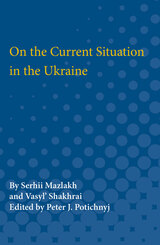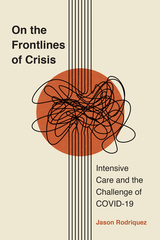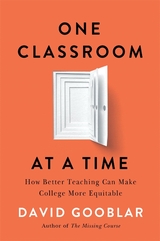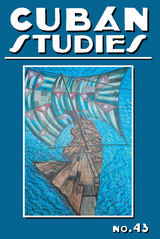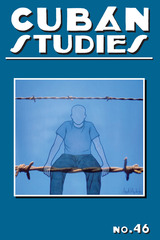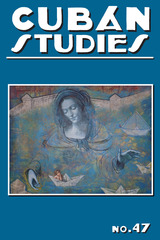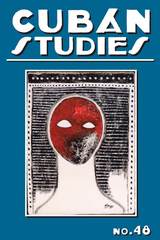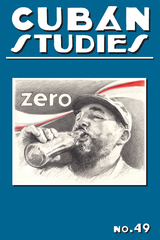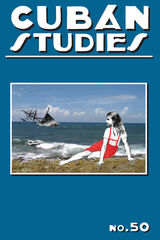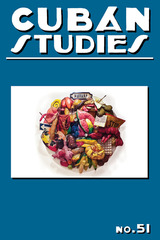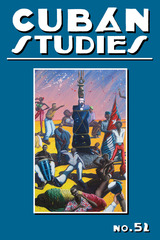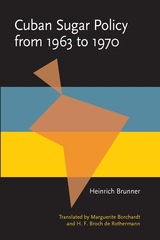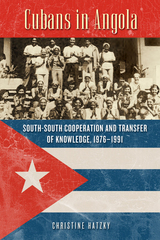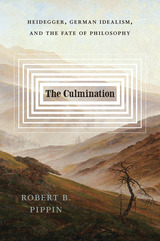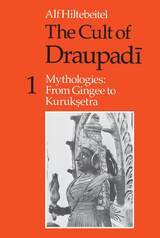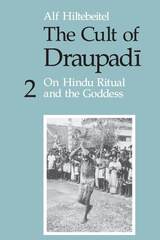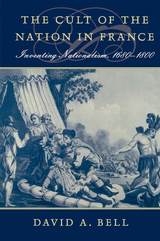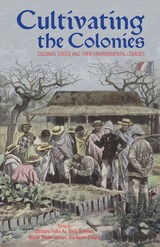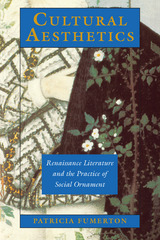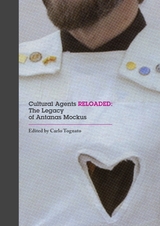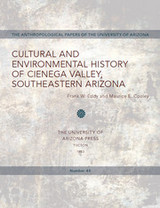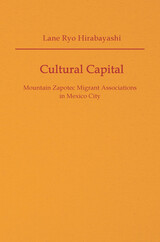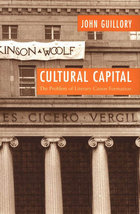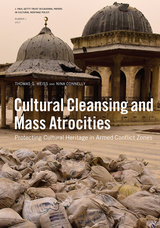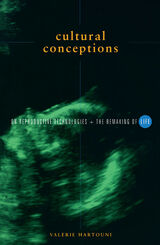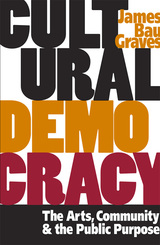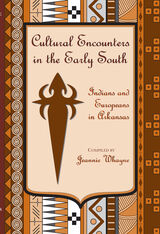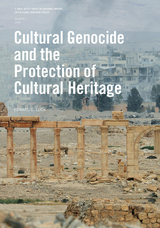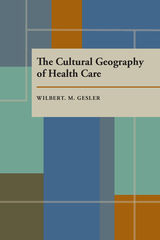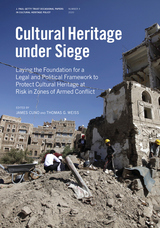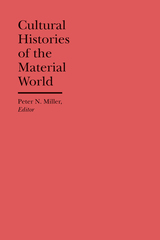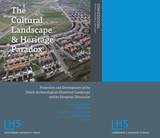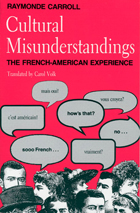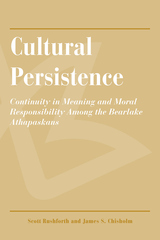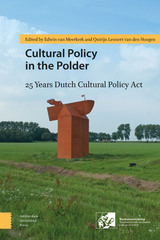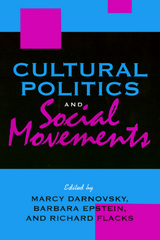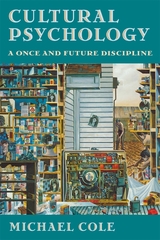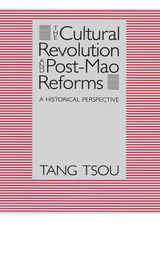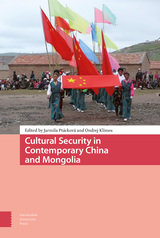Cuban Studies 43
Alejandro de la Fuente
University of Pittsburgh Press, 2015 Cuban Studies 43 is the first volume of the Cuban Studies series produced under a new editorial team based at Harvard University.
In addition to papers in history, culture and politics, this volume contains a central dossier on demography. This dossier charts some of the important changes experienced by the Cuban population—a concept that of course includes those living abroad—and some of the challenges posed by those changes (such as aging, or the changing composition of the expatriate community). A paper in the dossier looks carefully at infant mortality figures and raises poignant questions concerning methodologies and results.
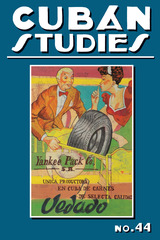 Cuban Studies 44
Alejandro de la Fuente
University of Pittsburgh Press, 2015 Cuban Studies is the preeminent journal for scholarly work on Cuba. Each volume includes articles in English and Spanish and a large book review section.
Cuban Studies 44 features a dossier on the Cuban economy that covers economic problems and causation since 2010 and their possible remedy; tax reform from 2010 to 2014; the reconfiguration of social and economic actors since 2011 and the prospects of a market economy; the functioning of state-owned companies within current restructuring policies; and changes in Cuba’s trade deficit since 2009. Other topics include the consequences of the “Special Period” and the de/reconstruction of the “New Socialist Man”; public health care policies in the post-Soviet era; the Wallace Stevens poem “Academic Discourse at Havana”; U.S. General Fitzhugh Lee’s role in Cuban independence; José Martí’s death as a myth of the Cuban nation-building project; “Operation Pedro Pan” and the framing of childhood memories in the Cuban American community; and the social and political control of nonconformists in 1960s Cuba.
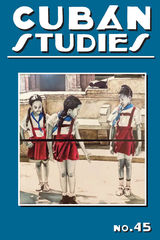 Cuban Studies 45
Alejandro de la Fuente
University of Pittsburgh Press, 2017 Cuban Studies is the preeminent journal for scholarly work on Cuba. Each volume includes articles in English and Spanish and a large book review section.
Cuban Studies 45 features two special dossiers: the first discusses the history and workings of the Cuban constitution and the need to revisit it along with civil and political rights; the second offers new perspectives on the history of health, medicine, and disease in Cuba, and views race as a factor in both infant mortality and tuberculosis from the early-to-mid twentieth century.
Additional essays discuss culture through poetry, higher education reform, the narratives of Lordes Casal, and filmmaker Jesús Díaz as an ‘unintentional deviationist.’ History is discussed vis-a-vis the radio politics of young Eddy Chibás, the slave abolitionist rhetoric of the Countess of Merlin, and the creole appropriation of Afro-Cuban dance and music to create sabor during the late nineteenth century.
Cuban Studies 46
Alejandro de la Fuente
University of Pittsburgh Press, 2018 Cuban Studies is the preeminent journal for scholarly work on Cuba. Each volume includes articles in English and Spanish and a large book review section.
Cuban Studies 46 includes a critical dossier on poet Lourdes Casal, with individual essays viewing the issues of race, feminism, and diaspora in her work. Additional essays address voices of economic change from the nonstate sector; cinema and church during the Special Period; and race, identity, and Cuban women’s activism in historic and cultural contexts.
Cuban Studies 47
Alejandro de la Fuente
University of Pittsburgh Press, 2018 Cuban Studies is the preeminent journal for scholarly work on Cuba. Each volume includes articles in English and Spanish and a large book review section. Cuban Studies 47 includes a dossier on cultural politics and political cultures of the Cuban Revolution.
Cuban Studies 48
Alejandro de la Fuente
University of Pittsburgh Press, 2019 Cuban Studies is the preeminent journal for scholarly work on Cuba. Each volume includes articles in English and Spanish and a large book review section. In this special issue, Cuban Studies 48 explores Afro-Cuban issues.
Cuban Studies 49
Alejandro de la Fuente
University of Pittsburgh Press, 2020 Cuban Studies is the preeminent journal for scholarly work on Cuba. Each volume includes articles in English and Spanish and a large book review section.
Cuban Studies 49 includes dossiers on gender and feminism, economy, and history of education.
Cuban Studies 50
Alejandro de la Fuente
University of Pittsburgh Press, 2020 Cuban Studies is the preeminent journal for scholarly work on Cuba. Each volume includes articles in English and Spanish and a large book review section. In publication since 1970, and under Alejandro de la Fuente’s editorial leadership since 2013, this interdisciplinary journal covers all aspects of Cuban history, politics, culture, diaspora, and more.
Cuban Studies 50 includes dossiers on new challenges in the private sector and communities of digital media sharing, along with reviews of nearly twenty new books.
Cuban Studies 51
Alejandro de la Fuente
University of Pittsburgh Press, 2021 Cuban Studies is the preeminent journal for scholarly work on Cuba. Each volume includes articles in English and Spanish and a large book review section. In publication since 1970, and under Alejandro de la Fuente’s editorial leadership since 2013, this interdisciplinary journal covers all aspects of Cuban history, politics, culture, diaspora, and more. Cuban Studies 51 includes a dossier on Cuban social history.
Cuban Studies 52
Alejandro de la Fuente
University of Pittsburgh Press, 2022 Cuban Studies is the preeminent journal for scholarly work on Cuba. Each volume includes articles in English and Spanish and a large book review section. In publication since 1970, and under Alejandro de la Fuente’s editorial leadership since 2013, this interdisciplinary journal covers all aspects of Cuban history, politics, culture, diaspora, and more. Issue 52 contains three dossiers: two on urban Habana and one on understandings of the Cuban Revolution in 1960s Latin America.
Cuban Studies 53
Alejandro de la Fuente
University of Pittsburgh Press, 2024 Cuban Studies is the preeminent journal for scholarly work on Cuba. Each volume includes articles in English and Spanish and a large book review section. In publication since 1970, and under Alejandro de la Fuente’s editorial leadership since 2013, this interdisciplinary journal covers all aspects of Cuban history, politics, culture, diaspora, and more. Issue 53 contains twelve articles and two sections of primary sources.
Cuban Studies 54
Alejandro de la Fuente
University of Pittsburgh Press, 2025 Cuban Studies is the preeminent journal for scholarly work on Cuba. Each volume includes articles in English and Spanish and a large book review section. In publication since 1970, and under Alejandro de la Fuente’s editorial leadership since 2013, this interdisciplinary journal covers all aspects of Cuban history, politics, culture, diaspora, and more. Issue 54 contains seven articles, a dossier on transition in Cuba, and two sections of primary sources.
Cuban Sugar Policy from 1963 to 1970: Translated by Marguerite Borchardt and H. F. Broch de Rothermann
Heinrich Brunner
University of Pittsburgh Press, 1977 In 1963 Cuba launched a program to develop its economy by expanding its sugar production and export trade. Cuban economists believed that through intensive development of this leading sector, they could generate capital to invest in manufacturing and thus move away from a one-crop economy.
After providing background information on Cuba's prerevolutionary economy, Brunner explores the effects of Communist ideology and the U.S. embargo on the country's resources and trade, and analyzes the problems Cuba faced in shifting from trade with the U.S. to trade with the Soviet Union and Soviet bloc. He evaluates their implementation of the development plan, assessing the sugar industry within Cuba as well as how its accelerated development affected the rest of the domestic economy.
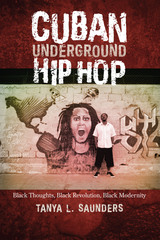 Cuban Underground Hip Hop: Black Thoughts, Black Revolution, Black Modernity
By Tanya L. Saunders
University of Texas Press, 2015 Honorable Mention, Barbara T. Christian Literary Award, Caribbean Studies Association, 2017 In the wake of the 1959 Cuban Revolution, a key state ideology developed: racism was a systemic cultural issue that ceased to exist after the Revolution, and any racism that did persist was a result of contained cases of individual prejudice perpetuated by US influence. Even after the state officially pronounced the end of racism within its borders, social inequalities tied to racism, sexism, and homophobia endured, and, during the economic liberalization of the 1990s, widespread economic disparities began to reemerge. Cuban Underground Hip Hop focuses on a group of self-described antiracist, revolutionary youth who initiated a social movement (1996–2006) to educate and fight against these inequalities through the use of arts-based political activism intended to spur debate and enact social change. Their “revolution” was manifest in altering individual and collective consciousness by critiquing nearly all aspects of social and economic life tied to colonial legacies. Using over a decade of research and interviews with those directly involved, Tanya L. Saunders traces the history of the movement from its inception and the national and international debates that it spawned to the exodus of these activists/artists from Cuba and the creative vacuum they left behind. Shedding light on identity politics, race, sexuality, and gender in Cuba and the Americas, Cuban Underground Hip Hop is a valuable case study of a social movement that is a part of Cuba’s longer historical process of decolonization.
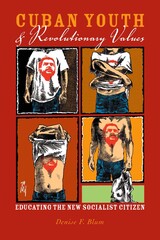 Cuban Youth and Revolutionary Values: Educating the New Socialist Citizen
By Denise F. Blum
University of Texas Press, 2011 Drawing on extensive fieldwork in Havana's secondary schools, Cuban Youth and Revolutionary Values is a remarkable ethnography, charting the government's attempts to transform a future generation of citizens. While Cuba's high literacy rate is often lauded, the little-known dropout rates among teenagers receive less scrutiny. In vivid, succinct reporting, educational anthropologist Denise Blum now shares her findings regarding this overlooked aspect of the Castro legacy. Despite the fact that primary-school enrollment rates exceed those of the United States, the reverse is true for the crucial years between elementary school and college. After providing a history of Fidel Castro's educational revolution begun in 1953, Denise Blum delivers a close examination of the effects of the program, which was designed to produce a society motivated by benevolence rather than materialism. Exploring pioneering pedagogy, the notion of civic education, and the rural components of the program, Cuban Youth and Revolutionary Values brims with surprising findings about one of the most intriguing social experiments in recent history.
Cubans in Angola: South-South Cooperation and Transfer of Knowledge, 1976–1991
Christine Hatzky
University of Wisconsin Press, 2015 Angola, a former Portuguese colony in southern central Africa, gained independence in 1975 and almost immediately plunged into more than two decades of conflict and crisis. Fidel Castro sent Cuban military troops to Angola in support of the Movimento Popular de Libertação de Angola (MPLA), leading to its ascension to power despite facing threats both international and domestic. What is less known, and what Cubans in Angola brings to light, is the significant role Cubans played in the transformation of civil society in Angola during these years. Offering not just military support but also political, medical, administrative, and technical expertise as well as educational assistance, the Cuban presence in Angola is a unique example of transatlantic cooperation between two formerly colonized nations in the global South.
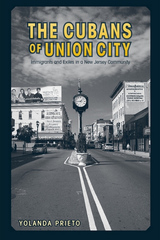 The Cubans of Union City: Immigrants and Exiles in a New Jersey Community
Yolanda Prieto
Temple University Press, 2009 As a result of the conflicts between Cuba and the United States, especially after 1959, Cubans immigrated in great numbers. Most stayed in Miami, but many headed north to Union City, making it second only to Miami in its concentration of Cubans. In The Cubans of Union City, Yolanda Prieto discusses why Cubans were drawn to this particular city and how the local economy and organizations developed. Central aspects of this story are the roles of women, religion, political culture, and the fact of exile itself. As a member of this community and a participant in many of its activities, Prieto speaks with special authority about its demographic uniqueness. Far from being a snapshot of the community, The Cubans of Union City conveys an ongoing research agenda extending over more than twenty years, from 1959 to the 1980s. As a long-term observer who was also a resident, Prieto offers a unique and insightful view of the dynamics of this community’s evolution.
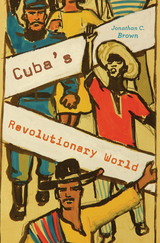 Cuba’s Revolutionary World
Jonathan C. Brown
Harvard University Press, 2017 On January 2, 1959, Fidel Castro, the rebel comandante who had just overthrown Cuban dictator Fulgencio Batista, addressed a crowd of jubilant supporters. Recalling the failed popular uprisings of past decades, Castro assured them that this time “the real Revolution” had arrived. As Jonathan Brown shows in this capacious history of the Cuban Revolution, Castro’s words proved prophetic not only for his countrymen but for Latin America and the wider world.
Cuba’s Revolutionary World examines in forensic detail how the turmoil that rocked a small Caribbean nation in the 1950s became one of the twentieth century’s most transformative events. Initially, Castro’s revolution augured well for democratic reform movements gaining traction in Latin America. But what had begun promisingly veered off course as Castro took a heavy hand in efforts to centralize Cuba’s economy and stamp out private enterprise. Embracing the Soviet Union as an ally, Castro and his lieutenant Che Guevara sought to export the socialist revolution abroad through armed insurrection.
Castro’s provocations inspired intense opposition. Cuban anticommunists who had fled to Miami found a patron in the CIA, which actively supported their efforts to topple Castro’s regime. The unrest fomented by Cuban-trained leftist guerrillas lent support to Latin America’s military castes, who promised to restore stability. Brazil was the first to succumb to a coup in 1964; a decade later, military juntas governed most Latin American states. Thus did a revolution that had seemed to signal the death knell of dictatorship in Latin America bring about its tragic opposite.
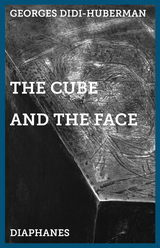 The Cube and the Face: Around a Sculpture by Alberto Giacometti
Georges Didi-Huberman. Edited by Mira Fliescher and Elena Vogman
Diaphanes, 2015 Alberto Giacometti’s 1934 Cube stands apart for many as atypical of the Swiss artist, the only abstract sculptural work in a wide oeuvre that otherwise had as its objective the exploration of reality.
With The Cube and the Face, renowned French art historian and philosopher Georges Didi-Huberman has conducted a careful analysis of Cube, consulting the artist’s sketches, etchings, texts, and other sculptural works in the years just before and after Cube was created. Cube, he finds, is indeed exceptional—a work without clear stylistic kinship to the works that came before or after it. At the same time, Didi-Huberman shows, Cube marks the transition between the artist’s surrealist and realist phases and contains many elements of Giacometti’s aesthetic consciousness, including his interest in dimensionality, the relation of the body to geometry, and the portrait—or what Didi-Huberman terms “abstract anthropomorphism.” Drawing on Freud, Bataille, Leiris, and others Giacometti counted as influence, Didi-Huberman presents fans and collectors of Giacometti’s art with a new approach to transitional work.
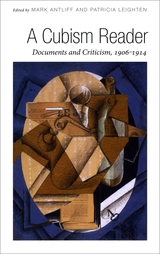 A Cubism Reader: Documents and Criticism, 1906-1914
Mark Antliff and Patricia Leighten
University of Chicago Press, 2008 With radical formal innovations that scandalized the European art world, cubism revolutionized modern art and opened the path toward pure abstraction. Documenting the first heady years of this profoundly influential movement, A Cubism Reader presents the most comprehensive collection of cubist primary sources ever compiled for English-language publication.
This definitive anthology covers the historical genesis of cubism from 1906 to 1914, with documents that range from manifestos and poetry to exhibition prefaces and reviews to articles that address the cultural, political, and philosophical issues related to the movement. Most of the texts Mark Antliff and Patricia Leighten have selected are from French sources, but their inclusion of carefully culled German, English, Czech, Italian, and Spanish documents speaks to the international reach of cubist art and ideas. Equally wide-ranging are the writers represented—a group that includes Guillaume Apollinaire, Gertrude Stein, Jean Metzinger, Albert Gleizes, Fernand Léger, Francis Picabia, André Salmon, Raymond Duchamp-Villon, Henri Le Fauconnier, and many others.
These diverse selections—unabridged and freshly translated—represent a departure from the traditional view of cubism as shaped almost exclusively by Picasso and Braque. Augmented by Antliff and Leighten’s insightful commentary on each entry, as well as many of the articles’ original illustrations, A Cubism Reader ultimately broadens the established history of the movement by examining its monumental contributions from a variety of contemporary perspectives.
Cubs' Fans Leadership Secrets: Learning to Win From a Cursed Team's Errors
John Charles Kunich and Richard I. Lester
Parkhurst Brothers, Inc., 2009 The Manager's Guide for Staying in First Place ... and the worker's guide for becoming a manager!
Cubs fans have often focused on one or two star performers, to the detriment of the team's overall performance.
Stars have often been selfish and devoted to their own success. Leaders have toleratged them, often at a price
to the whole team. Effective leadership recognizes the dangers in this situation. Here's their antidote--in a
highly-readable book that's hot off the press! Foreword by bestselling-author Ken Blanchard.
 Cuchama and Sacred Mountains
Walter Y. Evans-Wentz
Ohio University Press, 1981 W. Y. Evans–Wentz, great Buddhist scholar and translator of such now familiar works as the Tibetan Book of the Dead and the Tibetan Book of the Great Liberation, spent his final years in California. There, in the shadow of Cuchama, one of the Earth’s holiest mountains, he began to explore the astonishing parallels between the spiritual teaching of America’s native peoples and that of the deeply mystical Hindus and Tibetans. Cuchama and Sacred Mountains, a book completed shortly before his death in 1965, is the fruit of those explorations. To Cuchama, “Exalted High Place,” came the young Cochimi and Yuma boys for initiation into the mystic rites for their people. In solitude they sought and received guidance and wisdom. In this same way, the peoples of ancient Greece, the Hebrews, the early Christians, and the Hindus had found access to inner truth on their own holy mountains: and in this same way must the modern person find the path to inner knowing. Surveying many of the most Sacred Mountains in North America, South America, Europe, and Asia, Evans–Wentz expresses the belief that the secret power of these high places has not passed away but only awaits the coming of a New Age. This new age, in accord with the oldest prophecies of our continent, will be a time of renaissance, the long–waited era of harmony and peace among all peoples. This renaissance shall be uniquely American, a renewal based on the values so long honored by the Americans before Columbus, and so ruthlessly trampled by the “civilized” Europeans who overran them. No other race of people has been as spiritual in their way of life than the original Americans, notes Evans–Wentz. Perhaps none other has known such martyrdom. Yet the secret greatness of the Indian religion still lives, ancient as the Earth itself, yet ageless in its power to renew.
 The Cue for Passion: Grief and Its Political Uses
Gail Holst-Warhaft
Harvard University Press, 2000 Having set aside age-old ways of mourning, how do people in the modern world cope with tragic loss? Using traditional mourning rituals as an instructive touchstone, Gail Holst-Warhaft explores the ways sorrow is managed in our own times and how mourning can be manipulated for social and political ends.
Since ancient times political and religious authorities have been alert to the dangerously powerful effects of communal expressions of grief--while valuing mourning rites as a controlled outlet for emotion. But today grief is often seen as a psychological problem: the bereaved are encouraged to seek counseling or take antidepressants. At the same time, we have witnessed some striking examples of manipulation of shared grief for political effect. One instance is the unprecedented concentration on recovery of the remains of Americans killed in the Vietnam War. In Buenos Aires the Mothers of the Disappeared forged the passion of their grief into a political weapon. Similarly the gay community in the United States, transformed by grief and rage, not only lobbied effectively for AIDS victims but channeled their emotions into fresh artistic expression.
It might be argued that, in contrast to earlier cultures, modern society has largely abdicated its role in managing sorrow. But in The Cue for Passion we see that some communities, moved by the intensity of their grief, have utilized it to gain ground for their own agendas.
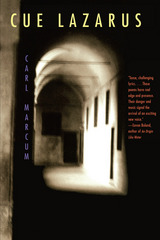 Cue Lazarus
Carl Marcum
University of Arizona Press, 2001 A '77 Pinto. Two boys "a few months from their driver's license." And in the back seat, a ghost of the present observing this scene refracted by memory.
In this collection of poetry by Carl Marcum, a young man traces his rise to consciousness, his coming of age in the Southwest as a medio, an individual of mixed race. Displaying his Hispanic heritage as fact, emblem, and music in his poems, Marcum balances hip humor with larger themes of loss and reinvention to paint a work of seriousness and imagination, wrestling sense from the giddy rush of experience. The lead poem, "Cue Lazarus," conveys the sense of loss that permeates the collection, revisiting time the author spent with a friend he now knows will die. It sets the tone for the explorations to follow as the poet haunts his past: death, traumatic experience, the uneasiness that comes from being unable to forestall tragedy, all combine to create a sense of paradox, that he who endures becomes a ghost compelled to haunt his own life.
As poetry becomes a subtle game of language, experience is refigured as an array of possibilities; Marcum finds meaning and epiphany through close observation as he revels in images of constant motion and sustained search. Here is a suite in celebration of Chevys ("That Camaro ran nearly on machismo alone") and a prayer for breakfast ("I'd like to renounce the salt and pepper shakers / of this life. But the eggs are here / twelve lines into this poem / and getting cold"). He dreams of himself as Pancho Villa, "my poetry at the end of a pistol," and invokes the spirits of poets past, "beggars on the media of Limbo, holding shabby signs: WILL WORK FOR TRUTH."
Ultimately, Cue Lazarus is about resurrection—of the spirit, of a life, of an identity. It marks the emergence of a vital new voice that, in baring his soul, reveals lessons as old as time.
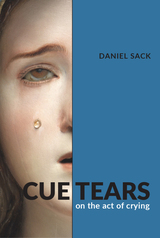 Cue Tears: On the Act of Crying
Daniel Sack
University of Michigan Press, 2024 Crying holds a privileged place in conversations around emotions as an expression of authentic feeling. And yet, tears are ambiguous: they might signal the most positive and negative of affects; they might present a sincere revelation of self or be simulated to manipulate others. Unsurprisingly, tears figure prominently on stage and on screen, where actors have experimented with the mechanics of making tears. Cue Tears: On the Act of Crying uses tears as a prism through which to see some of the foundational problems and paradoxes of acting and spectatorship anew, including matters of authenticity and sincerity, the ethics of the witness, the interaction between a speech act and its affective force, liveness and documentation.
Across seven semi-autonomous essays, Cue Tears looks at the mechanisms of tear production, internal and external techniques that actors use to weep, and the effects of tears in performance situations on the stage, in the gallery, and in the classroom. The writing moves with a light touch between theory and criticism of a broad range of instances from literature, theater, performance art, visual art, and cinema, while also embracing a strong autobiographical and personal slant. Author Daniel Sack’s father was a biochemist who studied tears and collected his son’s tears for research during his childhood. These “reflex tears” were produced as a physical response to irritation—an eye stretched past the point of blinking, a cotton swab up the nose. This childhood occupation coincided with his first years taking acting classes, trying to learn how to cry “emotional tears” onstage through psychological stimulation and the recollection of memory. Cue Tears investigates these memories and methods, finding that tears both shore up and dissolve distinctions between truth and artifice, emotional and physical, private and public, sad and humorous.
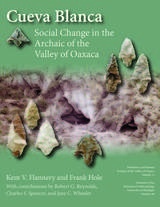 Cueva Blanca: Social Change in the Archaic of the Valley of Oaxaca
Kent V. Flannery and Frank Hole
University of Michigan Press, 2019 Cueva Blanca lies in a volcanic tuff cliff some 4 km northwest of Mitla, Oaxaca, Mexico. It is one of a series of Archaic sites excavated by Kent Flannery and Frank Hole as part of a project on the prehistory and human ecology of the Valley of Oaxaca. The oldest stratigraphic level in Cueva Blanca yielded Late Pleistocene fauna, including some species no longer present in southern Mexico. The second oldest level, Zone E, produced Early Archaic material with calibrated dates as old as 11,000–10,000 BC . Zones D and C provided a rich Late Archaic assemblage whose closest ties are with the Abejas phase of Puebla’s Tehuacán Valley (fourth millennium BC). Spatial analyses undertaken on the Archaic living floors include (1) the drawing of density contours for tools and animal bones; (2) a search for Archaic tool kits using rank-order and cluster analysis; and (3) an attempt to define Binfordian “drop zones” using an approach drawn from computer vision.
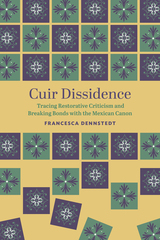 Cuir Dissidence: Tracing Restorative Criticism and Breaking Bonds with the Mexican Canon
Francesca Dennstedt
Vanderbilt University Press, 2025 In Cuir Dissidence, Francesca Dennstedt uses affect and queer feminist theory to rethink the boundaries and hierarchies of the Mexican literary canon. Steeped in ideas of male genius and intrinsic aesthetic quality, the canon has long marginalized women writers by overlooking their contributions or placing their work into literary categories that perpetuate stereotypes about femininity. In response to this history of erasure and neglect, Dennstedt shows how women writers who identify as non-heterosexual or whose work is focused on critique of heteropatriarchal power structures have challenged the very idea of the canon through affect and non-conformity. Over the course of four chapters, she examines how writers like Inés Arredondo, Rosa Maria Roffiel, and Cristina Rivera Garza employ alternative sexual intimacies, gender dissidence, collective authorship, and experimental blending of genres to actively reject the canon. In addition to these creative readings of Mexican women writers, Dennstedt centers her own affective response to these texts to further challenge the traditional boundaries of literary criticism. The book thus prompts readers to see the intellectual project of these writers as a premeditated act of rebellion, one that can help deconstruct the power structures deeply ingrained in Mexican literature written in Spanish and create a space for these voices to flourish across time.
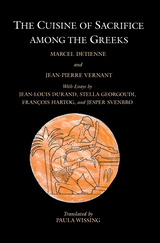 The Cuisine of Sacrifice among the Greeks
Marcel Detienne and Jean-Pierre Vernant
University of Chicago Press, 1989 For the Greeks, the sharing of cooked meats was the fundamental communal act, so that to become vegetarian was a way of refusing society. It follows that the roasting or cooking of meat was a political act, as the division of portions asserted a social order. And the only proper manner of preparing meat for consumption, according to the Greeks, was blood sacrifice.
The fundamental myth is that of Prometheus, who introduced sacrifice and, in the process, both joined us to and separated us from the gods—and ambiguous relation that recurs in marriage and in the growing of grain. Thus we can understand why the ascetic man refuses both women and meat, and why Greek women celebrated the festival of grain-giving Demeter with instruments of butchery.
The ambiguity coded in the consumption of meat generated a mythology of the "other"—werewolves, Scythians, Ethiopians, and other "monsters." The study of the sacrificial consumption of meat thus leads into exotic territory and to unexpected findings.
In The Cuisine of Sacrifice, the contributors—all scholars affiliated with the Center for Comparative Studies of Ancient Societies in Paris—apply methods from structural anthropology, comparative religion, and philology to a diversity of topics: the relation of political power to sacrificial practice; the Promethean myth as the foundation story of sacrificial practice; representations of sacrifice found on Greek vases; the technique and anatomy of sacrifice; the interaction of image, language, and ritual; the position of women in sacrificial custom and the female ritual of the Thesmophoria; the mythical status of wolves in Greece and their relation to the sacrifice of domesticated animals; the role and significance of food-related ritual in Homer and Hesiod; ancient Greek perceptions of Scythian sacrificial rites; and remnants of sacrificial ritual in modern Greek practices.
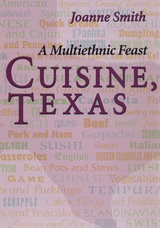 Cuisine, Texas: A Multiethnic Feast
By Joanne Smith
University of Texas Press, 1995 People from around the world have found a home in Texas, bringing with them a multiethnic feast replete with dishes that originated in Mexico, Europe, Africa, the Middle East, and Asia. In these pages you'll discover a magical place called Cuisine, Texas, where you can find all these favorite family recipes in one handy source. Noted food writer Joanne Smith spent several years gathering the traditional recipes of every major ethnic group in Texas. As a result, Cuisine, Texas is a virtual encyclopedia of Texas cooking, with more than 375 recipes drawn from Native American, Spanish, Japanese, French, Cajun, Mexican, Tex-Mex, Anglo-American, African American, Thai, Czech, Swiss, Dutch, Jewish, Greek, German, Polish, Italian, British, Lebanese, Chinese, Russian, Vietnamese, and Scandinavian cooking. The recipes cover the full range of foods, from appetizers to entrees, salads, vegetables, breads, and desserts, and all have clear, simple-to-follow instructions. Interspersed among them are engaging discussions of the different ethnic cuisines, flavored with delightful stories of some of the cooks who created or perfected the recipes. And to make your cooking even easier, Joanne Smith includes information on how to readily find imported and specialized ingredients and a word about health-conscious substitutions. Cuisine, Texas, may not exist on the map, but it can be found everywhere that people enjoy good food and the fellowship that goes with it. Let this book be your one-stop source for all the tastes of Texas.
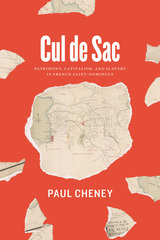 Cul de Sac: Patrimony, Capitalism, and Slavery in French Saint-Domingue
Paul Cheney
University of Chicago Press, 2017 In the eighteenth century, the Cul de Sac plain in Saint-Domingue, now Haiti, was a vast open-air workhouse of sugar plantations. This microhistory of one plantation owned by the Ferron de la Ferronnayses, a family of Breton nobles, draws on remarkable archival finds to show that despite the wealth such plantations produced, they operated in a context of social, political, and environmental fragility that left them weak and crisis prone.
Focusing on correspondence between the Ferronnayses and their plantation managers, Cul de Sac proposes that the Caribbean plantation system, with its reliance on factory-like production processes and highly integrated markets, was a particularly modern expression of eighteenth-century capitalism. But it rested on a foundation of economic and political traditionalism that stymied growth and adaptation. The result was a system heading toward collapse as planters, facing a series of larger crises in the French empire, vainly attempted to rein in the inherent violence and instability of the slave society they had built. In recovering the lost world of the French Antillean plantation, Cul de Sac ultimately reveals how the capitalism of the plantation complex persisted not as a dynamic source of progress, but from the inertia of a degenerate system headed down an economic and ideological dead end.
 The Culinarians: Lives and Careers from the First Age of American Fine Dining
David S. Shields
University of Chicago Press, 2017 He presided over Virginia’s great political barbeques for the last half of the nineteenth century, taught the young Prince of Wales to crave mint juleps in 1859, catered to Virginia’s mountain spas, and fed two generations of Richmond epicures with terrapin and turkey.
This fascinating culinarian is John Dabney (1821–1900), who was born a slave, but later built an enterprising catering business. Dabney is just one of 175 influential cooks and restaurateurs profiled by David S. Shields in The Culinarians, a beautifully produced encyclopedic history of the rise of professional cooking in America from the early republic to Prohibition.
Shields’s concise biographies include the legendary Julien, founder in 1793 of America’s first restaurant, Boston’s Restorator; and Louis Diat and Oscar of the Waldorf, the men most responsible for keeping the ideal of fine dining alive between the World Wars. Though many of the gastronomic pioneers gathered here are less well known, their diverse influence on American dining should not be overlooked—plus, their stories are truly entertaining. We meet an African American oyster dealer who became the Congressional caterer, and, thus, a powerful broker of political patronage; a French chef who was a culinary savant of vegetables and drove the rise of California cuisine in the 1870s; and a rotund Philadelphia confectioner who prevailed in a culinary contest with a rival in New York by staging what many believed to be the greatest American meal of the nineteenth century. He later grew wealthy selling ice cream to the masses. Shields also introduces us to a French chef who brought haute cuisine to wealthy prospectors and a black restaurateur who hosted a reconciliation dinner for black and white citizens at the close of the Civil War in Charleston.
Altogether, Culinarians is a delightful compendium of charcuterie-makers, pastry-pipers, caterers, railroad chefs, and cooking school matrons—not to mention drunks, temperance converts, and gangsters—who all had a hand in creating the first age of American fine dining and its legacy of conviviality and innovation that continues today.
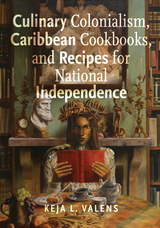 Culinary Colonialism, Caribbean Cookbooks, and Recipes for National Independence
Keja L. Valens
Rutgers University Press, 2024 Women across the Caribbean have been writing, reading, and exchanging cookbooks since at least the turn of the nineteenth century. These cookbooks are about much more than cooking. Through cookbooks, Caribbean women, and a few men, have shaped, embedded, and contested colonial and domestic orders, delineated the contours of independent national cultures, and transformed tastes for independence into flavors of domestic autonomy. Culinary Colonialism, Caribbean Cookbooks, and Recipes for National Independence integrates new documents into the Caribbean archive and presents them in a rare pan-Caribbean perspective. The first book-length consideration of Caribbean cookbooks, Culinary Colonialism joins a growing body of work in Caribbean studies and food studies that considers the intersections of food writing, race, class, gender, and nationality. A selection of recipes, culled from the archive that Culinary Colonialism assembles, allows readers to savor the confluence of culinary traditions and local specifications that connect and distinguish national cuisines in the Caribbean.
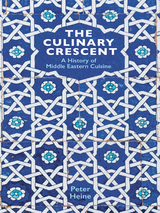 The Culinary Crescent: A History of Middle Eastern Cuisine
Peter Heine
Gingko, 2018 The Fertile Crescent region—the swath of land comprising a vast portion of today’s Middle East—has long been regarded as pivotal to the rise of civilization. Alongside the story of human development, innovation, and progress, there is a culinary tradition of equal richness and importance.
In The Culinary Crescent: A History of Middle Eastern Cuisine, Peter Heine combines years of scholarship with a personal passion: his knowledge of the cookery traditions of the Umayyad, Abbasid, Ottoman, Safavid, and Mughal courts is matched only by his love for the tastes and smells produced by the contemporary cooking of these areas today. In addition to offering a fascinating history, Heine presents more than one hundred recipes—from the modest to the extravagant—with dishes ranging from those created by the “celebrity chefs” of the bygone Mughal era, up to gastronomically complex presentations of modern times.
Beautifully produced, designed for both reading and cooking, and lavishly illustrated in color throughout, The Culinary Crescent is sure to provide a delectable window in the history of food in the Middle East.
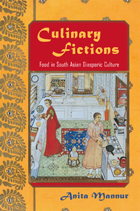 Culinary Fictions: Food in South Asian Diasporic Culture
Anita Mannur
Temple University Press, 2009 For South Asians, food regularly plays a role in how issues of race, class, gender, ethnicity, and national identity are imagined as well as how notions of belonging are affirmed or resisted. Culinary Fictions provides food for thought as it considers the metaphors literature, film, and TV shows use to describe Indians abroad. When an immigrant mother in Jhumpa Lahiri’s The Namesake combines Rice Krispies, Planters peanuts, onions, salt, lemon juice, and green chili peppers to create a dish similar to one found on Calcutta sidewalks, it evokes not only the character’s Americanization, but also her nostalgia for India. Food, Anita Mannur writes, is a central part of the cultural imagination of diasporic populations, and Culinary Fictions maps how it figures in various expressive forms. Mannur examines the cultural production from the Anglo-American reaches of the South Asian diaspora. Using texts from novels—Chitra Divakaruni’s Mistress of Spices and Shani Mootoo’s Cereus Blooms at Night—and cookbooks such as Madhur Jaffrey’s Invitation to Indian Cooking and Padma Lakshmi’s Easy Exotic, she illustrates how national identities are consolidated in culinary terms.
 Culinary Herbs and Spices of the World
Ben-Erik van Wyk
University of Chicago Press, 2014 For centuries herbs and spices have been an integral part of many of the world’s great cuisines. But spices have a history of doing much more than adding life to bland foods. They have been the inspiration for, among other things, trade, exploration, and poetry. Priests employed them in worship, incantations, and rituals, and shamans used them as charms to ward off evil spirits. Nations fought over access to and monopoly of certain spices, like cinnamon and nutmeg, when they were rare commodities. Not only were many men’s fortunes made in the pursuit of spices, spices at many periods throughout history literally served as currency. In Culinary Herbs and Spices of the World, Ben-Erik van Wyk offers the first fully illustrated, scientific guide to nearly all commercial herbs and spices in existence. Van Wyk covers more than 150 species—from black pepper and blackcurrant to white mustard and white ginger—detailing the propagation, cultivation, and culinary uses of each. Introductory chapters capture the essence of culinary traditions, traditional herb and spice mixtures, preservation, presentation, and the chemistry of flavors, and individual entries include the chemical compounds and structures responsible for each spice or herb’s characteristic flavor. Many of the herbs and spices van Wyk covers are familiar fixtures in our own spice racks, but a few—especially those from Africa and China—will be introduced for the first time to American audiences. Van Wyk also offers a global view of the most famous use or signature dish for each herb or spice, satisfying the gourmand’s curiosity for more information about new dishes from little-known culinary traditions. People all over the world are becoming more sophisticated and demanding about what they eat and how it is prepared. Culinary Herbs and Spices of the World will appeal to those inquisitive foodies in addition to gardeners and botanists.
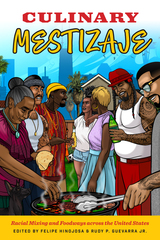 Culinary Mestizaje: Racial Mixing and Foodways across the United States
Edited by Felipe Hinojosa and Rudy P. Guevarra Jr.
University of Texas Press, 2025 How cross-racial and ethnic communities have created new culinary traditions and food cultures in the United States. Culinary Mestizaje is about food, cooking, and community, but it’s also about how immigrant labor and racial mixing are transforming established US food cultures from Hawai’i to the coast of Maine, South Philadelphia to the Pacific Northwest. This collection of essays asks what it means that Chamorro cooking is now considered a regional specialty of the Bay Area, and that a fusion like brisket tacos registers as “native” to Houston, while pupusas are the pride of Atlanta. Combining community scholarly insights, cooking tips, and recipes, the pieces assembled here are interested in how the blending of culinary traditions enables marginalized people to thrive in places fraught with racial tension, anti-immigrant sentiment, and the threat of gentrification. Chefs and entrepreneurs matter in these stories, but so do dishwashers, farm laborers, and immigrants doing the best they can with the ingredients they have. Their best, it turns out, is often delicious and creative, sparking culinary evolutions while maintaining ancestral connections. The result is that cooking under the weight of colonial rule and white supremacy has, in revealing ways, created American food.
 Culinary Palettes: The Visuality of Food in Postrevolutionary Mexican Art
Lesley A. Wolff
University of Texas Press, 2025 How the visual culture of food, cookery, and consumption played a central role in the making of postrevolutionary Mexico. Postrevolutionary Mexico City was a site of anxious nation-building, as rampant modernization converged and clashed with the nation’s growing nostalgia for its pre-Columbian heritage. During this volatile period, food became a meaningful symbol for a Mexican citizenry seeking new modes of national participation. Culinary Palettes explores how the artistic invocation of food cultures became an arena in which to negotiate the political entanglements of postrevolutionary Mexico. Lesley Wolff casts a nuanced eye on the work of visual artists such as Tina Modotti, Carlos González, and Rufino Tamayo, who nurtured the symbolic and performative power of iconic foods such as pulque, mole poblano, and watermelon. Through analysis of a wide array of visual evidence, including paintings, architecture, vintage postcards, menus, and cookbooks, Culinary Palettes demonstrates how these artists positioned their work within a broad visual landscape that relied upon the power of Mexican foodways in the urban and national imagination. In the studios of modernists, Wolff argues, artistic production, foodways, and Indigeneity proved to be mutually constitutive—and at times weaponized—agents in articulating competing claims to a new nationhood.
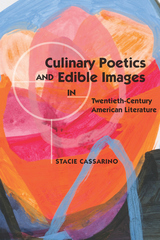 Culinary Poetics and Edible Images in Twentieth-Century American Literature
Stacie Cassarino
Ohio State University Press, 2018 In her new study, Culinary Poetics and Edible Images in Twentieth-Century American Literature, Stacie Cassarino traces the tradition of avant-garde food experimentation across the twentieth and twenty-first centuries to show how a fixation on the materiality of edible things, expressed through the language of food, became a way for American writers to respond to the culinary, political, and aesthetic tastes of the nation.
Cassarino takes the reader through the changing dynamics of food production and consumption, from wartime sensibilities of patriotic eating to the postwar excess of culinary cosmopolitanism and finally to contemporary supermarket pastorals. She pairs chefs and poets—Julia Child and Gertrude Stein, Poppy Cannon and Frank O’Hara, Vertamae Smart-Grosvenor and Harryette Mullen—to argue that each converts eating into an aesthetic opportunity that has the power to impact how people consume. In this way, Cassarino reveals the modern cookbook not just as a literary counterpart to contemporary poetry but also as vital to the literature and art occurring around it. From Futurist cookbooks to fast food lyrics, from Gullah recipes to Eat Art, she reminds us that global foodscapes are connected to aesthetic movements in literature and art.
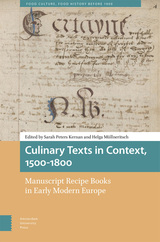 Culinary Texts in Context, 1500–1800: Manuscript Recipe Books in Early Modern Europe
Sarah Kernan
Amsterdam University Press, 2024 This collection represents a new and significant contribution to the study of recipe books from the early modern period (ca. 1500–1800) by situating them in a broader European context, traversing Catalonia, Finland, French and German-speaking regions, Ireland, Portugal, Spain, Sweden, and England. Ten essays, including a critical introduction to the genre, trace the materiality of the books and the use of the instructions therein, investigating patterns of recipe collection and their evolution over time; the international transmission of recipes, ingredients, and artisanal knowledge; and women’s manuscript culture. The authors explore how localised traditions of book production and domestic record-keeping shaped the physical forms of the books, and how stains, folds, marginalia, items pressed between pages, and pasted-in additions reveal their many uses. The inclusion of new ingredients and the integration of foreign recipes point to the many ways in which people, food, ideas, and books travelled the globe.
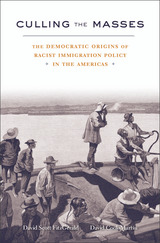 Culling the Masses: The Democratic Origins of Racist Immigration Policy in the Americas
David Scott FitzGerald and David Cook-Martín
Harvard University Press, 2014 Culling the Masses questions the widely held view that in the long run democracy and racism cannot coexist. David Scott FitzGerald and David Cook-Martín show that democracies were the first countries in the Americas to select immigrants by race, and undemocratic states the first to outlaw discrimination. Through analysis of legal records from twenty-two countries between 1790 and 2010, the authors present a history of the rise and fall of racial selection in the Western Hemisphere.
The United States led the way in using legal means to exclude “inferior” ethnic groups. Starting in 1790, Congress began passing nationality and immigration laws that prevented Africans and Asians from becoming citizens, on the grounds that they were inherently incapable of self-government. Similar policies were soon adopted by the self-governing colonies and dominions of the British Empire, eventually spreading across Latin America as well.
Undemocratic regimes in Chile, Uruguay, Paraguay, and Cuba reversed their discriminatory laws in the 1930s and 1940s, decades ahead of the United States and Canada. The conventional claim that racism and democracy are antithetical—because democracy depends on ideals of equality and fairness, which are incompatible with the notion of racial inferiority—cannot explain why liberal democracies were leaders in promoting racist policies and laggards in eliminating them. Ultimately, the authors argue, the changed racial geopolitics of World War II and the Cold War was necessary to convince North American countries to reform their immigration and citizenship laws.
The Culmination: Heidegger, German Idealism, and the Fate of Philosophy
Robert B. Pippin
University of Chicago Press, 2024 A provocative reassessment of Heidegger’s critique of German Idealism from one of the tradition’s foremost interpreters.
Heidegger claimed that Western philosophy ended—failed, even—in the German Idealist tradition. In The Culmination, Robert B. Pippin explores the ramifications of this charge through a masterful survey of Western philosophy, especially Heidegger’s critiques of Hegel and Kant. Pippin argues that Heidegger’s basic concern was to determine sources of meaning for human life, particularly those that had been obscured by Western philosophy’s attention to reason. The Culmination offers a new interpretation of Heidegger, German Idealism, and the fate of Western rationalism.
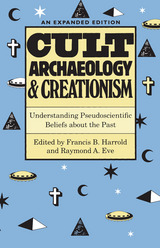 Cult Archaeology and Creationism: Understanding Pseudoscientific Beliefs about the Past
Francis B. Harrold
University of Iowa Press, 1995 UFOs and aliens, unexplained mysteries, religious cults, diffusion, creationism. We are all familiar with beliefs about human life that lie outside traditional scientific boundaries. Notions such as these are considered reasonable by vast numbers of us in the Western world, in our modern “technological” and “educated” cultures. Understanding why this should be so and how we as a society might deal with these widespread pseudoscientific beliefs are the subjects at the heart of this study. The authors—specialists in anthropology, archaeology, sociology, psychology, and history—explore creationism, which claims that there is evidence to support a literal interpretation of the origins of the world and of humanity as narrated in the Book of Genesis, and cult archaeology, which encompasses a wide range of fantastic beliefs about our past. Cult Archaeology and Creationism contains several essays on the history of pseudoscientific beliefs and their current manifestations as well as the results of a unique research project in which students at five campuses across the country were asked about their beliefs and about such background factors as their school experience and religious faith. This expanded edition also includes two new essays, one on Afrocentrism and another that views cult archaeology and creationism in the 1990s and beyond.
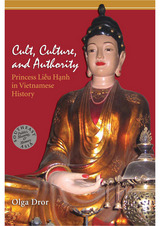 Cult, Culture and Authority: Princess Lieu Hanh in Vietnamese History
Olga Dror
University of Hawaii Press, 2007 Princess Liễu Hạnh, often called the Mother of the Vietnamese people by her followers, is one of the most prominent goddesses in Vietnamese popular religion. First emerging some four centuries ago as a local sect appealing to women, the princess’ cult has since transcended its geographical and gender boundaries and remains vibrant today. Who was this revered deity? Was she a virtuous woman or a prostitute? Why did people begin worshiping her and why have they continued? Cult, Culture, and Authority traces Liễu Hạnh’s cult from its ostensible appearance in the sixteenth century to its present-day prominence in North Vietnam and considers it from a broad range of perspectives, as religion and literature and in the context of politics and society.
Over time, Liễu Hạnh’s personality and cult became the subject of numerous literary accounts, and these historical texts are a major source for this book. Author Olga Dror explores the authorship and historical context of each text considered, treating her subject in an interdisciplinary way. Her interest lies in how these accounts reflect the various political agendas of successive generations of intellectuals and officials. The same cult was called into service for a variety of ideological ends: feminism, nationalism, Buddhism, or Daoism.
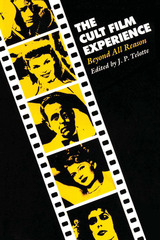 The Cult Film Experience: Beyond All Reason
Edited by J. P. Telotte
University of Texas Press, 1991 "Play it again, Sam" is the motto of cult film enthusiasts, who will watch their favorite movie over and over, "beyond all reason." What is the appeal of cult movies? Why do fans turn up in droves at midnight movies or sit through the same three-hanky classics from Hollywood's golden era? These are some of the questions J. P. Telotte and twelve other noted film scholars consider in this groundbreaking study of the cult film. The book identifies two basic types of cult films—older Hollywood movies, such as Casablanca, that have developed a cult following and "midnight movies," most notably The Rocky Horror Picture Show. Telotte, Bruce Kawin, and Timothy Corrigan offer thought-provoking discussions about why these two types of movies become cult films, the sort of audience they attract, and the needs they fulfill for that audience. Subsequent essays employ a variety of cultural, feminist, ideological, and poststructural strategies for exploring these films. In a section on the classical cult film, the movie Casablanca receives extensive treatment. An essay by T. J. Ross considers Beat the Devil as a send-up of cult films, while another essay by Wade Jennings analyzes the cult star phenomenon as personified in Judy Garland. "Midnight movie madness" is explored in essays on The Rocky Horror Picture Show, movie satires of the 1950s, science fiction double features, and horror thrillers. Illustrated with scenes from favorite movies and written for both fans and scholars, The Cult Film Experience will appeal to a wider audience than the "usual suspects."
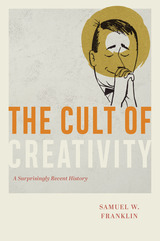 The Cult of Creativity: A Surprisingly Recent History
Samuel W. Franklin
University of Chicago Press, 2023 A history of how, in the mid-twentieth century, we came to believe in the concept of creativity. Named a best book of 2023 by the New Yorker and a notable book of 2023 by Behavioral Scientist.
Creativity is one of American society’s signature values, but the idea that there is such a thing as “creativity”—and that it can be cultivated—is surprisingly recent, entering our everyday speech in the 1950s. As Samuel W. Franklin reveals, postwar Americans created creativity, through campaigns to define and harness the power of the individual to meet the demands of American capitalism and life under the Cold War. Creativity was championed by a cluster of professionals—psychologists, engineers, and advertising people—as a cure for the conformity and alienation they feared was stifling American ingenuity. It was touted as a force of individualism and the human spirit, a new middle-class aspiration that suited the needs of corporate America and the spirit of anticommunism.
Amid increasingly rigid systems, creativity took on an air of romance; it was a more democratic quality than genius, but more rarified than mere intelligence. The term eluded clear definition, allowing all sorts of people and institutions to claim it as a solution to their problems, from corporate dullness to urban decline. Today, when creativity is constantly sought after, quantified, and maximized, Franklin’s eye-opening history of the concept helps us to see what it really is, and whom it really serves.
The Cult of Draupadi, Volume 1: Mythologies: From Gingee to Kuruksetra
Alf Hiltebeitel
University of Chicago Press, 1988 This is the first volume of a projected three-volume work on the little-known South Indian folk cult of the goddess Draupadi and on the classical epic, the Mahabharata, that the cult brings to life in mythic, ritual, and dramatic forms. Draupadi, the chief heroine of the Sanskrit Mahabharata, takes on many unexpected guises in her Tamil cult, but her dimensions as a folk goddess remain rooted in a rich interpretive vision of the great epic. By examining the ways that the cult of Draupadi commingles traditions about the goddess and the epic, Alf Hiltebeitel shows the cult to be singularly representative of the inner tensions and working dynamics of popular devotional Hinduism.
The Cult of Draupadi, Volume 2: On Hindu Ritual and the Goddess
Alf Hiltebeitel
University of Chicago Press, 1991 This is the first volume of a projected three-volume work on the little-known South Indian folk cult of the goddess Draupadi and on the classical epic, the Mahabharata, that the cult brings to life in mythic, ritual, and dramatic forms. Draupadi, the chief heroine of the Sanskrit Mahabharata, takes on many unexpected guises in her Tamil cult, but her dimensions as a folk goddess remain rooted in a rich interpretive vision of the great epic. By examining the ways that the cult of Draupadi commingles traditions about the goddess and the epic, Alf Hiltebeitel shows the cult to be singularly representative of the inner tensions and working dynamics of popular devotional Hinduism.
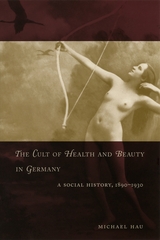 The Cult of Health and Beauty in Germany: A Social History, 1890-1930
Michael Hau
University of Chicago Press, 2003 From the 1890s to the 1930s, a growing number of Germans began to scrutinize and discipline their bodies in a utopian search for perfect health and beauty. Some became vegetarians, nudists, or bodybuilders, while others turned to alternative medicine or eugenics. In The Cult of Health and Beauty in Germany, Michael Hau demonstrates why so many men and women were drawn to these life reform movements and examines their tremendous impact on German society and medicine.
Hau argues that the obsession with personal health and fitness was often rooted in anxieties over professional and economic success, as well as fears that modern industrialized civilization was causing Germany and its people to degenerate. He also examines how different social groups gave different meanings to the same hygienic practices and aesthetic ideals. What results is a penetrating look at class formation in pre-Nazi Germany that will interest historians of Europe and medicine and scholars of culture and gender.
 The Cult of Pharmacology: How America Became the World's Most Troubled Drug Culture
Richard DeGrandpre
Duke University Press, 2006 America had a radically different relationship with drugs a century ago. Drug prohibitions were few, and while alcohol was considered a menace, the public regularly consumed substances that are widely demonized today. Heroin was marketed by Bayer Pharmaceuticals, and marijuana was available as a tincture of cannabis sold by Parke Davis and Company. Exploring how this rather benign relationship with psychoactive drugs was transformed into one of confusion and chaos, The Cult of Pharmacology tells the dramatic story of how, as one legal drug after another fell from grace, new pharmaceutical substances took their place. Whether Valium or OxyContin at the pharmacy, cocaine or meth purchased on the street, or alcohol and tobacco from the corner store, drugs and drug use proliferated in twentieth-century America despite an escalating war on “drugs.” Richard DeGrandpre, a past fellow of the National Institute on Drug Abuse and author of the best-selling book Ritalin Nation, delivers a remarkably original interpretation of drugs by examining the seductive but ill-fated belief that they are chemically predestined to be either good or evil. He argues that the determination to treat the medically sanctioned use of drugs such as Miltown or Seconal separately from the illicit use of substances like heroin or ecstasy has blinded America to how drugs are transformed by the manner in which a culture deals with them. Bringing forth a wealth of scientific research showing the powerful influence of social and psychological factors on how the brain is affected by drugs, DeGrandpre demonstrates that psychoactive substances are not angels or demons irrespective of why, how, or by whom they are used. The Cult of Pharmacology is a bold and necessary new account of America’s complex relationship with drugs.
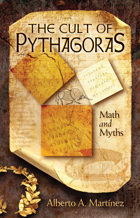 The Cult of Pythagoras: Math and Myths
Alberto A. Martinez
University of Pittsburgh Press, 2012 In this follow-up to his popular Science Secrets, Alberto A. Martínez discusses various popular myths from the history of mathematics: that Pythagoras proved the hypotenuse theorem, that Archimedes figured out how to test the purity of a gold crown while he was in a bathtub, that the Golden Ratio is in nature and ancient architecture, that the young Galois created group theory the night before the pistol duel that killed him, and more. Some stories are partly true, others are entirely false, but all show the power of invention in history. Pythagoras emerges as a symbol of the urge to conjecture and “fill in the gaps” of history. He has been credited with fundamental discoveries in mathematics and the sciences, yet there is nearly no evidence that he really contributed anything to such fields at all. This book asks: how does history change when we subtract the many small exaggerations and interpolations that writers have added for over two thousand years?
The Cult of Pythagoras is also about invention in a positive sense. Most people view mathematical breakthroughs as “discoveries” rather than invention or creativity, believing that mathematics describes a realm of eternal ideas. But mathematicians have disagreed about what is possible and impossible, about what counts as a proof, and even about the results of certain operations. Was there ever invention in the history of concepts such as zero, negative numbers, imaginary numbers, quaternions, infinity, and infinitesimals?
Martínez inspects a wealth of primary sources, in several languages, over a span of many centuries. By exploring disagreements and ambiguities in the history of the elements of mathematics, The Cult of Pythagoras dispels myths that obscure the actual origins of mathematical concepts. Martínez argues that an accurate history that analyzes myths reveals neglected aspects of mathematics that can encourage creativity in students and mathematicians.
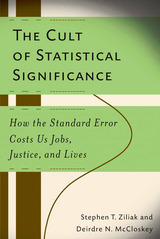 The Cult of Statistical Significance: How the Standard Error Costs Us Jobs, Justice, and Lives
Stephen T. Ziliak and Deirdre N. McCloskey
University of Michigan Press, 2010 “McCloskey and Ziliak have been pushing this very elementary, very correct, very important argument through several articles over several years and for reasons I cannot fathom it is still resisted. If it takes a book to get it across, I hope this book will do it. It ought to.” —Thomas Schelling, Distinguished University Professor, School of Public Policy, University of Maryland, and 2005 Nobel Prize Laureate in Economics “With humor, insight, piercing logic and a nod to history, Ziliak and McCloskey show how economists—and other scientists—suffer from a mass delusion about statistical analysis. The quest for statistical significance that pervades science today is a deeply flawed substitute for thoughtful analysis. . . . Yet few participants in the scientific bureaucracy have been willing to admit what Ziliak and McCloskey make clear: the emperor has no clothes.” —Kenneth Rothman, Professor of Epidemiology, Boston University School of Health The Cult of Statistical Significance shows, field by field, how “statistical significance,” a technique that dominates many sciences, has been a huge mistake. The authors find that researchers in a broad spectrum of fields, from agronomy to zoology, employ “testing” that doesn’t test and “estimating” that doesn’t estimate. The facts will startle the outside reader: how could a group of brilliant scientists wander so far from scientific magnitudes? This study will encourage scientists who want to know how to get the statistical sciences back on track and fulfill their quantitative promise. The book shows for the first time how wide the disaster is, and how bad for science, and it traces the problem to its historical, sociological, and philosophical roots. Stephen T. Ziliak is the author or editor of many articles and two books. He currently lives in Chicago, where he is Professor of Economics at Roosevelt University. Deirdre N. McCloskey, Distinguished Professor of Economics, History, English, and Communication at the University of Illinois at Chicago, is the author of twenty books and three hundred scholarly articles. She has held Guggenheim and National Humanities Fellowships. She is best known for How to Be Human* Though an Economist (University of Michigan Press, 2000) and her most recent book, The Bourgeois Virtues: Ethics for an Age of Commerce (2006).
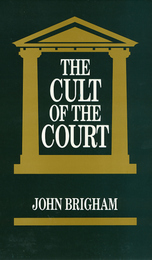 The Cult Of The Court
John Brigham
Temple University Press, 1991 In recent years widespread attention has been focused on decisions handed down by the Supreme Court that grapple with passionate issues: integration, school prayer, abortion, affirmative action. The appointment of new justices is a highly charged political event although the Court is supposed to be "above" politics. Amidst the bicentennial celebration of the Constitution and almost daily reports of major confrontations awaiting the highest court’s judicial review, John Brigham presents a fresh and innovative examination of the U.S. Supreme Court as the final arbiter of constitutional interpretation. Drawing on philosophy and anthropology, The Cult of the Court offers a social scientific investigation of an institution whose authority has come to be taken for granted. The author emphasizes that the Court is an institution and that its authority is founded less in the claim of legal expertise than in hierarchical finality—the assertion of political will, not of legal judgment. He shows how the Court has supplanted the Constitution as the authority in our political world and that what makes legal "sense" is affected by these factors of institutionalization, bureaucratization, and court-dominated constitutionalism.
The Cult of the Feline
Elizabeth P. Benson
Harvard University Press The Cult of the Feline is based on papers given at a conference held at Dumbarton Oaks in November 1970 and was first published in 1972. The conference brought together anthropologists, archaeologists, art historians, and ethnologists to explore the iconography of the feline, from Central Mexico to South America, from 1200 BC to the present. Carefully selected and expertly edited by Elizabeth P. Benson, the nine essays in this volume provide an excellent cross-cultural and art-historical overview of the iconography of the feline in the Pre-Columbian world.
The Cult of the Goddess Pattini
Gananath Obeyesekere
University of Chicago Press, 1984 Pattini—goddess, virgin, wife, and mother; folk deity of Sinhala Buddhists and Jains; and assimilated goddess of the Hindu pantheon—has been worshiped in Sri Lanka and South India for fifteen hundred years or more, as she still is today. This long-awaited book is the culmination of Gananath Obeyesekere's comprehensive study of the Pattini cult and its historical, sociological, and psychoanalytical role in the culture of South Asia. A well-known anthropologist and a native of Sri Lanka, Obeyesekere displays his impeccable scholarship and a stunning range of theoretical perspectives in this work, the most detailed analysis of a single religious complex in South Asian ethnography (and possibly in all of anthropology).
The Cult of the Nation in France: Inventing Nationalism, 1680–1800
David A. Bell
Harvard University Press, 2003 Using eighteenth-century France as a case study, David Bell offers an important new argument about the origins of nationalism. Before the eighteenth century, the very idea of nation-building—a central component of nationalism—did not exist. During this period, leading French intellectual and political figures came to see perfect national unity as a critical priority, and so sought ways to endow all French people with the same language, laws, customs, and values. The period thus gave rise to the first large-scale nationalist program in history.
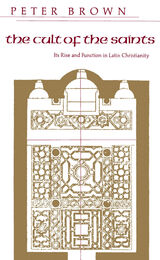 The Cult of the Saints: Its Rise and Function in Latin Christianity
Peter Brown
University of Chicago Press, 1982 Following the fall of the Roman Empire in the West, the cult of the saints was the dominant form of religion in Christian Europe. In this elegantly written work, Peter Brown explores the role of tombs, shrines, relics, and pilgrimages connected with the sacred bodies of the saints. He shows how men and women living in harsh and sometimes barbaric times relied upon the merciful intercession of the holy dead to obtain justice, forgiveness, and to find new ways to accept their fellows. Challenging the common treatment of the cult as an outbreak of superstition among the lower classes, Brown demonstrates how this form of religiousity engaged the finest minds of the Church and elicited from members of the educated upper classes some of their most splendid achievements in poetry, literature, and the patronage of the arts.
"Brown has an international reputation for his fine style, a style he here turns on to illuminate the cult of the saints. Christianity was born without such a cult; it took rise and that rise needs chronicling. Brown has a gift for the memorable phrase and sees what the passersby have often overlooked. An eye-opener on an important but neglected phase of Western development."—The Christian Century
"Brilliantly original and highly sophisticated . . . . [The Cult of the Saints] is based on great learning in several disciplines, and the story is told with an exceptional appreciation for the broad social context. Students of many aspects of medieval culture, especially popular religion, will want to consult this work."—Bennett D. Hill, Library Journal
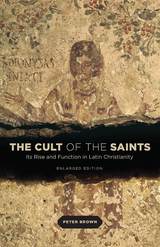 The Cult of the Saints: Its Rise and Function in Latin Christianity, Enlarged Edition
Peter Brown
University of Chicago Press, 2014 The classic account of how medieval people engaged with the cult of the saints
In this groundbreaking work, Peter Brown explores how the worship of saints and their corporeal remains became central to religious life in Western Europe after the fall of the Roman Empire. During this period, earthly remnants served as a heavenly connection, and their veneration is a fascinating window into the cultural mood of a region in transition.
Brown challenges the long-held “two-tier” idea of religion that separated the religious practices of the sophisticated elites from those of the superstitious masses, instead arguing that the cult of the saints crossed boundaries and played a dynamic part in both the Christian faith and the larger world of late antiquity. He shows how men and women living in harsh and sometimes barbaric times relied upon the holy dead to obtain justice, forgiveness, and power, and how a single sainted hair could inspire great thinkers and great artists.
An essential text by one of the foremost scholars of European history, this expanded edition includes a new preface from Brown, which presents new ideas based on subsequent scholarship.
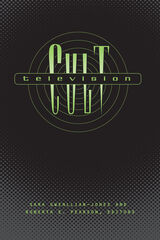 Cult Television
Sara Gwenllian-Jones
University of Minnesota Press, 2004 Exploring the definition and appeal of cult TV from Emma Peel to Buffy A television series is tagged with the label “cult” by the media, advertisers, and network executives when it is considered edgy or offbeat, when it appeals to nostalgia, or when it is considered emblematic of a particular subculture. By these criteria, almost any series could be described as cult. Yet certain programs exert an uncanny power over their fans, encouraging them to immerse themselves within a fictional world. In Cult Television leading scholars examine such shows as The X-Files; The Avengers; Doctor Who, Babylon Five; Star Trek; Xena, Warrior Princess; and Buffy the Vampire Slayer to determine the defining characteristics of cult television and map the contours of this phenomenon within the larger scope of popular culture. Contributors: Karen Backstein; David A. Black, Seton Hall U; Mary Hammond, Open U; Nathan Hunt, U of Nottingham; Mark Jancovich; Petra Kuppers, Bryant College; Philippe Le Guern, U of Angers, France; Alan McKee; Toby Miller, New York U; Jeffrey Sconce, Northwestern U; Eva Vieth.
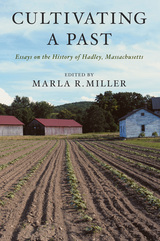 Cultivating a Past: Essays on the History of Hadley, Massachusetts
Marla R. Miller
University of Massachusetts Press, 2009 In 1659, a group of Puritan dissenters made their way north from Hartford and Wethersfield, Connecticut, to a crook in the Connecticut River that cut through some of the most fertile land in New England. Three hundred and fifty years later, a group of distinguished scholars mark the founding of that town— Hadley, Massachusetts—with a book that explores a history as rich as that soil.
Edited with an introduction by Marla R. Miller, Cultivating a Past brings together fifteen essays, some previously published and others new, that tell the story of Hadley from a variety of disciplinary vantage points. Archaeologists Elizabeth Chilton, Siobhan Hart, Christopher Donta, Edward Hood, and Rita Reinke investigate relations between Native and European communities, while historians Gregory Nobles, Alice Nash, and Pulitzer Prize winner Laurel Thatcher Ulrich explore the social, cultural, and political past of this New England town. Musicologist Andrea Olmstead surveys the career of composer Roger Sessions, costume specialist Lynne Bassett interprets the wardrobes of the town's seventeenth-century residents, Douglas Wilson investigates the connection between Hadley and the regicides William Goffe and Edward Whalley, and Martin Antonetti charts the course of a 1599 Bible alleged to have belonged Goffe.
Taken together, the essays capture how men and women in this small community responded to the same challenges that have faced other New Englanders from the seventeenth century to the present. They also reveal how the town's historical sense of itself evolved along the way, as stories of the alleged "Angel of Hadley," of favorite sons Joseph Hooker and Clarence Hawkes, and of daughters Mary Webster and Elizabeth Porter Phelps contributed to a civic identity that celebrates strength of character.
 Cultivating and Communicating Natural and Technical Knowledge around 1800: Devotees of Science
Nikolaj Bijleveld
Amsterdam University Press, 2025 This is a book about some of the unexpected people and places involved in cultivating knowledge of the natural world and of scientific apparatus around 1800. It takes readers across continental Europe from the Enlightenment to the onset of academic professionalisation. The authors widen the horizon of inquiry by looking beyond the scientific elite of academies and prestigious science sponsored by princely courts, the focus of previous major studies of this time period. They consider people of diverse professions and occupations who advanced scientific knowledge through practical means by devoting their spare time and personal resources, thereby crossing geographic, linguistic, and societal barriers. The case studies together demonstrate that such individuals contributed substantially to the spread of new knowledge and found ways to promote technical innovations in society. The present volume is dedicated to these people: the devotees of science.
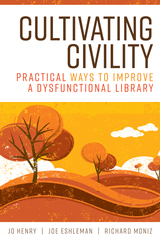 Cultivating Civility: Practical Ways to Improve a Dysfunctional Library
Jo Henry
American Library Association, 2020 Like other workplaces, libraries can sometimes be stressful, with library workers bearing the brunt of such problems as uncivil patrons, poor communication, inadequate leadership, and toxic behaviors by fellow employees. But there’s hope. Following up their acclaimed examination of the dysfunctional library ("should be essential reading for library leaders" raves Journal of the Australian Library and Information Association), here the authors present a book of proactive solutions and guidance culled from their own research, including interviews with library administrators and staff. Sharing valuable insights that will stimulate thought and discussion towards the goal of a healthier and more harmonious workplace, this book - addresses the subject from four viewpoints—individual, team, leader, and organization—focusing on solutions and practical steps in each area;
- shows how self-reflection and self-awareness can be key starting points for exploring workplace issues;
- offers numerous suggestions for wellness and self-care;
- provides tips for improving interpersonal communication and conversations in ways that prevent silos and span boundaries;
- sheds light on forming and sustaining cohesive library teams, then provides solutions for misaligned teams and dissenters;
- discusses why effectively conveying vision, role modeling, and demonstrating empathy are all crucial behaviors of library leaders;
- shares actions library leaders can take to engage employees in the change process;
- examines how organizational structures can either detract or contribute to a library’s success; and
- details types of training that can be utilized to minimize dysfunction, including training for bias, empathy, conflict management, and diversity.
Filled with beneficial advice on every page, this resource will help libraries be better workplaces for everyone.
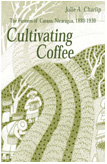 Cultivating Coffee: The Farmers of Carazo, Nicaragua, 1880–1930
Julie A. Charlip
Ohio University Press, 2002 Many scholars of Latin America have argued that the introduction of coffee forced most people to become landless proletarians toiling on large plantations. Cultivating Coffee tells a different story: small and medium-sized growers in Nicaragua were a vital part of the economy, constituting the majority of the farmers and holding most of the land. Alongside these small commercial farmers was a group of subsistence farmers, created by the state’s commitment to supplying municipal lands to communities. These subsistence growers became the workforce for their coffee-growing neighbors, providing harvest labor three months a year. Mostly illiterate, perhaps largely indigenous, they nonetheless learned the functioning of the new political and economic systems and used them to acquire individual plots of land. Julie Charlip’s Cultivating Coffee joins the growing scholarship on rural Latin America that demonstrates the complexity of the processes of transition to expanded export agriculture in the nineteenth and twentieth centuries, emphasizing the agency of actors at all levels of society. It also sheds new light on the controversy surrounding landholding in Nicaragua during the Sandinista revolution.
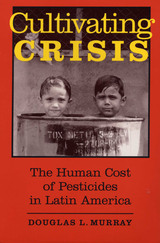 Cultivating Crisis: The Human Cost of Pesticides in Latin America
By Douglas L. Murray
University of Texas Press, 1994 Since World War II, the Green Revolution has boosted agricultural production in Latin America and other parts of the Third World, with money, technical assistance, and other forms of aid from United States development agencies. But the Green Revolution came at a high price—massive pesticide dependence that has caused serious socioeconomic and public health problems and widespread environmental damage. In this study, Douglas Murray draws on ten years of field research to tell the stories of international development strategies, pesticide problems, and agrarian change in Latin America. Interwoven with his considerations of economic and geopolitical dimensions are the human consequences for individual farmers and rural communities. This highly interdisciplinary study, integrating the perspectives of sociology, ecology, economics, political science, and public health, adds an important voice to the debate on opportunities for and obstacles to more lasting and sustainable development in the Third World. It will be of interest to a wide audience in the social and environmental sciences.
 Cultivating Development: An Ethnography of Aid Policy and Practice
David Mosse
Pluto Press, 2005 Development agencies and researchers are preoccupied with policy; with exerting influence over policy, linking research to policy and with implementing policy around the world.
But what if development practice is not driven by policy? Suppose that the things that make for 'good policy' - policy that legitimises and mobilises political support - in reality make it impossible to implement?
By focusing in detail on the unfolding activities of a development project in western India over more than ten years, as it falls under different policy regimes, this book takes a close look at the relationship between policy and practice in development.
David Mosse shows how the actions of development workers are shaped by the exigencies of organisations and the need to maintain relationships rather than by policy; but also that development actors work hardest of all to maintain coherent representations of their actions as instances of authorised policy. Raising unfamiliar questions, Mosse provides a rare self-critical reflection on practice, while refusing to endorse current post-modern dismissal of development.
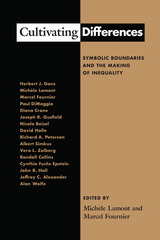 Cultivating Differences: Symbolic Boundaries and the Making of Inequality
Edited by Michèle Lamont and Marcel Fournier
University of Chicago Press, 1992 How are boundaries created between groups in society? And what do these boundaries have to do with social inequality?
In this pioneering collection of original essays, a group of leading scholars helps set the agenda for the sociology of culture by exploring the factors that push us to segregate and integrate and the institutional arrangements that shape classification systems. Each examines the power of culture to shape our everyday lives as clearly as does economics, and studies the dimensions along which boundaries are frequently drawn.
The essays cover four topic areas: the institutionalization of cultural categories, from morality to popular culture; the exclusionary effects of high culture, from musical tastes to the role of art museums; the role of ethnicity and gender in shaping symbolic boundaries; and the role of democracy in creating inclusion and exclusion.
The contributors are Jeffrey Alexander, Nicola Beisel, Randall Collins, Diana Crane, Paul DiMaggio, Cynthia Fuchs Epstein, Joseph Gusfield, John R. Hall, David Halle, Richard A. Peterson, Albert Simkus, Alan Wolfe, and Vera Zolberg.
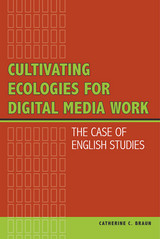 Cultivating Ecologies for Digital Media Work: The Case of English Studies
Catherine C. Braun
Southern Illinois University Press, 2014 The onslaught of the digital age has rapidly redefined the parameters of virtually every aspect of daily life, and the world of academic scholarship is no exception. In English departments across American institutions of higher education, faculty members face an uphill battle in the struggle for professional recognition of their digital works. In Cultivating Ecologies for Digital Media Work, author Catherine C. Braun calls for a shift in thinking about the professional methods and digital goals of the English studies discipline and its central texts. Braun’s in-depth study documents English professors and the challenges they face in both career and classroom as they attempt to gain appropriate value for digital teaching and creation within their field, departments, and institutions. Braun proposes that to move English studies into the future, three main questions must be addressed. First, what counts as a text? How should we approach the reading of texts? Finally, how should we approach the production of texts? In addition to reconsidering the nature of texts in English studies, she calls for crucial changes in higher-education institutional procedures themselves, including new methods of evaluating digital scholarship on an even playing field with other forms of work during the processes for promotion and tenure.
With insightful expertise, Braun analyzes how the new age of digital scholarship not only complements the traditional values of the English studies discipline but also offers constructive challenges to old ideas about texts, methods, and knowledge production. Cultivating Ecologies for Digital Media Work is the first volume to offer specific examination of the digital shift’s impact on English studies and provides the scaffold upon which productive conversations about the future of the field and digital pedagogy can be built.
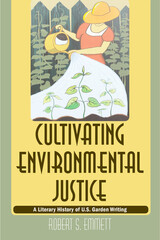 Cultivating Environmental Justice: A Literary History of U.S. Garden Writing
Robert S. Emmett
University of Massachusetts Press, 2016 While Michael Pollan and others have popularized ideas about how growing one’s own food can help lead to environmental sustainability, environmental justice activists have pushed for more access to gardens and fresh food in impoverished communities. Now, Robert S. Emmett argues that mid-twentieth-century American garden writing included many ideas that became formative for these contemporary environmental writers and activists. Drawing on ecocriticism, environmental history, landscape architecture, and recent work in environmental justice and food studies, Emmett explores how the language of environmental justice emerged in descriptions of gardening across a variety of literary forms. He reveals early egalitarian associations found in garden writing, despite a popular focus on elite sites such as suburban lawns and formal southern gardens. Cultivating Environmental Justice emphasizes the intergenerational work of gardeners and garden writers who, from the 1930s on, asserted increasingly radical socioeconomic and ecological claims to justice. Emmett considers a wide range of texts by authors including Bernard M’Mahon, Scott and Helen Nearing, Katharine S. White, Elizabeth Lawrence, Alice Walker, and Novella Carpenter.
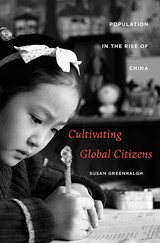 Cultivating Global Citizens: Population in the Rise of China
Susan Greenhalgh
Harvard University Press, 2010 Current accounts of China’s global rise emphasize economics and politics, largely neglecting the cultivation of China’s people. Susan Greenhalgh, one of the foremost authorities on China’s one-child policy, places the governance of population squarely at the heart of China’s ascent.
Focusing on the decade since 2000, and especially 2004–09, she argues that the vital politics of population has been central to the globalizing agenda of the reform state. By helping transform China’s rural masses into modern workers and citizens, by working to strengthen, techno-scientize, and legitimize the PRC regime, and by boosting China’s economic development and comprehensive national power, the governance of the population has been critically important to the rise of global China.
After decades of viewing population as a hindrance to modernization, China’s leaders are now equating it with human capital and redefining it as a positive factor in the nation’s transition to a knowledge-based economy. In encouraging “human development,” the regime is trying to induce people to become self-governing, self-enterprising persons who will advance their own health, education, and welfare for the benefit of the nation. From an object of coercive restriction by the state, population is being refigured as a field of self-cultivation by China’s people themselves.
 Cultivating Health: Los Angeles Women and Public Health Reform
Koslow, Jennifer
Rutgers University Press, 2009 At the dawn of the Progressive Era, when America was experiencing an industrial boom, many working families often ate contaminated food, lived in decaying urban tenements, and had little access to medical care. In a city that demanded change, Los Angeles women, rather than city officials, championed the call to action. Cultivating Health, an interdisciplinary chronicle, details women's impact on remaking health policy, despite the absence of government support. Combining primary source and municipal archival research with comfortable prose, Jennifer Lisa Koslow explores community nursing, housing reform, milk sanitation, childbirth, and the campaign against venereal disease in late nineteenth and early twentieth century Los Angeles. She demonstrates how women implemented health care reform and civic programs while laying the groundwork for a successful transition of responsibility back to government. Koslow highlights women's home health care and urban policy-changing accomplishments and pays tribute to what would become the model for similar service-based systems in other American centers.
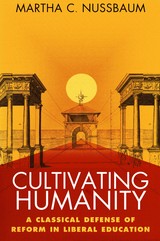 Cultivating Humanity: A Classical Defense of Reform in Liberal Education
Martha C. Nussbaum
Harvard University Press, 1997 How can higher education today create a community of critical thinkers and searchers for truth that transcends the boundaries of class, gender, and nation? Martha C. Nussbaum, philosopher and classicist, argues that contemporary curricular reform is already producing such “citizens of the world” in its advocacy of diverse forms of cross-cultural studies. Her vigorous defense of “the new education” is rooted in Seneca’s ideal of the citizen who scrutinizes tradition critically and who respects the ability to reason wherever it is found—in rich or poor, native or foreigner, female or male.
Drawing on Socrates and the Stoics, Nussbaum establishes three core values of liberal education: critical self-examination, the ideal of the world citizen, and the development of the narrative imagination. Then, taking us into classrooms and campuses across the nation, including prominent research universities, small independent colleges, and religious institutions, she shows how these values are (and in some instances are not) being embodied in particular courses. She defends such burgeoning subject areas as gender, minority, and gay studies against charges of moral relativism and low standards, and underscores their dynamic and fundamental contribution to critical reasoning and world citizenship.
For Nussbaum, liberal education is alive and well on American campuses in the late twentieth century. It is not only viable, promising, and constructive, but it is essential to a democratic society. Taking up the challenge of conservative critics of academe, she argues persuasively that sustained reform in the aim and content of liberal education is the most vital and invigorating force in higher education today.
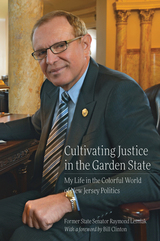 Cultivating Justice in the Garden State: My Life in the Colorful World of New Jersey Politics
Raymond Lesniak
Rutgers University Press, 2022 Born into a working-class Polish immigrant family in Elizabeth, New Jersey, Raymond Lesniak went on to become a major force in the tough and bruising world of state politics. In this remarkable memoir, he reflects upon his life and career fighting for social justice in the Garden State.
He recounts the many causes he championed in his forty years as a state legislator, from the landmark Environmental Cleanup Responsibility Act to bills concerning animal protections, marriage equality, women’s reproductive rights, and the abolition of the death penalty. He also delves into his experiences on the national stage as a key advisor for Bill Clinton and Al Gore’s presidential campaigns. With refreshing candor, Lesniak describes both his greatest achievements and his moments of failure, including his unsuccessful 2017 gubernatorial run.
Cultivating Justice in the Garden State is both a gripping American success story and a must-read for anyone seeking to understand the inner workings of our political system. It offers an insider’s perspective on the past fifty years of New Jersey politics, while presenting a compelling message about what leaders and citizens can do to improve the state’s future.
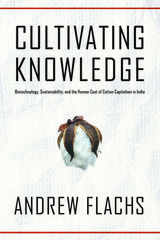 Cultivating Knowledge: Biotechnology, Sustainability, and the Human Cost of Cotton Capitalism in India
Andrew Flachs
University of Arizona Press, 2019 A single seed is more than just the promise of a plant. In rural south India, seeds represent diverging paths toward a sustainable livelihood. Development programs and global agribusiness promote genetically modified seeds and organic certification as a path toward more sustainable cotton production, but these solutions mask a complex web of economic, social, political, and ecological issues that may have consequences as dire as death.
In Cultivating Knowledge anthropologist Andrew Flachs shows how rural farmers come to plant genetically modified or certified organic cotton, sometimes during moments of agrarian crisis. Interweaving ethnographic detail, discussions of ecological knowledge, and deep history, Flachs uncovers the unintended consequences of new technologies, which offer great benefits to some—but at others’ expense. Flachs shows that farmers do not make simple cost-benefit analyses when evaluating new technologies and options. Their evaluation of development is a complex and shifting calculation of social meaning, performance, economics, and personal aspiration. Only by understanding this complicated nexus can we begin to understand sustainable agriculture.
By comparing the experiences of farmers engaged with these mutually exclusive visions for the future of agriculture, Cultivating Knowledge investigates the human responses to global agrarian change. It illuminates the local impact of global changes: the slow, persistent dangers of pesticides, inequalities in rural life, the aspirations of people who grow fibers sent around the world, the place of ecological knowledge in modern agriculture, and even the complex threat of suicide. It all begins with a seed.
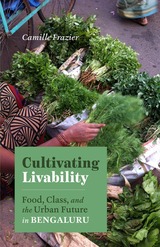 Cultivating Livability: Food, Class, and the Urban Future in Bengaluru
Camille Frazier
University of Minnesota Press, 2024 What urban food networks reveal about middle class livability in times of transformation In recent years, the concept of “livability” has captured the global imagination, influencing discussions about the implications of climate change on human life and inspiring rankings of “most livable cities” in popular publications. But what really makes for a livable life, and for whom? Cultivating Livability takes Bengaluru, India, as a case study—a city that is alternately described as India’s most and least livable megacity, where rapid transformation is undergirded by inequalities evident in the food networks connecting peri-urban farmers and the middle-class public. Anthropologist Camille Frazier probes the meaning of “livability” in Bengaluru through ethnographic work among producers and consumers, corporate intermediaries and urban information technology professionals. Examining the varying efforts to reconfigure processes of food production, distribution, retail, and consumption, she reveals how these intersections are often rooted in and exacerbate ongoing forms of disenfranchisement that privilege some lives at the expense of others.
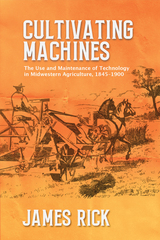 Cultivating Machines: The Use and Maintenance of Technology in Midwestern Agriculture, 1845–1900
James Rick
Ohio University Press How farmers shaped the development of agricultural machinery Throughout the second half of the nineteenth century, farmers in the midwestern United States and in Ontario began adopting new agricultural machines: threshers, reapers, and drills for more efficient production of grains, as well as sewing and washing machines for more efficient production within the farm household. By using, maintaining, and altering these machines within the natural and social contexts of their farms, rural people produced new technological systems of industrial agriculture. They also struggled with machine manufacturers and their agents for control of those systems—both individually and through farmers’ organizations. Cultivating Machines contributes to historiographies of capitalism, technology, and agriculture as it demonstrates the importance of everyday know-how and informed tinkering to the mechanization of grain agriculture. In this study, James Rick moves from the middle decades of the nineteenth century, and the introduction of horse-powered machines, to the end of the century, when mechanized technologies became indispensable and central parts of farms themselves. Ultimately, large-scale wheat production, the increased complexity of machines, the need for replacement parts, and the efforts of manufacturers and their agents to assert themselves as authorities over industrial agriculture diminished the technological independence of farming people.
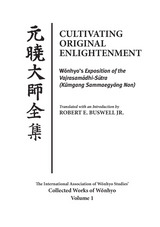 Cultivating Original Enlightenment: Wonhyo’s Exposition of the Vajrasamadhi-Sutra (Kumgang Sammaegyong Non)
translated with an introduction by Robert E. Buswell, Jr.
University of Hawaii Press, 2007 Wŏnhyo (617-686) is the dominant figure in the history of Korean Buddhism and one of the two or three most influential thinkers in the Korean philosophical tradition more broadly. Koreans know Wŏnhyo in his various roles as Buddhist mystic, miracle worker, social iconoclast, religious proselytist, and cultural hero. Above all else, Wŏnhyo was an innovative thinker and prolific writer, whose works cover the gamut of Indian and Sinitic Buddhist materials. The some one hundred treatises and commentaries attributed to this prolific writer, twenty-three of which are extant today, find no rivals among his fellow Korean exegetes. Wŏnhyo was comfortable with all of the major theoretical paradigms prominent in Buddhism of his day and eventually came to champion a highly synthetic approach to the religion that has come to be called t'ong pulgyo, or the Buddhism of Total Interpenetration, an approach that left an indelible imprint on the subsequent course of Korean and East Asian Buddhism. Indeed, it is no exaggeration to say that it was Wŏnhyo who created the Korean tradition of Buddhism. His importance is not limited to the peninsula, however. His writings were widely read in China and Japan as well, and his influence on the overall development of East Asian Mahāyāna thought is significant, particularly in relation to the Huayan, Chan, and Pure Land schools. The five volumes in this series will offer full translations of all of Wonhyo’s extant works, with complete annotation, and extensive introductions framing Wŏnhyo’s insights and contributions in the broader context of East Asian Buddhism.
In this first volume in the series, Cultivating Original Enlightenment, Robert E. Buswell Jr. translates Wŏnhyo’s longest and probably culminating work, the Exposition of the Vajrasamādhi-Sūtra (Kŭmgang sammaegyŏng non). Wŏnhyo here brings to bear all the tools acquired throughout a lifetime of scholarship and meditation to the explication of a scripture that has a startling, even unique, connection to the Korean Buddhist tradition. In his treatise, Wŏnhyo examines the crucial question of how enlightenment can be turned from a tantalizing prospect into a palpable reality that manifests itself in all activities. East Asian Buddhism is founded on the assurance that the prospect of enlightenment is something innate to the mind itself and inherently accessible to all living creatures. This doctrine of “original enlightenment,” along with its related teaching of the “womb (or embryo) of buddhahood,” is foundational to the Korean Buddhist tradition. Given, however, the delusion we persistently face in ourselves and the evil we see surrounding us every day, it is obvious that the fact of being enlightened does not mean that we have necessarily learned how to act enlightened. In Wŏnhyo’s presentation, the notion of original enlightenment is transformed from an abstract philosophical concept into a practical tool of meditative training. Wŏnhyo’s Exposition provides a ringing endorsement of the prospect that all human beings have to recover the enlightenment that is said to be innate in the mind and to make it a tangible force in all of our activities.
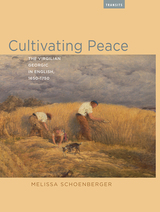 Cultivating Peace: The Virgilian Georgic in English, 1650-1750
Schoenberger, Melissa
Bucknell University Press, 2019 During the decades following the English civil wars, British poets seeking to make sense of lingering political instabilities turned to Virgil’s Georgics. This ancient poem betrays deep ambivalences about war, political power, and empire, and such poets as Andrew Marvell, John Dryden, and Anne Finch found in these attitudes valuable ways of responding to the uncertainties of their own time. Composed during a period of brutal conflict in Rome, Virgil’s agricultural poem distrusts easy stability, urging its readers to understand that lasting peace must be sowed, tended, reaped, and replanted, year after year. Like the ancient poet, who famously depicted a farmer’s scythe suddenly recast as a sword, the poets discussed in Cultivating Peace imagine states of peace and war to be fundamentally and materially linked. In distinct ways, they dismantle the dream of the golden age renewed, proposing instead that peace must be sustained by constant labor.
Published by Bucknell University Press. Distributed worldwide by Rutgers University Press.
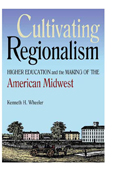 Cultivating Regionalism: Higher Education and the Making of the American Midwest
Kenneth H. Wheeler
Northern Illinois University Press, 2011
In this ambitious book, Kenneth Wheeler revises our understanding of the nineteenth-century American Midwest by reconsidering an institution that was pivotal in its making—the small college. During the antebellum decades, Americans built a remarkable number of colleges in
the Midwest that would help cultivate their regional identity. Through higher education, the values of people living north and west of the Ohio River formed the basis of a new Midwestern culture.
Cultivating Regionalism shows how college founders built robust institutions of higher learning in this socially and ethnically diverse milieu. Contrary to conventional wisdom, these colleges were much different than their counterparts in the East and South—not derivative of them as many
historians suggest. Manual labor programs, for instance, nurtured a Midwestern zeal for connecting mind and body. And the coeducation of men and women at these schools exploded gender norms throughout the region.
Students emerging from these colleges would ultimately shape the ethos of the Progressive era and in large numbers take up scientific investigation as an expression of their egalitarian, production-oriented training. More than a history of these antebellum schools, this elegantly conceived work exposes the interplay in regionalism between thought and action—who antebellum Midwesterners imagined they were and how they built their colleges in distinct ways.
Cultivating the Colonies: Colonial States and their Environmental Legacies
Christina Folke Ax
Ohio University Press, 2011 The essays collected in Cultivating the Colonies demonstrate how the relationship between colonial power and nature revealsthe nature of power. Each essay explores how colonial governments translated ideas about the management of exoticnature and foreign people into practice, and how they literally “got their hands dirty” in the business of empire. The eleven essays include studies of animal husbandry in the Philippines, farming in Indochina, and indigenous medicine in India. They are global in scope, ranging from the Russian North to Mozambique, examining the consequences of colonialismon nature, including its impact on animals, fisheries, farmlands, medical practices, and even the diets of indigenouspeople. Cultivating the Colonies establishes beyond all possible doubt the importance of the environment as a locus for studyingthe power of the colonial state.
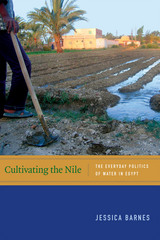 Cultivating the Nile: The Everyday Politics of Water in Egypt
Jessica Barnes
Duke University Press, 2014 The waters of the Nile are fundamental to life in Egypt. In this compelling ethnography, Jessica Barnes explores the everyday politics of water: a politics anchored in the mundane yet vital acts of blocking, releasing, channeling, and diverting water. She examines the quotidian practices of farmers, government engineers, and international donors as they interact with the waters of the Nile flowing into and through Egypt. Situating these local practices in relation to broader processes that affect Nile waters, Barnes moves back and forth from farmer to government ministry, from irrigation canal to international water conference. By showing how the waters of the Nile are constantly made and remade as a resource by people in and outside Egypt, she demonstrates the range of political dynamics, social relations, and technological interventions that must be incorporated into understandings of water and its management.
 Cultivating the Rosebuds: The Education of Women at the Cherokee Female Seminary, 1851-1909
Devon A. Mihesuah
University of Illinois Press, 1993 Recipient of a 1995 Critics' Choice Award of the American Educational Studies Association
Established by the Cherokee Nation in 1851 in present-day eastern Oklahoma, the nondenominaional Cherokee Female Seminary was one of the most important schools in the history of American Indian education. Devon Mihesuah explores its curriculum, faculty, administration, and educational philosophy.
"[An] important work. . . . It tells the fascinating and occasionally poignant story of the Cherokee Female Seminary, which enrolled its first class of 'Rosebuds,' as the seminarians called themselves, in 1851." --Choice
"I recommend it to any serious student of the Cherokee people." -- Robert J. Conley, author of Mountain Windsong
"Of the many books about Cherokee history, few deal with the issue of acculturation in the post-removal period and none so effectively as Devon Mihesuah's Cultivating the Rosebuds." -- Nancy Shoemaker, Western Historical Quarterly
"Required reading for anyone remotely interested in the history of Native American education." -- David W. Adams, History of Education Quarterly
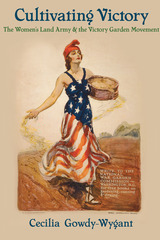 Cultivating Victory: The Women's Land Army and the Victory Garden Movement
Cecilia Gowdy-Wygant
University of Pittsburgh Press, 2013 During the First and Second World Wars, food shortages reached critical levels in the Allied nations. The situation in England, which relied heavily on imports and faced German naval blockades, was particularly dire. Government campaigns were introduced in both Britain and the United States to recruit individuals to work on rural farms and to raise gardens in urban areas. These recruits were primarily women, who readily volunteered in what came to be known as Women’s Land Armies. Stirred by national propaganda campaigns and a sense of adventure, these women, eager to help in any way possible, worked tirelessly to help their nations grow “victory gardens” to win the war against hunger and fascism. In vacant lots, parks, backyards, between row houses, in flowerboxes, and on farms, groups of primarily urban, middle-class women cultivated vegetables along with a sense of personal pride and achievement.
In Cultivating Victory, Cecilia Gowdy-Wygant presents a compelling study of the sea change brought about in politics, society, and gender roles by these wartime campaigns. As she demonstrates, the seeds of this transformation were sown years before the First World War by women suffragists and international women’s organizations. Gowdy-Wygant profiles the foundational organizations and significant individuals in Britain and America, such as Lady Gertrude Denman and Harriet Stanton Blatch, who directed the Women’s Land Armies and fought to leverage the wartime efforts of women to eventually win voting rights and garner new positions in the workforce and politics.
In her original transnational history, Gowdy-Wygant compares and contrasts the outcomes of war in both nations as seen through changing gender roles and women’s ties to labor, agriculture, the home, and the environment. She sheds new light on the cultural legacies left by the Women’s Land Armies and their major role in shaping national and personal identities.
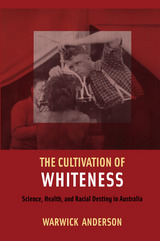 The Cultivation of Whiteness: Science, Health, and Racial Destiny in Australia
Warwick Anderson
Duke University Press, 2006 The Cultivation of Whiteness is an award-winning history of scientific ideas about race and place in Australia from the time of the first European settlement through World War II. Chronicling the extensive use of biological theories and practices in the construction and “protection” of whiteness, Warwick Anderson describes how a displaced “Britishness” (or whiteness) was defined by scientists and doctors in relation to a harsh, strange environment and in opposition to other races. He also provides the first account of extensive scientific experimentation in the 1920s and 1930s on poor whites in tropical Australia and on Aboriginal people in the central deserts. “[Anderson] writes with passion, wit, and panache, and the principal virtues of The Cultivation of Whiteness are the old-fashioned ones of thoroughness, accuracy, and impeccable documentation. . . . [His] sensitive study is a model of how contentious historical issues can be confronted.”—W. F. Bynum, Times Literary Supplement “One of the virtues of The Cultivation of Whiteness is that it brings together aspects of Australian life and history that are now more often separated—race and environment, blood and soil, medicine and geography, tropical science and urban health, biological thought and national policy, Aboriginality and immigration, the body and the mind. The result is a rich and subtle history of ideas that is both intellectual and organic, and that vividly evokes past states of mind and their lingering, haunting power.”—Tom Griffiths, Sydney Morning Herald
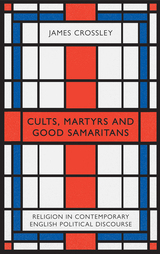 Cults, Martyrs and Good Samaritans: Religion in Contemporary English Political Discourse
James Crossley
Pluto Press, 2018 What role does religion play in contemporary political discourse? Holding a mirror up to English politics in particular, James Crossley examines how Christianity is often used to legitimize ideological positions and parties that could easily be viewed as sinister.
From the paternalistic Christianity used to justify ever-intensifying neoliberalism, to the ethnonationalist and protectionist Christianity of Theresa May and Brexit, to the socialist constructions of Christianity by Jeremy Corbyn and Momentum, Crossley guides us through the love affair between politics and Christianity.. Drawing on interviews with politicians, activists, revolutionaries, and voters on either side of Brexit, Crossley reveals how religion is linked to positions on issues of class, capitalism, and foreign policy, and how it can can often challenge dominant class interests, obfuscate potential causes of unrest, and even justify military intervention.
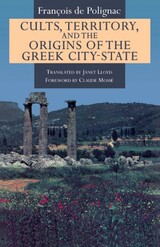 Cults, Territory, and the Origins of the Greek City-State
François de Polignac
University of Chicago Press, 1995 How did the classical Greek city come into being? What role did religion play in its formation? Athens, with its ancient citadel and central religious cult, has traditionally been the model for the emergence of the Greek city-state. But in this original and controversial investigation, Francois de Polignac suggests that the Athenian model was probably the exception, not the rule, in the development of the polis in ancient Greece.
Combining archaeological and textual evidence, de Polignac argues that the eighth-century settlements that would become the city-states of classical Greece were defined as much by the boundaries of "civilized" space as by its urban centers. The city took shape through what de Polignac calls a "religious bipolarity," the cults operating both to organize social space and to articulate social relationships being not only at the heart of the inhabited area, but on the edges of the territory. Together with the urban cults, these sanctuaries "in the wild" identified the polis and its sphere of influence, giving rise to the concept of the state as a territorial unit distinct from its neighbors. Frontier sanctuaries were therefore often the focus of disputes between emerging communities. But in other instances, in particular in Greece's colonizing expeditions, these outer sanctuaries may have facilitated the relations between the indigenous populations and the settlers of the newly founded cities.
Featuring extensive revisions from the original French publication and an updated bibliography, this book is essential for anyone interested in the history and culture of ancient Greece.
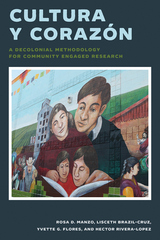 Cultura y Corazón: A Decolonial Methodology for Community Engaged Research
Rosa D. Manzo, Lisceth Brazil-Cruz, Yvette G. Flores, and Hector Rivera-Lopez
University of Arizona Press, 2020 Cultura y Corazón is a research approach and practice that is rooted in the work of Latinx and Chicanx scholars and intellectuals. The book documents best practices for Community Based and Participatory Action Research (CBPAR), which is both culturally attuned and scientifically demonstrated. This methodology takes a decolonial approach to engaging community members in the research process and integrates critical feminist and indigenous epistemologies.
Cultura y Corazón presents case studies from the authors’ work within the fields of education and health. It offers key strategies to working in partnership with marginalized Latinx communities that are grounded in deep respect for the communities’ cultures and lived experiences. This book is intended for students, researchers, and practitioners who want to work with vulnerable populations through a community-based approach that truly respects and integrates culture, values, and funds of knowledge.
Cultural Aesthetics: Renaissance Literature and the Practice of Social Ornament
Patricia Fumerton
University of Chicago Press, 1991 A brilliant postmodern critique of Renaissance subjectivity, Cultural Aesthetics explores the simultaneous formation and fragmentation of aristocratic "selfhood" in the late sixteenth and early seventeenth centuries. Patricia Fumerton situates the self within its sumptuous array of "trivial" arts—including the court literatures of chivalric romance, sonnet, and masque and the arts of architecture, miniature painting, stage design, and cuisine. Her integration of historicist and aesthetic perspectives makes this a provocative contribution to the vigorous field of Renaissance cultural studies.
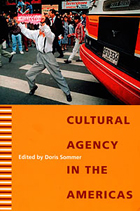 Cultural Agency in the Americas
Doris Sommer, ed.
Duke University Press, 2006 “Cultural agency” refers to a range of creative activities that contribute to society, including pedagogy, research, activism, and the arts. Focusing on the connections between creativity and social change in the Americas, this collection encourages scholars to become cultural agents by reflecting on exemplary cases and thereby making them available as inspirations for more constructive theory and more innovative practice. Creativity supports democracy because artistic, administrative, and interpretive experiments need margins of freedom that defy monolithic or authoritarian regimes. The ingenious ways in which people pry open dead-ends of even apparently intractable structures suggest that cultural studies as we know it has too often gotten stuck in critique. Intellectual responsibility can get beyond denunciation by acknowledging and nurturing the resourcefulness of common and uncommon agents. Based in North and South America, scholars from fields including anthropology, performance studies, history, literature, and communications studies explore specific variations of cultural agency across Latin America. Contributors reflect, for example, on the paradoxical programming and reception of a state-controlled Cuban radio station that connects listeners at home and abroad; on the intricacies of indigenous protests in Brazil; and the formulation of cultural policies in cosmopolitan Mexico City. One contributor notes that trauma theory targets individual victims when it should address collective memory as it is worked through in performance and ritual; another examines how Mapuche leaders in Argentina perceived the pitfalls of ethnic essentialism and developed new ways to intervene in local government. Whether suggesting modes of cultural agency, tracking exemplary instances of it, or cautioning against potential missteps, the essays in this book encourage attentiveness to, and the multiplication of, the many extraordinary instantiations of cultural resourcefulness and creativity throughout Latin America and beyond. Contributors. Arturo Arias, Claudia Briones, Néstor García Canclini, Denise Corte, Juan Carlos Godenzzi, Charles R. Hale, Ariana Hernández-Reguant, Claudio Lomnitz, Jesús Martín Barbero, J. Lorand Matory, Rosamel Millamán, Diane M. Nelson, Mary Louise Pratt, Alcida Rita Ramos, Doris Sommer, Diana Taylor, Santiago Villaveces
Cultural Agents Reloaded: The Legacy of Antanas Mockus
Carlo Tognato
Harvard University Press Cultural Agents Reloaded: The Legacy of Antanas Mockus systematically reflects on the practices and legacy of one exceptional cultural agent, Antanas Mockus, twice Mayor of Bogotá, Colombia. His accomplishments bear witness to the potential of creative, symbolic practices as a trigger for social change. His failures, in turn, demonstrate what happens when cultural agency and epistemic legitimacy take divergent paths. Mockus’s example motivates us to further revise and sharpen our understanding of what cultural agency is in the present day by bringing into focus some of the most formidable challenges that public humanities face when they travel South and struggle to become genuinely global.
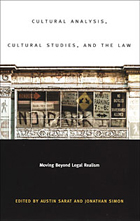 Cultural Analysis, Cultural Studies, and the Law: Moving Beyond Legal Realism
Austin Sarat and Jonathan Simon, eds.
Duke University Press, 2003 Cultural Analysis, Cultural Studies, and the Law is a field-defining collection of work at the intersection of law, cultural analysis and cultural studies. Over the past few decades the marked turn toward claims and policy arguments based on cultural identity—such as ethnicity, race, or religion—has pointed up the urgent need for legal studies to engage cultural critiques. Exploration of legal issues through cultural analyses provides a rich supplement to other approaches—including legal realism, law and economics, and law and society. As Austin Sarat and Jonathan Simon demonstrate, scholars of the law have begun to mine the humanities for new theoretical tools and kinds of knowledge. Crucial to this effort is cultural studies, with its central focus on the relationship between knowledge and power. Drawing on legal scholarship, literary criticism, psychoanalytic theory, and anthropology, the essays collected here exemplify the contributions cultural analysis and cultural studies make to interdisciplinary legal study. Some of these broad-ranging pieces describe particular approaches to the cultural study of the law, while others look at specific moments where the law and culture intersect. Contributors confront the deep connections between law, social science, and post-World War II American liberalism; examine the traffic between legal and late-nineteenth- and early-twentieth-century scientific discourses; and investigate, through a focus on recovered memory, the ways psychotherapy is absorbed into the law. The essayists also explore specific moments where the law is forced to comprehend the world beyond its boundaries, illuminating its dependence on a series of unacknowledged aesthetic, psychological, and cultural assumptions—as in Aldolph Eichmann’s 1957 trial, hiv-related cases, and the U.S. Supreme Court’s recent efforts to define the role of race in the construction of constitutionally adequate voting districts. Contributors. Paul Berman, Peter Brooks, Wai Chee Dimock, Anthony Farley, Shoshanna Felman, Carol Greenhouse, Paul Kahn, Naomi Mezey, Tobey Miller, Austin Sarat, Jonathan Simon, Alison Young
Cultural and Environmental History of Cienega Valley, Southeastern Arizona
Frank W. Eddy and Maurice E. Cooley
University of Arizona Press, 1983 The Anthropological Papers of the University of Arizona is a peer-reviewed monograph series sponsored by the School of Anthropology. Established in 1959, the series publishes archaeological and ethnographic papers that use contemporary method and theory to investigate problems of anthropological importance in the southwestern United States, Mexico, and related areas.
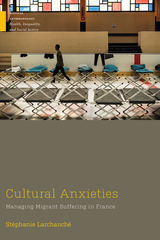 Cultural Anxieties: Managing Migrant Suffering in France
Stéphanie Larchanche
Rutgers University Press, 2020 Cultural Anxieties is a gripping ethnography about Centre Minkowska, a transcultural psychiatry clinic in Paris, France. From her unique position as both observer and staff member, anthropologist Stéphanie Larchanché explores the challenges of providing non-stigmatizing mental healthcare to migrants. In particular, she documents how restrictive immigration policies, limited resources, and social anxieties about the “other” combine to constrain the work of state social and health service providers who refer migrants to the clinic and who tend to frame "migrant suffering" as a problem of integration that requires cultural expertise to address. In this context, Larchanché describes how staff members at Minkowska struggle to promote cultural competence, which offers a culturally and linguistically sensitive approach to care while simultaneously addressing the broader structural factors that impact migrants’ mental health. Ultimately, Larchanché identifies practical routes for improving caregiving practices and promoting hospitality—including professional training, action research, and advocacy.
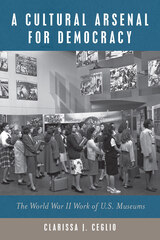 A Cultural Arsenal for Democracy: The World War II Work of US Museums
Clarissa J. Ceglio
University of Massachusetts Press, 2022 "Does it seem strange to think of a museum as a weapon in national defense?" asked John Hay Whitney, president of the Museum of Modern Art, in June 1941. As the United States entered the Second World War in the months to follow, this idea seemed far from strange to museums. Working to strike the right balance between education and patriotism, and hoping to attain greater relevance, many American museums saw engagement with wartime concerns as consistent with their vision of the museum as a social instrument.
Unsurprisingly, exhibitions served as the primary vehicle through which museums, large and small, engaged their publics with wartime topics with fare ranging from displays on the cultures of Allied nations to "living maps" that charted troop movements and exhibits on war preparedness. Clarissa J. Ceglio chronicles debates, experiments, and collaborations from the 1930s to the immediate postwar years, investigating how museums re-envisioned the exhibition as a narrative medium and attempted to reconcile their mission with new modes of storytelling.
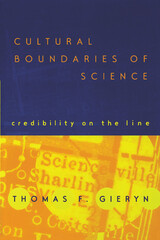 Cultural Boundaries of Science: Credibility on the Line
Thomas F. Gieryn
University of Chicago Press, 1998 Why is science so credible? Usual answers center on scientists' objective methods or their powerful instruments. In his new book, Thomas Gieryn argues that a better explanation for the cultural authority of science lies downstream, when scientific claims leave laboratories and enter courtrooms, boardrooms, and living rooms. On such occasions, we use "maps" to decide who to believe—cultural maps demarcating "science" from pseudoscience, ideology, faith, or nonsense.
Gieryn looks at episodes of boundary-work: Was phrenology good science? How about cold fusion? Is social science really scientific? Is organic farming? After centuries of disputes like these, Gieryn finds no stable criteria that absolutely distinguish science from non-science. Science remains a pliable cultural space, flexibly reshaped to claim credibility for some beliefs while denying it to others. In a timely epilogue, Gieryn finds this same controversy at the heart of the raging "science wars."
Cultural Capital: Mountain Zapotec Migrant Associations in Mexico City
Lane Ryo Hirabayashi
University of Arizona Press, 1993 This book shows how Zapotec peasants migrating to Mexico City utilize paisanazgo--which prescribes solidarity among people from the same locale--as the basis for cooperation and mutual aid within a new environment. This study focuses on three groups of Mountain Zapotecs to explain why migrant associations were created and why they took different forms, citing regional variations in ethnicity, solidarity, occupational pursuits, and sociopolitical articulation to the nation in the three points of origin.
Cultural Capital: The Problem of Literary Canon Formation
John Guillory
University of Chicago Press, 1993 John Guillory challenges the most fundamental premises of the canon debate by resituating the problem of canon formation in an entirely new theoretical framework. The result is a book that promises to recast not only the debate about the literary curriculum but also the controversy over "multiculturalism" and the current "crisis of the humanities." Employing concepts drawn from Pierre Bourdieu's sociology, Guillory argues that canon formation must be understood less as a question of the representation of social groups than as a question of the distribution of "cultural capital" in the schools, which regulate access to literacy, to the practices of reading and writing.
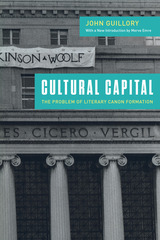 Cultural Capital: The Problem of Literary Canon Formation
John Guillory
University of Chicago Press, 2023 An enlarged edition to celebrate the thirtieth anniversary of John Guillory’s formative text on the literary canon.
Since its publication in 1993, John Guillory’s Cultural Capital has been a signal text for understanding the codification and uses of the literary canon. Cultural Capital reconsiders the social basis for aesthetic judgment and exposes the unequal distribution of symbolic and linguistic knowledge on which culture has long been based. Drawing from Pierre Bourdieu’s sociology, Guillory argues that canon formation must be understood less as a question of the representation of social groups and more as a question of the distribution of cultural capital in schools, which regulate access to literacy, to the practices of reading and writing.
Now, as the crisis of the canon has evolved into the so-called crisis of the humanities, Guillory’s groundbreaking, incisive work has never been more urgent. As scholar and critic Merve Emre writes in her introduction to this enlarged edition: “Exclusion, selection, reflection, representation—these are the terms on which the canon wars of the last century were fought, and the terms that continue to inform debates about, for instance, decolonizing the curriculum and the rhetoric of antiracist pedagogy.”
 Cultural China 2020: The Contemporary China Centre Review
Séagh Kehoe and Gerda Wielander
University of Westminster Press, 2021 Cultural China is a unique annual publication for up-to-date, informed, and accessible commentary about Chinese and Sinophone languages, cultural practices, politics and production, and their critical analysis. It builds on the University of Westminster’s Contemporary China Centre Blog, providing additional reflective introductory pieces to contextualise each of the eight chapters. The articles in this Review speak to the turbulent year that was 2020 as it unfolded across cultural China. Thematically, they range from celebrity culture, fashion and beauty, to religion and spirituality, via language politics, heritage, and music. Pieces on representations of China in Britain and the Westminster Chinese Visual Arts Project reflect our particular location and home. Many of the articles in this book focus on the People’s Republic of China, but they also draw attention to the multiple Chinese and Sinophone cultural practices that exist within, across, and beyond national borders. The Review is distinctive in its cultural studies-based approach and contributes a much-needed critical perspective from the Humanities to the study of cultural China. It aims to promote interdisciplinary dialogue and debate about the social, cultural, political, and historical dynamics that inform life in cultural China today, offering academics, activists, practitioners, and politicians a key reference with which to situate current events in and relating to cultural China in a wider context.
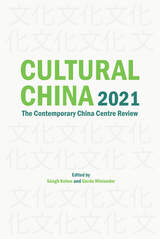 Cultural China 2021: The Contemporary China Centre Review
Séagh Kehoe and Gerda Wielander
University of Westminster Press, 2022 Cultural China is a unique annual publication for up-to-date, informed and accessible commentary about Chinese and Sinophone languages, cultural practices, politics and production, and their critical analysis. It builds on research and perspectives central to the Contemporary China Centre, based at the University of Westminster, and the Contemporary China Centre Blog. The chapters in this Review speak to the challenging and eventful year that was 2021 as it unfolded across cultural China. Thematically, they range from health and medicine, environment, food, children and parenting via film, red culture and calls to action. Many of the contributions in this edited collection focus on the People’s Republic of China, but they also draw attention to the multiple Chinese and Sinophone cultural practices that exist within, across and beyond national borders. The Review is distinctive in its cultural studies-based approach and contributes a much-needed critical perspective from the humanities to the study of cultural China. It aims to promote interdisciplinary dialogue and debate about the social, cultural, political and historical dynamics that inform life in cultural China today offering academics, activists, practitioners and politicians a key reference with which to situate current events in and relating to cultural China in a wider context.
 Cultural Chinese: Readings in Art, Literature, and History
Zu-yan Chen and Hong Zhang
Georgetown University Press, 2012 Cultural Chinese: Readings in Art, Literature, and History is an advanced language textbook with a new approach to cultural integration and immersion. In this unique book, culture becomes the very core of language learning, transitioning its role from context to text. This textbook is ideal for courses in advanced Chinese and Chinese culture. Third- and fourth-year students and instructors will find themselves deeply immersed in the very fabric of Chinese culture that governs personal behavior and directs social dynamics. FEATURES: • Each of nine lessons features a distinctive topic of Chinese culture that serves as a portal to Chinese perceptions and perspectives. • Main text of each lesson begins with a brief introduction and is further illustrated with two historical or mythological stories that inform Chinese values and attitudes. • Additional mini-stories challenge students’ abilities of cultural interpretation. • Includes a total of twenty-seven stories familiar to every educated Chinese person that will prepare students for meaningful communication and understanding. • Each lesson includes more than ten sections of exercises intertwined with culture, including vocabulary and idioms, historical information, linguistic points, translation exercises, and online research required for debate, composition, and storytelling.
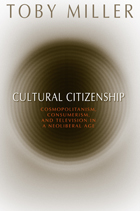 Cultural Citizenship: Cosmopolitanism, Consumerism, and Television in a Neoliberal Age
Toby Miller
Temple University Press, 2006 What does it mean to be a "citizen" today, in an age of unbridled consumerism, terrorism, militarism, and multinationalism? In this passionate and dazzling book, Toby Miller dares to answer this question with the depth of thought it deserves. Fast-moving and far-ranging, Cultural Citizenship blends fact, theory, observation, and speculation in a way that continually startles and engages the reader. Although he is unabashedly liberal in his politics, Miller is anything but narrow minded. He looks at media coverage of September 11th and the Iraq invasion as well as "infotainment"—such as Food and Weather channels—to see how U.S. TV is serving its citizens as part of "the global commodity chain." Repeatedly revealing the crushing grip of the invisible hand of television, Miller shows us what we have given up in our drive to acquire and to "belong." For far too long, "cultural citizenship" has been a concept invoked without content. With the publication of this book, it has at last been given flesh and substance.
Cultural Cleansing and Mass Atrocities: Protecting Cultural Heritage in Armed Conflict Zones
Thomas G. Weiss
J. Paul Getty Trust, The, 2020 Cultural Cleansing and Mass Atrocities: Protecting Cultural Heritage in Armed Conflict Zones addresses the connection between cultural heritage and cultural cleansing, mass atrocities, and the destruction of cultural heritage. Pulling together various threads of discourse and research, Cultural Cleansing and Mass Atrocities outlines the issues, challenges, and options effecting change.
 Cultural Cleansing in Iraq: Why Museums Were Looted, Libraries Burned and Academics Murdered
Edited by Raymond W. Baker, Tareq Y. Ismael, and Shereen T. Ismael
Pluto Press, 2009 Why did the invasion of Iraq result in cultural destruction and killings of intellectuals? Convention sees accidents of war and poor planning in a campaign to liberate Iraqis. The authors argue instead that the invasion aimed to dismantle the Iraqi state to remake it as a client regime.
Post-invasion chaos created conditions under which the cultural foundations of the state could be undermined. The authors painstakingly document the consequences of the occupiers' willful inaction and worse, which led to the ravaging of one of the world's oldest recorded cultures. Targeted assassination of over 400 academics, kidnapping and the forced flight of thousands of doctors, lawyers, artists and other intellectuals add up to cultural cleansing.
This important work lays to rest claims that the invasion aimed to free an educated population to develop its own culture of democracy.
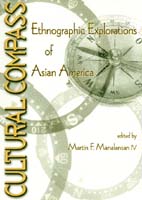 Cultural Compass
Martin Manalansan
Temple University Press, 2000 Cultural Compass re-writes the space of Asian Americans. Through innovative studies of community politics, gender, family and sexual relations, cultural events, and other sites central to the formation of ethnic and citizen identity, contributors reconfigure ethnography according to Asian American experiences in the United States. In these eleven essays, scholars in anthropology, sociology, ethnic studies, and Asian American studies reconsider traditional models for ethnographic research.
Drawing upon recent theoretical discussions and methodological innovations, the contributors explore the construction and displacement of self, community, and home integral to Asian American cultural journeys in the late twentieth century. Some discuss the unique situation of doing ethnographic work "at home" -- that is researching one's own ethnic group or another group with Asian America. Others draw on rich and diverse field experiences. Whether they are doing homework or fieldwork, contributors reflect on the ways that particular matters of identity -- gender, class, sexuality, ethnicity, age -- play out between researchers and informants. Individual essays and the book as a whole challenge the notion of a monolithic, spatially bounded Asian American community, pointing the way to multiple sites of political struggle, cultural critique, and social change.
 Cultural Conservatism, Political Liberalism: From Criticism to Cultural Studies
James Seaton
University of Michigan Press, 1996 Cultural Conservatism, Political Liberalism is an impassioned response to the debates on culture and the literary canon over the last decade. James Seaton argues that the attempts of E. D. Hirsch and Allan Bloom to unite cultural conservatism with political liberalism have been inadequate. He believes that their fullest integration is found not in a doctrine, but in a tradition, the tradition of cultural critics from Mencken through Ellison.
Chapters on Lionel Trilling, H. L. Mencken and Irving Babbitt, Ralph Ellison, Dwight Macdonald, Diana Trilling, and Edmund Wilson affirm the continuing pertinence of their work to today's concerns. Seaton then turns to the careers of Leslie Fiedler and Susan Sontag to explore the impact of the cultural radicalism of the sixties on literary criticism. Subsequent chapters analyze the successes and failures of contemporary cultural studies through the writings of Richard Rorty, Edward Said, Stanley Fish and Fredric Jameson.
Separately, these chapters provide provocative readings of the individual critics; together they make a case for the tradition exemplified by these critics as an alternative to contemporary cultural studies. The issues the book discusses extend beyond literary criticism and the academic world to the political-religious- cultural conflicts of today's culture wars.
"These lively, closely argued essays explain very clearly what the issues are, how they arose, and why they are important." --Christopher Lasch
"A forceful argument about the relationship between literary studies and politics that will add something important to the vigorous, and often fierce, discussion of the canon, the politics of literature, and educational reform."--William Cain, Wellesley College
James Seaton is Professor of English, Michigan State University. He is co-editor, with William K. Buckley, of Beyond Cheering and Bashing: New Perspectives on the Closing of the American Mind.
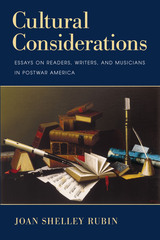 Cultural Considerations: Essays on Readers, Writers, and Musicians in Postwar America
Joan Shelley Rubin
University of Massachusetts Press, 2013
A highly regarded scholar in the fields of American cultural history and print culture, Joan Shelley Rubin is best known for her writings on the values, assumptions, and anxieties that have shaped American life, as reflected in both "high" culture and the experiences of ordinary people. In this volume, she continues that work by exploring processes of mediation that texts undergo as they pass from producers to audiences, while elucidating as well the shifting, contingent nature of cultural hierarchy.
Focusing on aspects of American literary and musical culture in the decades after World War II, Rubin examines the contests between critics and their readers over the authority to make aesthetic judgments; the effort of academics to extend the university outward by bringing the humanities to a wide public; the politics of setting poetic texts to music; the role of ideology in the practice of commissioning and performing choral works; and the uses of reading in the service of both individualism and community. Specific topics include the 1957 attack by the critic John Ciardi on the poetry of Anne Morrow Lindbergh in the Saturday Review; the radio broadcasts of the classicist Gilbert Highet; Dwight Macdonald's vitriolic depiction of the novelist James Gould Cozzens as a pernicious middlebrow; the composition and reception of Howard Hanson's "Song of Democracy"; the varied career of musician Gunther Schuller; the liberal humanism of America's foremost twentieth-century choral conductor, Robert Shaw; and the place of books in the student and women's movements of the 1960s.
What unites these essays is the author's ongoing concern with cultural boundaries, mediation, and ideology--and the contradictions they frequently entail.
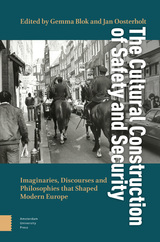 The Cultural Construction of Safety and Security: Imaginaries, Discourses and Philosophies that Shaped Modern Europe
Gemma Blok
Amsterdam University Press, 2024 This volume analyses cultural perceptions of safety and security that have shaped modern European societies. The articles present a wide range of topics, from feelings of unsafety generated by early modern fake news to safety issues related to twentieth-century drug use in public space. The volume demonstrates how ‘safety’ is not just a social or biological condition to pursue but also a historical and cultural construct. In philosophical terms, safety can be interpreted in different ways, referring to security, certainty or trust. What does feeling safe and thinking about a safe society mean to various groups of people over time? The articles in this volume are bound by their joint effort to take a constructionist approach to emotional expressions, artistic representations, literary narratives and political discourses of (un)safety and their impact on modern European society.
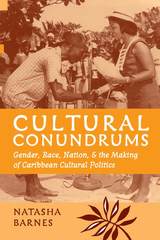 Cultural Conundrums: Gender, Race, Nation, and the Making of Caribbean Cultural Politics
Natasha Barnes
University of Michigan Press, 2010 Cultural Conundrums investigates the passions of race, gender, and national identity that make culture a continually embattled public sphere in the Anglophone Caribbean today. Academics, journalists, and ordinary citizens have weighed in on the ideological meanings to be found in the minutiae of cultural life, from the use of skin-bleaching agents in the beauty rituals of working-class Jamaican women to the rise of sexually suggestive costumes in Trinidad’s Carnival.
Natasha Barnes traces the use of cultural arguments in the making of Caribbean modernity, looking at the cultural performances of the Anglophone Caribbean—cricket, carnival, dancehall, calypso, and beauty pageants—and their major literary portrayals. Barnes historicizes the problematic linkage of culture and nation to argue that Caribbean anticolonialism has given expressive culture a critical place in the region’s identity politics. Her provocative readings of foundational thinkers C. L. R. James and Sylvia Winters will engender discussion and debate among the Caribbean intellectual community. This impressively interdisciplinary study will make important contributions to the fields of Afro-diaspora studies, postcolonial studies, literary studies, performance studies, and sociology.
“Postcolonial cultural criticism is celebrated for its mastery of generalization and condemned for its inability to historicize. Cultural Conundrums is unique in its ability to find a middle ground. It touches on some of the most important and contentious issues in the field. This book will account for why it was in those small islands that what we now call cultural studies was invented.”
--Simon Gikandi, Princeton University
Natasha Barnes is Associate Professor of African American Studies and English at the University of Illinois at Chicago.
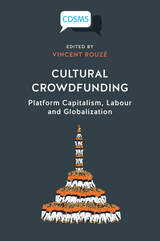 Cultural Crowdfunding: Platform Capitalism, Labour and Globalization
Vincent Rouzé
University of Westminster Press, 2019 This new book analyses the strategies, usages and wider implications of crowdsourcing and crowdfunding platforms in the culture and communication industries that are reshaping economic, organizational and social logics. Platforms are the object of considerable hype with a growing global presence. Relying on individual contributions coordinated by social media to finance cultural production (and carry out promotional tasks) is a significant shift, especially when supported by morphing public policies, supposedly enhancing cultural diversity and accessibility. The aim of this book is to propose a critical analysis of these phenomena by questioning what follows from decisions to outsource modes of creation and funding to consumers. Drawing on research carried out within the ‘Collab’ programme backed by the French National Research Agency, the book considers how platforms are used to organize cultural labour and/or to control usages, following a logic of suggestion rather than overt injunction. Four key areas are considered: the history of crowdfunding as a system; whose interests crowdfunding may serve; the implications for digital labour and lastly crowdfunding’s interface with globalization and contemporary capitalism. The book concludes with an assessment of claims that crowdfunding can democratize culture.
Cultural Democracy: The Arts, Community, and the Public Purpose
James Bau Graves
University of Illinois Press, 2004 Cultural Democracy explores the crisis of our national cultural vitality, as access to the arts becomes increasingly mediated by a handful of corporations and the narrow tastes of wealthy elites. Graves offers the concept of cultural democracy as corrective--an idea with important historic and contemporary validation, and an alternative pathway toward ethical cultural development that is part of a global shift in values.
Drawing upon a range of scholarship and illustrative anecdotes from his own experiences with cultural programs in ethnically diverse communities, Graves explains in convincing detail the dynamics of how traditional and grassroots cultures may survive and thrive--or not--and what we can do to provide them opportunities equal to those of mainstream, Eurocentric culture.
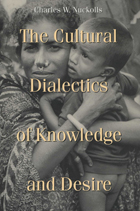 The Cultural Dialectics of Knowledge and Desire
Charles W. Nuckolls
University of Wisconsin Press, 1996 Why is culture a problem that can never be solved? Charles W. Nuckolls poses this question to his readers, and offers a genuinely synthetic approach to culture that is both cognitive and psychoanalytic. He develops a theory of cultural dialectics based on the concept of paradox, in which he shows how ambivalence and conflicts, and the desire to resolve them, are at the heart of all cultural knowledge systems.
Nuckolls combines and synthesizes the ideas of Max Weber and Sigmund Freud—major influences in the cognitive and psychoanalytic paradigms—and develops the concept basic to both: the dialectic. He recovers the legacy of Gregory Bateson, who provided the foundation for a theory of paradox in culture. With his integrated theory, Nuckolls explains the conflicts of knowledge and desire in a South Asian knowledge system, in particular the religious mythology and divinatory system of the Jalaris, a Telugu-speaking fishing caste on the southeastern coast of India.
This provocative book allows us to rethink the relationship between the currently competing discourses in psychological and cultural anthropology, and at the same time offers a general synthetic theory of cultural dynamics.
 Cultural Difference and the Literary Text: Pluralism and the Limits of Authenticity in North American Literature
Winfried Siemerling
University of Iowa Press, 1997 This dynamic, open-minded collection of essays responds to the issues raised by Werner Sollors when he argues against the rigidity of cultural pluralism, against the ethnic group-by-group segregation of American literature. Instead he calls for an openly transethinic recognition of cross-cultural interplays and connections among all so-called groups and their canons. In enthusiastic response to such issues, the contributors explore a variety of approaches to pluralism, multiculturalism, group identity, and the problematics of authenticity in literary texts and criticism both historically and currently. The scholars in this civil, persuasive volume are at home in an international world that crosses linguistic, cultural, and national boundaries. They thus transcend the customary restrictions of earlier, relatively isolationist scholarship to form new, nonpolemical links among cultural identities. This relationship between oral modes of communal identity and writing in tribal cultures joins an examination of Houston Baker's discursive strategies. A consideration of ethnic humor in the writings of Zora Neale Hurston and Jerre Mangione and a discussion of Jean Toomer's racial persona offer striking contextualizations. Two contributors study discursive constructions of mestizaje in Chicano/a texts, followed by essays on cultural difference in Faulkner's Light in August and Roth's Call It Sleep.Finally, Werner Sollers's essay extends the interactions among all these energetic, nonjudgmental dialogues.
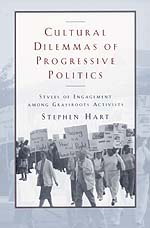 Cultural Dilemmas of Progressive Politics: Styles of Engagement among Grassroots Activists
Stephen Hart
University of Chicago Press, 2001 Why have conservatives fared so much better than progressives in recent decades, even though polls show no significant move to the right in public opinion? Cultural Dilemmas of Progressive Politics highlights one reason: that progressives often adopt impoverished modes of discourse, ceding the moral high ground to their conservative rivals. Stephen Hart also shows that some progressive groups are pioneering more robust ways of talking about their issues and values, providing examples other progressives could emulate.
Through case studies of grassroots movements—particularly the economic justice work carried on by congregation-based community organizing and the pursuit of human rights by local members of Amnesty International—Hart shows how these groups develop distinctive ways of talking about politics and create characteristic stories, ceremonies, and practices. According to Hart, the way people engage in politics matters just as much as the content of their ideas: when activists make the moral basis for their activism clear, engage issues with passion, and articulate a unified social vision, they challenge the recent ascendancy of conservative discourse.
On the basis of these case studies, Hart addresses currently debated topics such as individualism in America and whether strains of political thought strongly informed by religion and moral values are compatible with tolerance and liberty.
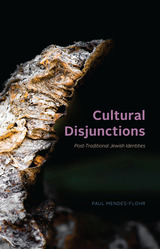 Cultural Disjunctions: Post-Traditional Jewish Identities
Paul Mendes-Flohr
University of Chicago Press, 2021 The identity of contemporary Jews is multifaceted, no longer necessarily defined by an observance of the Torah and God’s commandments. Indeed, the Jews of modernity are no longer exclusively Jewish. They are affiliated with a host of complementary and sometimes clashing communities—vocational, professional, political, and cultural—whose interests may not coincide with that of the community of their birth and inherited culture. In Cultural Disjunctions, Paul Mendes-Flohr explores the possibility of a spiritually and intellectually engaged cosmopolitan Jewish identity for our time. Reflecting on the need to participate in the spiritual life of Judaism so that it enables multiple relations beyond its borders and allows one to balance Jewish commitment with a genuine obligation to the universal, Mendes-Flohr lays out what this delicate balance can look like for contemporary Jews, both in Israel and in diasporic communities worldwide. Cultural Disjunctions walks us through the labyrinth of twentieth-century Jewish cultural identities and commitments. Ultimately, Mendes-Flohr calls for Jews to remain “discontent,” not just with themselves but also and especially with the reigning social and political order, and to fight for its betterment.
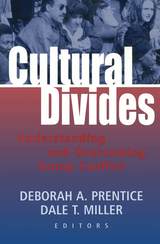 Cultural Divides: Understanding and Overcoming Group Conflict
Deborah Prentice
Russell Sage Foundation, 1999 Thirty years of progress on civil rights and a new era of immigration to the United States have together created an unprecedented level of diversity in American schools, workplaces, and neighborhoods. But increased contact among individuals from different racial and ethnic groups has not put an end to misunderstanding and conflict. On the contrary, entrenched cultural differences raise vexing questions about the limits of American pluralism. Can a population of increasingly mixed origins learn to live and work together despite differing cultural backgrounds? Or, is social polarization by race and ethnicity inevitable? These are the dilemmas explored in Cultural Divides, a compendium of the latest research into the origins and nature of group conflict, undertaken by a distinguished group of social psychologists who have joined forces to examine the effects of culture on social life. Cultural Divides shows how new lines of investigation into intergroup conflict shape current thinking on such questions as: Why are people so strongly prone to attribute personal differences to group membership rather than to individual nature? Why are negative beliefs about other groups so resistent to change, even with increased contact? Is it possible to struggle toward equal status for all people and still maintain separate ethnic identities for culturally distinct groups? Cultural Divides offers new theories about how social identity comes to be rooted in groups: Some essays describe the value of group membership for enhancing individual self-esteem, while others focus on the belief in social hierarchies, or the perception that people of different skin colors and ethnic origins fall into immutably different categories. Among the phenomena explored are the varying degrees of commitment and identification felt by many black students toward their educational institutions, the reasons why social stigma affects the self-worth of some minority groups more than others, and the peculiar psychology of hate crime perpetrators. The way cultural boundaries can impair our ability to resolve disputes is a recurrent theme in the volume. An essay on American cultures of European, Asian, African, and Mexican origin examines core differences in how each traditionally views conflict and its proper methods of resolution. Another takes a hard look at the multiculturalist agenda and asks whether it can realistically succeed. Other contributors describe the effectiveness of social experiments aimed at increasing positive attitudes, cooperation, and conflict management skills in mixed group settings. Cultural Divides illuminates the beliefs and attitudes that people hold about themselves in relation to others, and how these social thought processes shape the formation of group identity and intergroup antagonism. In so doing, Cultural Divides points the way toward a new science of cultural contact and confronts issues of social change that increasingly affect all Americans.
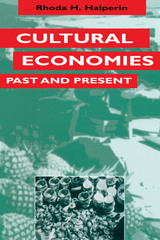 Cultural Economies Past and Present
By Rhoda H. Halperin
University of Texas Press, 1994 When anthropologists and other students of culture want to compare different societies in such areas as the organization of land, labor, trade, or barter, they often discover that individual researchers use these concepts inconsistently and from a variety of theoretical approaches, so that data from one society cannot be compared with data from another. In this book, Rhoda Halperin offers an analytical tool kit for studying economic processes in all societies and at all times. She uniquely organizes the book around key concepts: economy, ecology, equivalencies, householding, storage, and time and the economy. These concepts are designed to facilitate the understanding of similarities, differences, and changes between contemporary and past economies. While this is not only a "how-to" book or handbook, it can be used as such. It will be of great value to scholars and students of archaeology and history, as well as to ethnographers and economists.
Cultural Encounters in the Early South: Indians and Europeans in Arkansas
Jeannie Whayne
University of Arkansas Press, 1995 These stories of unique and distinct peoples, their interactions, and their influences on Arkansas and the South fill a void in the literature examining French and Spanish encounters with the Indians. Using historical, anthropological, and archaeological approaches, these essays collectively cover the European-Indian experience in the region, from DeSoto's first contact in 1541 through the Louisiana Purchase of 1803.
Certificate of Commendation, American Association of State and Local History
 Cultural Erotics in Cuban America
Ricardo L. Ortíz
University of Minnesota Press, 2006 Miami is widely considered the center of Cuban-American culture. However vital to the diasporic communities’ identity, Miami is not the only—or necessarily the most profound—site of cultural production. Looking beyond South Florida, Ricardo L. Ortíz addresses the question of Cuban-American diaspora and cultural identity by exploring the histories and self-sustaining practices of smaller communities in such U.S. cities as Los Angeles, Chicago, and New York.
In this wide-ranging work Ortíz argues for the authentically diasporic quality of postrevolutionary, off-island Cuban experience. Highlighting various forms of cultural expression, Cultural Erotics in Cuban America traces underrepresented communities’ responses to the threat of cultural disappearance in an overwhelming and hegemonic U.S. culture. Ortíz shows how the work of Cuban-American writers and artists challenges the heteronormativity of both home and host culture. Focusing on artists who have had an ambivalent, indirect, or nonexistent connection to Miami, he presents close readings of such novelists as Reinaldo Arenas, Roberto G. Fernández, Achy Obejas, and Cristina García, the playwright Eduardo Machado, the poet Rafael Campo, and musical performers Albita Rodríguez and Celia Cruz.
Ortíz charts the legacies of sexism and homophobia in patriarchal Cuban culture, as well as their influence on Cuban-revolutionary and Cuban-exile ideologies. Moving beyond the outdated cultural terms of the Cold War, he looks forward to envision queer futures for Cuban-American culture free from the ties to restrictive—indeed, oppressive—constructions of nation, place, language, and desire.
Ricardo L. Ortíz is associate professor of English at Georgetown University.
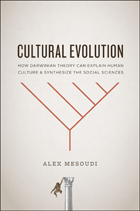 Cultural Evolution: How Darwinian Theory Can Explain Human Culture and Synthesize the Social Sciences
Alex Mesoudi
University of Chicago Press, 2011 Charles Darwin changed the course of scientific thinking by showing how evolution accounts for the stunning diversity and biological complexity of life on earth. Recently, there has also been increased interest in the social sciences in how Darwinian theory can explain human culture. Covering a wide range of topics, including fads, public policy, the spread of religion, and herd behavior in markets, Alex Mesoudi shows that human culture is itself an evolutionary process that exhibits the key Darwinian mechanisms of variation, competition, and inheritance. This cross-disciplinary volume focuses on the ways cultural phenomena can be studied scientifically—from theoretical modeling to lab experiments, archaeological fieldwork to ethnographic studies—and shows how apparently disparate methods can complement one another to the mutual benefit of the various social science disciplines. Along the way, the book reveals how new insights arise from looking at culture from an evolutionary angle. Cultural Evolution provides a thought-provoking argument that Darwinian evolutionary theory can both unify different branches of inquiry and enhance understanding of human behavior.
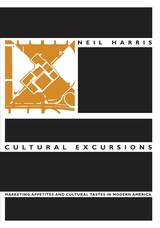 Cultural Excursions: Marketing Appetites and Cultural Tastes in Modern America
Neil Harris
University of Chicago Press, 1990 Neil Harris's scholarship of the past twenty-five years has helped to open up the study of American cultural history. This long-awaited collection gathers some of his rich and varied writings. Harris takes us from John Philip Sousa to Superman, with stops along the way to explore art museums and world fairs, shopping malls and hotel lobbies, urban design and utopian novels, among other artifacts of American cultures.
The essays fall into three general sections: the first treats the history of cultural institutions, highlighting the role of museums; the second section focuses on some literary, artistic, and entrepreneurial responses to the new mass culture; and the final group of essays explores the social history of art and architecture. Throughout Harris's diverse writings certain themes recur—the redefining of boundaries between high art and popular culture, the relationship between public taste and technological change, and the very notion of what constitutes a shared social experience. Harris's pioneering work has broadened the field of cultural history and encouraged whole new areas of inquiry. Cultural Excursions will be useful for those in American and culture studies, as well as for the general reader trying to make sense of the culture in which we live.
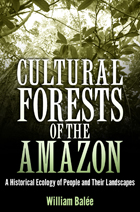 Cultural Forests of the Amazon: A Historical Ecology of People and Their Landscapes
William Balee
University of Alabama Press, 2013 Winner of the Society for Economic Botany's Mary W. Klinger Book Award.
Cultural Forests of the Amazon is a comprehensive and diverse account of how indigenous people transformed landscapes and managed resources in the most extensive region of tropical forests in the world. Until recently, most scholars and scientists, as well as the general public, thought indigenous people had a minimal impact on Amazon forests, once considered to be total wildernesses. William Balée’s research, conducted over a span of three decades, shows a more complicated truth. In Cultural Forests of the Amazon, he argues that indigenous people, past and present, have time and time again profoundly transformed nature into culture. Moreover, they have done so using their traditional knowledge and technology developed over thousands of years. Balée demonstrates the inestimable value of indigenous knowledge in providing guideposts for a potentially less destructive future for environments and biota in the Amazon. He shows that we can no longer think about species and landscape diversity in any tropical forest without taking into account the intricacies of human history and the impact of all forms of knowledge and technology. Balée describes the development of his historical ecology approach in Amazonia, along with important material on little-known forest dwellers and their habitats, current thinking in Amazonian historical ecology, and a narrative of his own dialogue with the Amazon and its people.
 Cultural Formations Of Postcommunism: Emancipation, Transition, Nation, and War
Michael D. Kennedy
University of Minnesota Press, 2002 A powerful exposition of how culture shapes social and political change. "Transition" is the name typically given to the time of radical change following the fall of communism, connoting a shift from planned to market economy, from dictatorship to democracy. Transition is also, in Michael Kennedy’s analysis, a culture in its own right-with its own contentions, repressions, and unrealized potentials. By elaborating transition as a culture of power and viewing it in its complex relation to emancipation, nationalism, and war, Kennedy’s book clarifies the transformations of postcommunism as well as, more generally, the ways in which culture articulates social change. This ambitious work is, in effect, a nuanced critical-cultural sociology of change. Kennedy examines transition culture’s historical foundation by looking at the relationship among perestroika, Poland, and Hungary, and considers its structure and practice in the following decade across fields and nations. His wide-ranging analysis-of the artifacts of transition culture’s proponents, of interviews with providers and recipients of technical assistance in business across Eastern Europe, and of focus groups assessing the successes and failures of social change in Estonia and Ukraine-suggests a transition culture deeply implicated in nationalism. But this association, Kennedy contends, is not necessarily antithetical to transition’s emancipation. By reconsidering transition culture’s relationship to the Wars of Yugoslav Succession and communism’s negotiated collapse in Poland and Hungary, he shows how transition might be reconceived in terms of solidarity, freedom, and peace. Distinguished by its focus on culture, not only within particular nations but in the transnational community organized around transition, this book will help reframe the debate about postcommunist social change.
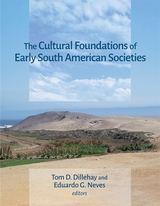 The Cultural Foundations of Early South American Societies
Tom D. Dillehay and Eduardo G. Neves
Harvard University Press The Cultural Foundations of Early South American Societies examines the remarkable transformation of the Central Andes and the tropical Amazon beginning around 7000 BCE, when the Indigenous inhabitants began to develop food production, permanent settlements, monumental architecture, and complex social organizations. Moving beyond traditional chronological categories of “Archaic” and “Formative,” the fourteen essays in this volume reveal how early South American societies followed diverse trajectories, especially in the development of agro-maritime lifestyles on the Pacific coast, animal domestication in the Andean highlands, and plant cultivation in the Amazonian lowlands.
Through regional case studies spanning from southern Ecuador to northern Argentina and the eastern tropical lowlands, the contributors—primarily archaeologists—trace early community formation, technological innovation, landscape transformation, and the emergence of elaborate symbolism and craft production; these analyses offer fresh perspectives on how such developments established the foundations for later state-level societies, providing essential insights into the deep cultural history and varied pathways to social complexity in the ancient Americas.
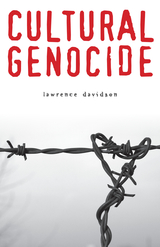 Cultural Genocide
Davidson, Lawrence
Rutgers University Press, 2012 Most scholars of genocide focus on mass murder. Lawrence Davidson, by contrast, explores the murder of culture. He suggests that when people have limited knowledge of the culture outside of their own group, they are unable to accurately assess the alleged threat of others around them. Throughout history, dominant populations have often dealt with these fears through mass murder. However, the shock of the Holocaust now deters today’s great powers from the practice of physical genocide. Majority populations, cognizant of outside pressure and knowing that they should not resort to mass murder, have turned instead to cultural genocide as a “second best” politically determined substitute for physical genocide. In Cultural Genocide, this theory is applied to events in four settings, two events that preceded the Holocaust and two events that followed it: the destruction of American Indians by uninformed settlers who viewed these natives as inferior and were more intent on removing them from the frontier than annihilating them; the attack on the culture of Eastern European Jews living within Russian-controlled areas before the Holocaust; the Israeli attack on Palestinian culture; and the absorption of Tibet by the People’s Republic of China. In conclusion, Davidson examines the mechanisms that may be used to combat today’s cultural genocide as well as the contemporary social and political forces at work that must be overcome in the process.
Cultural Genocide and the Protection of Cultural Heritage
Edward C. Luck
J. Paul Getty Trust, The, 2020 Cultural Genocide and the Protection of Cultural Heritage examines the various lenses through which the international community defines attacks on cultural heritage—legal, accountability, security, counterterrorism, and atrocity prevention—and proposes a sixth, cultural genocide, that can be used to recast the debate over how to best protect the world’s cultural heritage.
The Cultural Geography of Health Care
Wilbert M. Gesler
University of Pittsburgh Press, 1992
In health care delivery and health care research, basic concepts of cultural behavior are ignored—at a high personal and financial cost—because both fields are dominated by technical solutions and quantitative analysis. They have little use for what is often regarded as irrelevant information.
In this wide-ranging book, written for students and non-specialists, Gesler applies cultural geography to health care and shows that throughout the world, in western and developing countries alike, the social sciences can inform the medical sciences nd make them more effective and less expensive.
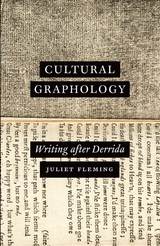 Cultural Graphology: Writing after Derrida
Juliet Fleming
University of Chicago Press, 2016 “Cultural Graphology” could be the name of a new human science: this was Derrida’s speculation when, in the late 1960s, he imagined a discipline that combined psychoanalysis, deconstruction, and a commitment to the topic of writing. He never undertook the project himself but did leave two brief sketches of how he thought cultural graphology might proceed. In this book, Juliet Fleming picks up where Derrida left off. Using both his early and later thought, and the psychoanalytic texts to which it is addressed, to examine the print culture of early modern England, she drastically unsettles some key assumptions of book history.
Fleming shows that the single most important lesson to survive from Derrida’s early work is that we do not know what writing is. Channeling Derrida’s thought into places it has not been seen before, she examines printed errors, spaces, and ornaments (topics that have hitherto been marginal to our accounts of print culture) and excavates the long-forgotten reading practice of cutting printed books. Proposing radical deformations to the meanings of fundamental and apparently simple terms such as “error,” “letter,” “surface,” and “cut,” Fleming opens up exciting new pathways into our understanding of writing all told.
 Cultural Heritage and Mass Atrocities
James Cuno
J. Paul Getty Trust, The, 2022 A pathbreaking call to halt the intertwined crises of cultural heritage attacks and mass atrocities and mobilize international efforts to protect people and cultures.
Intentional destruction of cultural heritage has a long history. Contemporary examples include the Bamiyan Buddhas in Afghanistan, mosques in Xinjiang, mausoleums in Timbuktu, and Greco-Roman remains in Syria. Cultural heritage destruction invariably accompanies assaults on civilians, making heritage attacks impossible to disentangle from the mass atrocities of genocide, war crimes, crimes against humanity, and ethnic cleansing. Both seek to eliminate people and the heritage with which they identify.
Cultural Heritage and Mass Atrocities assembles essays by thirty-eight experts from the heritage, social science, humanitarian, legal, and military communities. Focusing on immovable cultural heritage vulnerable to attack, the volume's guiding framework is the Responsibility to Protect (R2P), a United Nations resolution adopted unanimously in 2005 to permit international intervention against crimes of war or genocide. Based on the three pillars of prevent, react, and rebuild, R2P offers today's policymakers a set of existing laws and international norms that can and—as this book argues—must be extended to the protection of cultural heritage. Contributions consider the global value of cultural heritage and document recent attacks on people and sites in China, Guatemala, Iraq, Mali, Sri Lanka and Afghanistan, Syria, and Yemen. Comprehensive sections on vulnerable populations as well as the role of international law and the military offer readers critical insights and point toward research, policy, and action agendas to protect both people and cultural heritage. A concise abstract of each chapter is offered online in Arabic, Chinese, French, Russian, and Spanish to facilitate robust, global dissemination of the strategies and tactics offered in this pathbreaking call to action.
The free online edition of this publication is available at getty.edu/publications/cultural-heritage-mass-atrocities. Also available are free PDF, EPUB, and Kindle/MOBI downloads of the book.
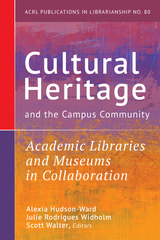 Cultural Heritage and the Campus Community: Academic Libraries and Museums in Collaboration
Alexia Hudson-Ward
Association of College & Research Libraries, 2022 Academic libraries and museums foster many outstanding collaborations supporting teaching, learning, and research within their respective institutions. These collaborations, like other progressive activities, require significant invisible labor, caretaking, and resources that have not always been documented.
Cultural Heritage and the Campus Community collects examples of successful academic library-museum collaborations and serves as critical knowledge for the cultural heritage sector. Authors from libraries and museums across the United States demonstrate how to develop and execute partnerships and bring forth new dimensions of transdisciplinary objects-based pedagogy, research, and learning centered on inclusive educational practices. Chapters explore visual thinking strategies and the Framework for Information Literacy in Higher Education in the undergraduate classroom; restoring Indigenous heritage through tribal partnerships; using object-based teaching to motivate student research; and much more.
The collaborative approaches highlighted here demonstrate the power of possibility when two collections-centric entities unite to enrich our collective understanding of materiality, instructional approaches, and the importance of provenance. Cultural Heritage and the Campus Community also illustrates why interrogating past practices and value assignments within academic library and museum collections is essential to advancing culturally relevant approaches to knowledge sharing in physical and digital spaces.
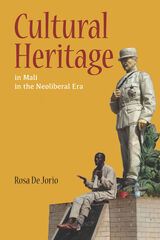 Cultural Heritage in Mali in the Neoliberal Era
Rosa De Jorio
University of Illinois Press, 2016 Up to 2012, Mali was a poster child of African democracy, despite multiple signs of growing dissatisfaction with the democratic experiment. Then disaster struck, bringing many of the nation's unresolved contradictions to international attention. A military coup carved off the country's south. A revolt by a coalition of Tuareg and extremist Islamist forces shook the north. The events, so violent and unexpected, forced experts to reassess Mali's democratic institutions and the neoliberal economic reforms enacted in conjunction with the move toward democracy. Rosa De Jorio's detailed study of cultural heritage and its transformations provides a key to understanding the impasse that confronts Malian democracy. As she shows, postcolonial Mali privileged its cultural heritage to display itself on the regional and international scene. The neoliberal reforms both intensified and altered this trend. Profiling heritage sites ranging from statues of colonial leaders to women's museums to historic Timbuktu, De Jorio portrays how various actors have deployed and contested notions of heritage. These actors include not just Malian administrators and politicians but UNESCO, and non-state NGOs. She also delves into the intricacies of heritage politics from the perspective of Malian actors and groups, as producers and receivers--but always highly informed and critically engaged--of international, national and local cultural initiatives.
Cultural Histories of the Material World
Peter N. Miller, Editor
University of Michigan Press, 2013 All across the humanities fields there is a new interest in materials and materiality. This is the first book to capture and study the “material turn” in the humanities from all its varied perspectives. Cultural Histories of the Material World brings together top scholars from all these different fields—from Art History, Anthropology, Archaeology, Classics, Folklore, History, History of Science, Literature, Philosophy—to offer their vision of what cultural history of the material world looks like and attempt to show how attention to materiality can contribute to a more precise historical understanding of specific times, places, ways, and means. The result is a spectacular kaleidoscope of future possibilities and new perspectives.
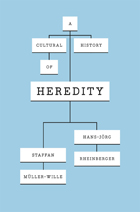 A Cultural History of Heredity
Staffan Müller-Wille and Hans-Jörg Rheinberger
University of Chicago Press, 2012 It was only around 1800 that heredity began to enter debates among physicians, breeders, and naturalists. Soon thereafter it evolved into one of the most fundamental concepts of biology. Here Staffan Müller-Wille and Hans-Jörg Rheinberger offer a succinct cultural history of the scientific concept of heredity. They outline the dramatic changes the idea has undergone since the early modern period and describe the political and technological developments that brought about these changes.
Müller-Wille and Rheinberger begin with an account of premodern theories of generation, showing that these were concerned with the procreation of individuals rather than with hereditary transmission. The authors reveal that when hereditarian thinking first emerged, it did so in a variety of cultural domains, such as politics and law, medicine, natural history, breeding, and anthropology. Müller-Wille and Rheinberger then track theories of heredity from the late nineteenth century—when leading biologists considered it in light of growing societal concerns with race and eugenics—through the rise of classical and molecular genetics in the twentieth century, to today, as researchers apply sophisticated information technologies to understand heredity. What readers come to see from this exquisite history is why it took such a long time for heredity to become a prominent concept in the life sciences and why it gained such overwhelming importance in those sciences and the broader culture over the last two centuries.
A Cultural History of Modern Science in China
Benjamin A. Elman
Harvard University Press, 2006 Historians of science and Sinologists have long needed a unified narrative to describe the Chinese development of modern science, medicine, and technology since 1600. They welcomed the appearance in 2005 of Benjamin Elman's masterwork, On Their Own Terms. Now Elman has retold the story of the Jesuit impact on late imperial China, circa 1600-1800, and the Protestant era in early modern China from the 1840s to 1900 in a concise and accessible form ideal for the classroom. This coherent account of the emergence of modern science in China places that emergence in historical context for both general students of modern science and specialists of China.
 A Cultural History of the Disneyland Theme Parks: Middle Class Kingdoms
Sabrina Mittermeier
Intellect Books, 2020 When the first Disneyland opened its doors in 1955, it reinvented the American amusement park and transformed the travel, tourism, and entertainment industries forever. Now a global vacation empire, the original park in Anaheim, California, has been joined by massive complexes in Florida, Tokyo, Paris, Hong Kong, and Shanghai.
Spanning six decades, three continents, and five distinct cultures, Sabrina Mittermeier presents an interdisciplinary examination of the parks, situating them in their proper historical context and exploring the distinct cultural, social, and economic landscapes that defined each one at the time of its construction. Mittermeier then spotlights the central role of class in the subsequent success or failure of each venture. The first comparative study of the Disney theme parks, the book closes a significant gap in existing research and is an important new contribution to the field.
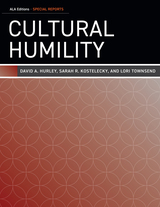 Cultural Humility
David A. Hurley, Sarah R. Kostelecky, and Lori Townsend
American Library Association, 2022 This accessible and compelling Special Report introduces cultural humility, a lifelong practice that can guide library workers in their day-to-day interactions by helping them recognize and address structural inequities in library services. Cultural humility is emerging as a preferred approach to diversity, equity, and inclusion (DEI) efforts within librarianship. At a time when library workers are critically examining their professional practices, cultural humility offers a potentially transformative framework of compassionate accountability; it asks us to recognize the limits to our knowledge, reckon with our ongoing fallibility, educate ourselves about the power imbalances in our organizations, and commit to making change. This Special Report introduces the concept and outlines its core tenets. As relevant to those currently studying librarianship as it is to long-time professionals, and applicable across multiple settings including archives and museums, from this book readers will - learn why cultural humility offers an ideal approach for navigating the spontaneous interpersonal interactions in libraries, whether between patrons and staff or amongst staff members themselves;
- understand how it intersects with cultural competence models and critical race theory;
- see the ways in which cultural humility’s awareness of and commitment to challenging inequitable structures of power can act as a powerful catalyst for community engagement;
- come to recognize how a culturally humble approach supports DEI work by acknowledging the need for mindfulness in day-to-day interactions;
- reflect upon cultural humility’s limitations and the criticisms that some have leveled against it; and
- take away concrete tools for undertaking and continuing such work with patience and hope.
 The Cultural Impact of RuPaul's Drag Race: Why Are We All Gagging?
Edited by Cameron Crookston
Intellect Books, 2022 This edited volume is an exploration of the social, cultural, political, and commercial implications of the trailblazing reality television series RuPaul’s Drag Race. Going beyond mere analysis of the show itself, the contributors interrogate the ways RuPaul’s Drag Race has affected queer representation in media, examining its audience, economics, branding, queer politics, and every point in between.
Since its groundbreaking and subversive entry into the reality television complex in 2009, the show has had profound effects on drag and the cultures that surround it. Bringing together scholarship across disciplines—including cultural anthropology, media studies, linguistics, sociology, marketing, and theater and performance studies—the collection offers rich academic analysis of Ru Paul’s Drag Race and its lasting influence on fan cultures, queer representation, and the very fabric of drag as an art form in popular cultural consciousness.
Cultural Industries in Shanghai: Policy and Planning inside a Global City
Edited by Rong Yueming and Justin O’Connor
Intellect Books, 2018 This volume gathers articles by Chinese scholars dealing with developments in Shanghai’s cultural industries over the past thirty years. Like many cities in China and elsewhere, Shanghai has explicitly stated that fostering the creative economy is its top economic and political priority over the next decade. This book examines, among other aspects of Shanghai’s approach to culture, the effects of this policy focus on the city’s creative growth in economic terms.
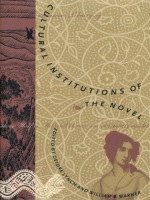 Cultural Institutions of the Novel
Deidre Lynch and William B. Warner, eds.
Duke University Press, 1996 The story of the development of the novel—its origin, rise, and increasing popularity as a narrative form in an ever-expanding range of geographic and cultural sites—is familiar and, according to the contributors to this volume, severely limited. In a far-reaching blend of comparative literature and transnational cultural studies, this collection shifts the study of the novel away from a consideration of what makes a particular narrative a novel to a consideration of how novels function and what cultural work they perform—from what novels are, to what they do. The essays in Cultural Institutions of the Novel find new ways to analyze how a genre notorious for its aesthetic unruliness has become institutionalized—defined, legitimated, and equipped with a canon. With a particular focus on the status of novels as commodities, their mediation of national cultures, and their role in transnational exchange, these pieces range from the seventeenth century to the present and examine the forms and histories of the novel in England, Nigeria, Japan, France, New Zealand, Canada, and the United States. Works by Jane Austen, Natsume Sôseki, Gabriel García Márquez, Buchi Emecheta, and Toni Morrison are among those explored as Cultural Institutions of the Novel investigates how theories of “the” novel and disputes about which narratives count as novels shape social struggles and are implicated in contests over cultural identity and authority. Contributors. Susan Z. Andrade, Lauren Berlant, Homer Brown, Michelle Burnham, James A. Fujii, Nancy Glazener, Dane Johnson, Lisa Lowe, Deidre Lynch, Jann Matlock, Dorothea von Mücke, Bridget Orr, Clifford Siskin, Katie Trumpener, William B. Warner
 Cultural Interactions: Conflict and Cooperation
Frans-Willem Korsten
Amsterdam University Press, 2022 The common saying is that people have a culture. This book argues that people live a culture – which may explain why they are so affectively attached to it. By considering cultural interactions on a global scale, this book investigates how cultures can be understood in terms of conflict and cooperation, in relation to the nation-state, a multiplicity of worlds, society, civilization and community. It considers how culture is at the basis of the construction of individual and collective selves; how they can come to be alienated; are defined in relation to others; are perhaps in-comparable; when they are considered to be dis-abled; and whether we can speak of animal cultural selves and mechanical cultural selves. Its twelve chapters consists of two parts each that both start with a piece of music. The pieces are taken from different cultures and all connote that getting to understand cultures depends on listening, first and foremost.
The Cultural Landscape and Heritage Paradox: Protection and Development of the Dutch Archaeological-Historical Landscape and its European Dimension
Edited by Tom Bloemers, Henk Kars, Arnold Van der Valk, and Mies Wijnen
Amsterdam University Press, 2011 Increasingly, the role of heritage management is to anticipate and guide future environmental change rather than to simply protect landscapes of the past. This charge presents a paradox for those invested in the preservation of the past: in order to preserve the historic environment, they have to collaborate with others who wish to change it, and in order to apply their expert knowledge, they must demonstrate its benefits for policy and society. The solution advocated here is an integrative landscape approach that draws on multiple disciplines and establishes links between archaeological-historical heritage and planning and between research and policy.
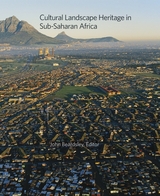 Cultural Landscape Heritage in Sub-Saharan Africa
John Beardsley
Harvard University Press Sub-Saharan Africa is one of the longest occupied and least studied landscapes on earth. While scholarship has been attentive to images of nature made by the region’s explorers and settlers and to landscapes of the colonial era—public parks and game preserves, botanical gardens and urban plans—surprisingly little attention has been paid to spaces created by and for Africans themselves, from the precolonial era to the present.
This book is a contribution to a small but growing effort to address this oversight. Its essays present a range of landscapes: pathways and cairns used by nomadic peoples to navigate through and mark significant places; anthropogenic or managed forests consecrated to ritual purposes of various kinds; tombs or palaces with significant landscape orientations and components; even monumental ceremonial and urban spaces, as at Great Zimbabwe or Djenne. They explore what we know of precolonial and later indigenous designed landscapes, how these landscapes were understood in the colonial era, and how they are being recuperated today for nation building, identity formation, and cultural affirmation. Contributors engage with the most critical issues in preservation today, from the conflicts between cultural heritage and biodiversity protection to the competition between local and international heritage agendas.
 Cultural Landscapes: Balancing Nature and Heritage in Preservation Practice
Richard Longstreth
University of Minnesota Press, 2008 Preservation has traditionally focused on saving prominent buildings of historical or architectural significance. Preserving cultural landscapes-the combined fabric of the natural and man-made environments-is a relatively new and often misunderstood idea among preservationists, but it is of increasing importance. The essays collected in this volume-case studies that include the Little Tokyo neighborhood in Los Angeles, the Cross Bronx Expressway, and a rural island in Puget Sound-underscore how this approach can be fruitfully applied. Together, they make clear that a cultural landscape perspective can be an essential underpinning for all historic preservation projects. Contributors: Susan Calafate Boyle, National Park Service; Susan Buggey, U of Montreal; Michael Caratzas, Landmarks Preservation Commission (NYC); Courtney P. Fint, West Virginia Historic Preservation Office; Heidi Hohmann, Iowa State U; Hillary Jenks, USC; Randall Mason, U Penn; Robert Z. Melnick, U of Oregon; Nora Mitchell, National Park Service; Julie Riesenweber, U of Kentucky; Nancy Rottle, U of Washington; Bonnie Stepenoff, Southeast Missouri State U. Richard Longstreth is professor of American civilization and director of the graduate program in historic preservation at George Washington University.
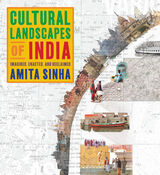 Cultural Landscapes of India: Imagined, Enacted, and Reclaimed
Amita Sinha
University of Pittsburgh Press, 2020 Winner, 2022 J. B. Jackson Book Prize
Winner, 2022 Landscape Studies Initiative Award
Most people view cultural heritage sites as static places, frozen in time. In Cultural Landscapes of India, Amita Sinha subverts the idea of heritage as static and examines the ways that landscapes influence culture and that culture influences landscapes. The book centers around imagining, enacting, and reclaiming landscapes as subjects and settings of living cultural heritage. Drawing on case studies from different regions of India, Sinha offers new interpretations of links between land and culture using different ways of seeing—transcendental, romantic, and utilitarian. The idea of cultural landscape can be seen in ancient practices such as circumambulation and immersion in bodies of water that sustain engagement with natural elements. Pilgrim towns, medieval forts, religious sites, and contemporary memorial parks are sites of memory where myth and history converge. Engaging with these spaces allows us to reconstruct collective memory and reclaim not only historic landscapes, but ways of seeing, making, and remembering. Cultural Landscapes of India makes the case for reclaiming iconic landscapes and rethinking conventional approaches to conservation that take into consideration performative landscape as heritage.
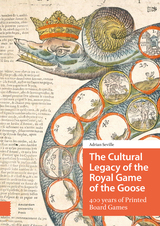 The Cultural Legacy of the Royal Game of the Goose: 400 years of Printed Board Games
Adrian Seville
Amsterdam University Press, 2019 The Game of the Goose is one of the oldest printed board games, dating back 400 years. It has spawned thousands of derivatives: simple race games, played with dice, on themes that mirror much of human activity. Its legacy can be traced in games of education, advertising and polemic, as well as in those of amusement and gambling - and games on new themes are still being developed. This book, by the leading international collector of the genre, is devoted to showing why the Game of the Goose is special and why it can lay claim to being the most influential of any printed game in the cultural history of Europe. Detailed study of the games reveals their historical provenance and - reversing the process - gives unusual insights into the cultures which produced them. They therefore provide rich sources for the cultural historian. This book is beautifully illustrated with more than 90 illustrations, many in color, which are integrated throughout the text.
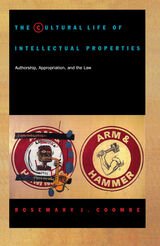 The Cultural Life of Intellectual Properties: Authorship, Appropriation, and the Law
Rosemary J. Coombe
Duke University Press, 1998 Logos, trademarks, national insignia, brand names, celebrity images, design patents, and advertising texts are vibrant signs in a consumer culture governed by a regime of intellectual property laws. In The Cultural Life of Intellectual Properties, professor of law and cultural anthropologist Rosemary J. Coombe brings an illuminating ethnographic approach to an analysis of authorship and the role law plays in shaping the various meanings that animate these protected properties in the public sphere.
Although such artifacts are ubiquitous in contemporary culture, little attention has been paid to the impact of intellectual property law in everyday life or to how ownership of specific intellectual properties is determined and exercised. Drawing on a wide range of cases, disputes, and local struggles, Coombe examines these issues and dismantles the legal assumption that the meaning and value of a text or image is produced exclusively by an individual author or that authorship has a single point of origin. In the process, she examines controversies that include the service of turbanned Sikhs in the Royal Canadian Mounted Police and the use of the term Olympic in reference to the proposed gay Olympic Games. Other chapters discuss the appropriation of such celebrity images as the Marx brothers, Judy Garland, Dolly Parton, James Dean, and Luke Skywalker; the conflict over team names such as the Washington Redskins; and the opposition of indigenous peoples to stereotypical Native American insignia proffered by the entertainment industry. Ultimately, she makes a case for redefining the political in commodified cultural environments.
Significant for its insights into the political significance of current intellectual property law, this book also provides new perspectives on debates in cultural anthropology, cultural studies, and political theory. It will therefore interest both a wide scholarly and a general audience.
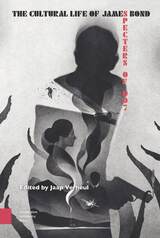 The Cultural Life of James Bond: Specters of 007
Jaap Verheul
Amsterdam University Press, 2020 The release of No Time To Die in 2021 heralds the arrival of the twenty-fifth installment in the James Bond film series. Since the release of Dr. No in 1962, the cinematic James Bond has expedited the transformation of Ian Fleming's literary creation into an icon of western popular culture that has captivated audiences across the globe by transcending barriers of ideology, nation, empire, gender, race, ethnicity, and generation. The Cultural Life of James Bond: Specters of 007 untangles the seemingly perpetual allure of the Bond phenomenon by looking at the non-canonical texts and contexts that encompass the cultural life of James Bond. Chronicling the evolution of the British secret agent over half a century of political, social, and cultural permutations, the fifteen chapters examine the Bond-brand beyond the film series and across media platforms while understanding these ancillary texts and contexts as sites of negotiation with the Eon franchise.
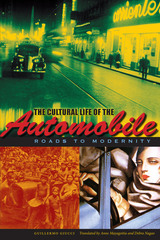 The Cultural Life of the Automobile: Roads to Modernity
By Guillermo Giucci
University of Texas Press, 2012 From its invention in Europe at the end of the nineteenth century, the automobile crisscrossed the world, completely took over the cities, and became a feature of daily life. Considered basic to the American lifestyle, the car reflected individualism, pragmatism, comfort, and above all modernity. In Latin America, it served as a symbol of distinction, similar to jewelry or fine clothing. In The Cultural Life of the Automobile, Guillermo Giucci focuses on the automobile as an instrument of social change through its “kinetic modernity” and as an embodiment of the tremendous social impact of technology on cultural life. Material culture—how certain objects generate a wide array of cultural responses—has been the focus of much scholarly discussion in recent years. The automobile wrought major changes and inspired images in language, literature, and popular culture. Focusing primarily on Latin America but also covering the United States, Europe, Asia, and Africa, Giucci examines how the automobile was variously adapted by different cultures and how its use shaped and changed social and economic relationships within them. At the same time, he shows how the “automobilization” of society became an essential support for the development of modern individualism, and the automobile its clearest material manifestation.
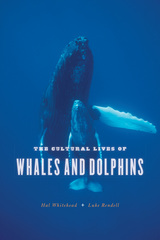 The Cultural Lives of Whales and Dolphins
Hal Whitehead and Luke Rendell
University of Chicago Press, 2014 In the songs and bubble feeding of humpback whales; in young killer whales learning to knock a seal from an ice floe in the same way their mother does; and in the use of sea sponges by the dolphins of Shark Bay, Australia, to protect their beaks while foraging for fish, we find clear examples of the transmission of information among cetaceans. Just as human cultures pass on languages and turns of phrase, tastes in food (and in how it is acquired), and modes of dress, could whales and dolphins have developed a culture of their very own?
Unequivocally: yes. In The Cultural Lives of Whales and Dolphins, cetacean biologists Hal Whitehead, who has spent much of his life on the ocean trying to understand whales, and Luke Rendell, whose research focuses on the evolution of social learning, open an astounding porthole onto the fascinating culture beneath the waves. As Whitehead and Rendell show, cetacean culture and its transmission are shaped by a blend of adaptations, innate sociality, and the unique environment in which whales and dolphins live: a watery world in which a hundred-and-fifty-ton blue whale can move with utter grace, and where the vertical expanse is as vital, and almost as vast, as the horizontal.
Drawing on their own research as well as a scientific literature as immense as the sea—including evolutionary biology, animal behavior, ecology, anthropology, psychology, and neuroscience—Whitehead and Rendell dive into realms both humbling and enlightening as they seek to define what cetacean culture is, why it exists, and what it means for the future of whales and dolphins. And, ultimately, what it means for our future, as well.
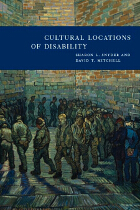 Cultural Locations of Disability
Sharon L. Snyder and David T. Mitchell
University of Chicago Press, 2006 In Cultural Locations of Disability, Sharon L. Snyder and David T. Mitchell trace how disabled people came to be viewed as biologically deviant. The eugenics era pioneered techniques that managed "defectives" through the application of therapies, invasive case histories, and acute surveillance techniques, turning disabled persons into subjects for a readily available research pool. In its pursuit of normalization, eugenics implemented disability regulations that included charity systems, marriage laws, sterilization, institutionalization, and even extermination. Enacted in enclosed disability locations, these practices ultimately resulted in expectations of segregation from the mainstream, leaving today's disability politics to focus on reintegration, visibility, inclusion, and the right of meaningful public participation.
Snyder and Mitchell reveal cracks in the social production of human variation as aberrancy. From our modern obsessions with tidiness and cleanliness to our desire to attain perfect bodies, notions of disabilities as examples of human insufficiency proliferate. These disability practices infuse more general modes of social obedience at work today. Consequently, this important study explains how disabled people are instrumental to charting the passage from a disciplinary society to one based upon regulation of the self.
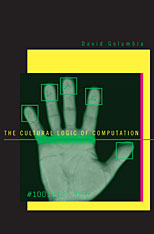 The Cultural Logic of Computation
David Golumbia
Harvard University Press, 2009 Advocates of computers make sweeping claims for their inherently transformative power: new and different from previous technologies, they are sure to resolve many of our existing social problems, and perhaps even to cause a positive political revolution.
In The Cultural Logic of Computation, David Golumbia, who worked as a software designer for more than ten years, confronts this orthodoxy, arguing instead that computers are cultural “all the way down”—that there is no part of the apparent technological transformation that is not shaped by historical and cultural processes, or that escapes existing cultural politics. From the perspective of transnational corporations and governments, computers benefit existing power much more fully than they provide means to distribute or contest it. Despite this, our thinking about computers has developed into a nearly invisible ideology Golumbia dubs “computationalism”—an ideology that informs our thinking not just about computers, but about economic and social trends as sweeping as globalization.
Driven by a programmer’s knowledge of computers as well as by a deep engagement with contemporary literary and cultural studies and poststructuralist theory, The Cultural Logic of Computation provides a needed corrective to the uncritical enthusiasm for computers common today in many parts of our culture.
 The Cultural Logic of Contemporary Capitalism
Nico Baumbach, Damon R. Young, and Genevieve Yue, special issue editors
Duke University Press In 1984 Fredric Jameson wrote that “everything in our social life—from economic value and state power to practices and to the very structure of the psyche itself—can be said to have become ‘cultural’ in some original and yet untheorized sense.” The essays in this special issue track the status of this claim some thirty years later, inquiring into the relationship of art, aesthetics, and cultural production to political economy today. At a moment when interpretation (including “ideology critique” and “symptomatic reading”) has been variously supplanted by descriptivism, empiricism, and the return of metaphysics, contributors here pursue the possibilities for an engaged cultural criticism that is attentive to form while rejecting a depoliticized formalism. Spanning a wide range of cultural sites—from recent Hollywood cinema to post-broadcast television, manufactured landscape photography, contemporary West African art, and “new materialism” in philosophy—they ask what the “formal tendencies” of contemporary cultural production (including theory itself) can tell us about the cultural logic of contemporary capitalism. The collection includes a new interview with Jameson conducted by the editors. Contributors: Jennifer Bajorek, Nico Baumbach, Jonathan Beller, Alexander R. Galloway, Fredric Jameson, Sulgi Lie, Alberto Toscano, Amy Villarejo, Damon R. Young, Genevieve Yue
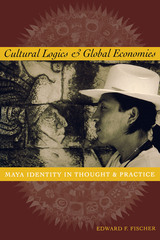 Cultural Logics and Global Economies: Maya Identity in Thought and Practice
By Edward F. Fischer
University of Texas Press, 2002 A Choice Outstanding Academic Book, 2002 As ideas, goods, and people move with increasing ease and speed across national boundaries and geographic distances, the economic changes and technological advances that enable this globalization are also paradoxically contributing to the balkanization of states, ethnic groups, and special interest movements. Exploring how this process is playing out in Guatemala, this book presents an innovative synthesis of the local and global factors that have led Guatemala's indigenous Maya peoples to assert and defend their cultural identity and distinctiveness within the dominant Hispanic society. Drawing on recent theories from cognitive studies, interpretive ethnography, and political economy, Edward F. Fischer looks at individual Maya activists and local cultures, as well as changing national and international power relations, to understand how ethnic identities are constructed and expressed in the modern world. At the global level, he shows how structural shifts in international relations have opened new venues of ethnic expression for Guatemala's majority Maya population. At the local level, he examines the processes of identity construction in two Kaqchikel Maya towns, Tecpán and Patzún, and shows how divergent local norms result in different conceptions and expressions of Maya-ness, which nonetheless share certain fundamental similarities with the larger pan-Maya project. Tying these levels of analysis together, Fischer argues that open-ended Maya "cultural logics" condition the ways in which Maya individuals (national leaders and rural masses alike) creatively express their identity in a rapidly changing world.
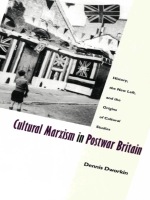 Cultural Marxism in Postwar Britain: History, the New Left, and the Origins of Cultural Studies
Dennis Dworkin
Duke University Press, 1997 In this intellectual history of British cultural Marxism, Dennis Dworkin explores one of the most influential bodies of contemporary thought. Tracing its development from beginnings in postwar Britain, through its various transformations in the 1960s and 1970s, to the emergence of British cultural studies at Birmingham, and up to the advent of Thatcherism, Dworkin shows this history to be one of a coherent intellectual tradition, a tradition that represents an implicit and explicit theoretical effort to resolve the crisis of the postwar British Left.
Limited to neither a single discipline nor a particular intellectual figure, this book comprehensively views British cultural Marxism in terms of the dialogue between historians and the originators of cultural studies and in its relationship to the new left and feminist movements. From the contributions of Eric Hobsbawm, Christopher Hill, Rodney Hilton, Sheila Rowbotham, Catherine Hall, and E. P. Thompson to those of Perry Anderson, Barbara Taylor, Raymond Williams, Dick Hebdige, and Stuart Hall, Dworkin examines the debates over issues of culture and society, structure and agency, experience and ideology, and theory and practice. The rise, demise, and reorganization of journals such as The Reasoner, The New Reasoner, Universities and Left Review, New Left Review, Past and Present, are also part of the history told in this volume. In every instance, the focus of Dworkin’s attention is the intellectual work seen in its political context. Cultural Marxism in Postwar Britain captures the excitement and commitment that more than one generation of historians, literary critics, art historians, philosophers, and cultural theorists have felt about an unorthodox and critical tradition of Marxist theory.
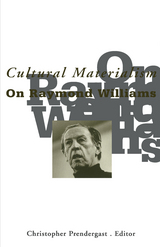 Cultural Materialism: On Raymond Williams
Christopher Prendergast
University of Minnesota Press, 1995 "Raymond Williams was the last of the great European male revolutionary socialist intellectuals born before the end of the age of Europe (1492-1945)."-Cornel West The work of Raymond Williams is of seminal importance in rethinking the idea of culture. He is widely regarded as one of the founding figures of international cultural studies. In tribute to his legacy, this edited volume is devoted to his theories of cultural materialism and is the most substantial and wide-ranging collection of essays on his work to be offered since his death in 1988. For all readers grappling with Williams's complex legacy, this volume is not to be missed.Contributors include Stanley Aronowitz, Graduate School, CUNY; John Brenkman, Baruch College, CUNY; Peter de Bolla, Cambridge University; Catherine Gallagher, University of California, Berkeley; Stephen Heath, University of California, Santa Cruz; John Higgins, University of Cape Town; Peter Hitchcock, Baruch College, CUNY; Cora Kaplan, Rutgers University; David Lloyd, University of California, Berkeley; Robert Miklitsch, Ohio University; Michael Moriarty, Cambridge University; Morag Shiach, Queen Mary and Westfield College, University of London; David Simpson, University of Colorado, Boulder; Gillian Skirrow; Kenneth Surin, Duke University; Paul Thomas, University of California, Berkeley; Gauri Viswanathan, Columbia University; and Cornel West, Harvard University.
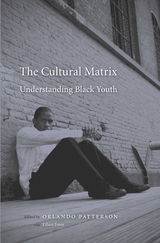 The Cultural Matrix: Understanding Black Youth
Orlando Patterson
Harvard University Press, 2015 The Cultural Matrix seeks to unravel a uniquely American paradox: the socioeconomic crisis, segregation, and social isolation of disadvantaged black youth, on the one hand, and their extraordinary integration and prominence in popular culture on the other. Despite school dropout rates over 40 percent, a third spending time in prison, chronic unemployment, and endemic violence, black youth are among the most vibrant creators of popular culture in the world. They also espouse several deeply-held American values. To understand this conundrum, the authors bring culture back to the forefront of explanation, while avoiding the theoretical errors of earlier culture-of-poverty approaches and the causal timidity and special pleading of more recent ones.
There is no single black youth culture, but a complex matrix of cultures—adapted mainstream, African-American vernacular, street culture, and hip-hop—that support and undermine, enrich and impoverish young lives. Hip-hop, for example, has had an enormous influence, not always to the advantage of its creators. However, its muscular message of primal honor and sensual indulgence is not motivated by a desire for separatism but by an insistence on sharing in the mainstream culture of consumption, power, and wealth.
This interdisciplinary work draws on all the social sciences, as well as social philosophy and ethnomusicology, in a concerted effort to explain how culture, interacting with structural and environmental forces, influences the performance and control of violence, aesthetic productions, educational and work outcomes, familial, gender, and sexual relations, and the complex moral life of black youth.
 Cultural Melancholy: Readings of Race, Impossible Mourning, and African American Ritual
Jermaine Singleton
University of Illinois Press, 2015 A daring cultural and literary studies investigation, Cultural Melancholy explores the legacy of unresolved grief produced by ongoing racial oppression and resistance in the United States. Using acute analysis of literature, drama, musical performance, and film, Singleton demonstrates how rituals of racialization and resistance transfer and transform melancholy discreetly across time, consolidating racial identities and communities along the way. He also argues that this form of impossible mourning binds racialized identities across time and social space by way of cultural resistance efforts. Singleton develops the concept of "cultural melancholy" as a response to scholarship that calls for the separation of critical race studies and psychoanalysis, excludes queer theoretical approaches from readings of African American literatures and cultures, and overlooks the status of racialized performance culture as a site of serious academic theorization. In doing so, he weaves critical race studies, psychoanalysis, queer theory, and performance studies into conversation to uncover a host of hidden dialogues—psychic and social, personal and political, individual and collective—for the purpose of promoting a culture of racial grieving, critical race consciousness, and collective agency. Wide-ranging and theoretically bold, Cultural Melancholy counteracts the racial legacy effects that plague our twenty-first century multiculture.
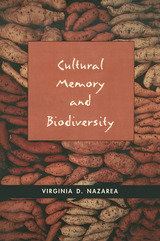 Cultural Memory and Biodiversity
Virginia D. Nazarea
University of Arizona Press, 1998 Seed and gene banks have made great strides in preserving the biological diversity of traditional agricultural plant species, but they have tended to ignore a serious component: the knowledge about those crops and methods of farming held by the people who have long raised them. Virginia Nazarea now makes a case for preserving cultural memory along with biodiversity. By exploring how indigenous people farm sweet potatoes in Bukidnon, Philippines, she discovers specific ways in which the conservation of genetic resources and the conservation of culture can support each other. Interweaving a wealth of ecological and cognitive data with oral history, Nazarea details a "memory banking" protocol for collecting and conserving cultural information to complement the genetic, agronomic, and biochemical characterization of important crops. She shows that memory banking offers significant benefits for local populations—not only the preservation of traditional knowledge but also the maintenance of alternatives to large-scale agricultural development and commercialization. She also compares alternative forms of germplasm conservation conducted by a male-dominated hierarchy with those of an informal network of migrant women. Cultural Memory and Biodiversity establishes valuable guidelines for people who aspire to support community-based in situ conservation of local varieties. Perhaps more important, it shows that the traditional methods of local farmers are often as important as the "advanced" methods encouraged by advocates of modernization.
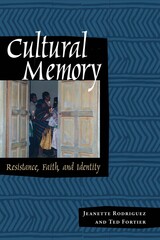 Cultural Memory: Resistance, Faith, and Identity
By Jeanette Rodriguez and Ted Fortier
University of Texas Press, 2007 <p>Sangre llama a sangre. (Blood cries out to blood.)—Latin American aphorism</p><p>The common "blood" of a people—that imperceptible flow that binds neighbor to neighbor and generation to generation—derives much of its strength from cultural memory. Cultural memories are those transformative historical experiences that define a culture, even as time passes and it adapts to new influences. For oppressed peoples, cultural memory engenders the spirit of resistance; not surprisingly, some of its most powerful incarnations are rooted in religion. In this interdisciplinary examination, Jeanette Rodriguez and Ted Fortier explore how four such forms of cultural memory have preserved the spirit of a particular people.</p><p><i>Cultural Memory</i> is not a comparative work, but it is a multicultural one, with four distinct case studies: the image of Our Lady of Guadalupe and the devotion it inspires among Mexican Americans; the role of secrecy and ceremony among the Yaqui Indians of Arizona; the evolving narrative of Archbishop Oscar Romero of San Salvador as transmitted through the church of the poor and the martyrs; and the syncretism of Catholic Tzeltal Mayans of Chiapas, Mexico. In each case, the authors' religious credentials eased the resistance encountered by social scientists and other researchers. The result is a landmark work in cultural studies, a conversation between a liberation theologian and a cultural anthropologist on the religious nature of cultural memory and the power it brings to those who wield it.</p>
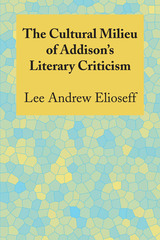 The Cultural Milieu of Addison's Literary Criticism
By Lee Andrew Elioseff
University of Texas Press, 1963 The whole history of literary criticism is illuminated by this analysis of one English critic’s work. It is, in effect, a literary case study presented as partial answer to the complicated question: what cultural conditions are conducive to the development of a particular theory of literature? Initially, Lee Andrew Elioseff defines four difficult responsibilities of the historian of criticism: the interpretation of his material in terms of all the cultural circumstances that produced it; elimination of the purely chance elements, such as private feuds and unimportant personal tastes; consideration of those aspects of criticism that best indicate the dominant critical opinions of the age and the principles that are leading it; and illumination of the present critical situation. Concentrating upon the first three of these obligations, Elioseff seeks the sources of modern literary criticism in the works of Joseph Addison and his contemporaries, analyzing with great care and accuracy their responses to problems—both literary and nonliterary—in their culture. From the analysis, Addison emerges as a very significant figure: a critic who moved from Renaissance and neoclassical humanism and became one of the most important predecessors of romantic criticism; a formulator of what was to become the “emotive strain” in literary criticism; an essayist who raised many problems shared by the “modern” psychological critic whose immediate concern is the effect of the literature upon its audience. Drawing abundantly from a wide knowledge of philosophy, literature, and history, and exercising an incisive critical acumen, Elioseff discusses Addison’s criticism in three aspects: “The Critical Milieu,” an interpretation of Addison’s relation to his age as it influenced his views on tragedy, epic poetry, and ballads; “Addison and Eighteenth-Century England,” a consideration of contemporary political thought, morals, and theology; and the “Empirical Tradition,” an analysis of Addison’s critical views as expressed in The Pleasures of the Imagination.
Cultural Misunderstandings: The French-American Experience
Raymonde Carroll
University of Chicago Press, 1990 An engaging, insightful account of all the ways that we misunderstand each other, and how unsuspected elements of culture and language play their parts
Raymonde Carroll presents an intriguing and thoughtful analysis of the many ways French and Americans—and indeed any members of different cultures—can misinterpret each other, even when ostensibly speaking the same language.Cultural misunderstandings, Carroll points out, can arise even where we least expect them—in our closest relationships. The revealing vignettes that Carroll relates, and her perceptive comments, bring to light some fundamental differences in French and American presuppositions about love, friendship, and raising children, as well as such everyday activities as using the telephone or asking for information.
 Cultural Narratives: Textuality and Performance in American Culture before 1900
Sandra M. Gustafson
University of Notre Dame Press, 2010
This collection of original essays examines debates on how written, printed, visual, and performed works produced meaning in American culture before 1900. The contributors argue that America has been a multimedia culture since the eighteenth century. According to Sandra M. Gustafson, the verbal arts before 1900 manifest a strikingly rich pattern of development and change. From the wide variety of indigenous traditions, through the initial productions of settler communities, to the elaborations of colonial, postcolonial, and national expressive forms, the shifting dynamics of performed, manuscript-based, and printed verbal art capture critical elements of rapidly changing societies.
The contributors address performances of religion and government, race and gender, poetry, theater, and song. Their studies are based on texts--intended for reading silently or out loud--maps, recovered speech, and pictorial sources. As these essays demonstrate, media, even when they appear to be fixed, reflected a dynamic American experience.
"This volume brings together some of the most exciting work in print culture and 'old new media' studies (relating to early America) that is being done today. The collection will have an avid scholarly audience as the interdisciplinary fields of book history and of media, literacy, and performance studies, and their subfields, continue to thrive." --Patricia Crain, New York University
"This collection contains important contributions to our understanding of a wide range of media in America before 1900. The volumes published in A History of the Book in America have already begun to give an impressive sense of the major contribution of the history of the book to our understanding of American culture, but Cultural Narrativesgoes beyond the brief of those volumes both in emphasizing other media than the book and in stressing the interrelations between those media. This volume is important not only to scholars working in American Studies but also to anyone interested in the impact of 'textual media' in the making of culture and history." --Peter Stallybrass, University of Pennsylvania
"Cultural Narrativesencompasses an extraordinary range of topics, including cross-cultural exchanges of music, poetry, oral narrative, and theatrical traditions. It delves into codes of civility, poetic performance, and visual and verbal literacy, considering issues of race, class, and gender, and how they intersected with the 'texts' so many Americans used in shaping their own identities." --Heather S. Nathans, University of Maryland
 Cultural Offensive: America's Impact on British Art Since 1945
John A. Walker
Pluto Press, 1998 The vibrant fine arts and mass culture that the United Stated exported to Britain in the postwar period had a powerful and far-reaching impact on many British artists, art students and critics. In a fascinating social and cultural history covering the period from the 1940s to the 1990s, but with emphasis on the 1950s and 1960s, John A. Walker offers a scholarly but accessible account of America's Cold War cultural offensive and the role played by American artists living in Britain.
This is the first text to document in detail the variegated responses of British artists to postwar America and its art, criticism and mass media. Their reactions that ranged from Americanism – enthusiasm and compliance – to Anti-Americanism – criticism and resistance. Covering significant art movements such as Abstract Expressionism, the Independent Group and Pop Art, Walker synthesises information from hundreds of published sources and interviews to paint a vivid picture of a crucial period in British culture.
Many of the critics, painters and sculptors featured – Lawrence Alloway, Peter Blake, Reyner Banham, Anthony Caro, Clement Greenberg, David Hockney, Richard Hamilton, R.B. Kitaj, John Latham, Claes Oldenburg, Eduardo Paolozzi, Herbert Read, Bridget Riley, Larry Rivers – are now internationally famous. The study is brought up to date with an overview of the decline in American influence during in the 1980s and 1990s and the rise of Brit Art.
 The Cultural Origins of Human Cognition
Michael Tomasello
Harvard University Press, 2000 Ambitious and elegant, this book builds a bridge between evolutionary theory and cultural psychology. Michael Tomasello is one of the very few people to have done systematic research on the cognitive capacities of both nonhuman primates and human children. The Cultural Origins of Human Cognition identifies what the differences are, and suggests where they might have come from.
Tomasello argues that the roots of the human capacity for symbol-based culture, and the kind of psychological development that takes place within it, are based in a cluster of uniquely human cognitive capacities that emerge early in human ontogeny. These include capacities for sharing attention with other persons; for understanding that others have intentions of their own; and for imitating, not just what someone else does, but what someone else has intended to do. In his discussions of language, symbolic representation, and cognitive development, Tomasello describes with authority and ingenuity the "ratchet effect" of these capacities working over evolutionary and historical time to create the kind of cultural artifacts and settings within which each new generation of children develops. He also proposes a novel hypothesis, based on processes of social cognition and cultural evolution, about what makes the cognitive representations of humans different from those of other primates.
Lucid, erudite, and passionate, The Cultural Origins of Human Cognition will be essential reading for developmental psychology, animal behavior, and cultural psychology.
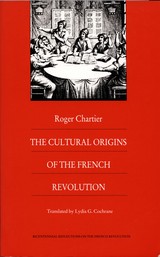 The Cultural Origins of the French Revolution
Roger Chartier
Duke University Press, 1991 Reknowned historian Roger Chartier, one of the most brilliant and productive of the younger generation of French writers and scholars now at work refashioning the Annales tradition, attempts in this book to analyze the causes of the French revolution not simply by investigating its “cultural origins” but by pinpointing the conditions that “made is possible because conceivable.”
Chartier has set himself two important tasks. First, while acknowledging the seminal contribution of Daniel Mornet’s Les origens intellectuelles de la Révolution française (1935), he synthesizes the half-century of scholarship that has created a sociology of culture for Revolutionary France, from education reform through widely circulated printed literature to popular expectations of government and society. Chartier goes beyond Mornet’s work, not be revising that classic text but by raising questions that would not have occurred to its author.
Chartier’s second contribution is to reexamine the conventional wisdom that there is a necessary link between the profound cultural transformation of the eighteenth century (generally characterized as the Enlightenment) and the abrupt Revolutionary rupture of 1789. The Cultural Origins of the French Revolution is a major work by one of the leading scholars in the field and is likely to set the intellectual agenda for future work on the subject.
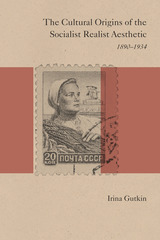 The Cultural Origins of the Socialist Realist Aesthetic: 1890-1934
Irina Gutkin
Northwestern University Press, 1999 The past fifteen years have seen an important shift in the way scholars look at socialist realism. Where it was seen as a straitjacket imposed by the Stalinist regime, it is now understood to be an aesthetic movement in its own right, one whose internal logic had to be understood if it was to be criticized. International specialists remain divided, however, over the provenance of Soviet aesthetic ideology, particularly over the role of the avant-garde in its emergence.
In The Cultural Origins of the Socialist Realist Aesthetic, Irina Gutkin brings together the best work written on the subject to argue that socialist realism encompassed a philosophical worldview that marked thinking in the USSR on all levels: political, social, and linguistic. Using a wealth of diverse cultural material, Gutkin traces the emergence of the central tenants of socialist realist theory from Symbolism and Futurism through the 1920s and 1930s.
Cultural Persistence: Continuity in Meaning and Moral Responsibility Among the Bearlake Athapaskans
Scott Rushforth
University of Arizona Press, 1991 The Bearlake Athapaskan-speaking Indians of Canada's Northwest Territories have valued industriousness, generosity, individual autonomy, and emotional restraint for many generations. They also highly esteem "control" in human thought and behavior. The latter value integrates the others in a coherent framework of moral responsibility that persists as a central feature of Bearlake culture. Rushforth here provides an ethnographic description and analysis of these beliefs and values, which considers their relationship to examples of Bearlake social behavior.
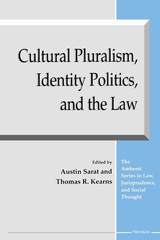 Cultural Pluralism, Identity Politics, and the Law
Austin Sarat and Thomas R. Kearns, Editors
University of Michigan Press, 2001 We are witnessing in the last decade of the twentieth century more frequent demands by racial and ethnic groups for recognition of their distinctive histories and traditions as well as opportunities to develop and maintain the institutional infrastructure necessary to preserve them. Where it once seemed that the ideal of American citizenship was found in the promise of integration and in the hope that none of us would be singled out for, let alone judged by, our race or ethnicity, today integration, often taken to mean a denial of identity and history for subordinated racial, gender, sexual or ethnic groups, is often rejected, and new terms of inclusion are sought. The essays in Cultural Pluralism, Identity Politics, and the Law ask us to examine carefully the relation of cultural struggle and material transformation and law's role in both. Written by scholars from a variety of disciplines and theoretical inclinations, the essays challenge orthodox understandings of the nature of identity politics and contemporary debates about separatism and assimilation. They ask us to think seriously about the ways law has been, and is, implicated in these debates. The essays address questions such as the challenges posed for notions of legal justice and procedural fairness by cultural pluralism and identity politics, the role played by law in structuring the terms on which recognition, accommodation, and inclusion are accorded to groups in the United States, and how much of accepted notions of law are defined by an ideal of integration and assimilation.
The contributors are Elizabeth Clark, Lauren Berlant, Dorothy Roberts, Georg Lipsitz, and Kenneth Karst.
Cultural Policy in the Polder: 25 Years Dutch Cultural Policy Act
Edwin van Meerkerk
Amsterdam University Press, 2018 At the occasion of the 25 anniversary of the Dutch Cultural Policy Act, Dutch academics in cultural policy research have compiled a volume to commemorate the quarter century in which Dutch cultural policy has developed and analyse the key debates in Dutch cultural policy for the coming years.
Historically, central public authority in the Netherlands has been problematic. The country's origin as a confederation of seven independent republics, has had effect in the sense that government usually works 'bottom up'. As a result the Netherlands has relatively few national cultural institutions when compared to other countries. Moreover, the national media never have been linked to the nation state. It is therefore surprising that the nation's cultural policy can be described as a national system in which the nation state sets the agenda rather than cities and regions.
Cultural Politics
edited by Marcy Darnovsky, Barbara Epstein and Richard Flacks
Temple University Press, 1995 Bridging the worlds of activism and academia-social movement theory informed with the real experiences of activists-this volume of accessible essays brings together insights from European New Social Movement theorists, U.S. scholars of social movements, and activists involved in social movements from the 1960s to the 1990s.
Contributors: Alice Echols, Barbara Epstein, Richard A. Cloward, Marcy Darnovsky, Jeffrey Escoffier, Ilene Rose Feinman, Richard Flacks, Cynthia Hamilton, Allen Hunter, L. A. Kauffman, Rebecca E. Klatch, Margit Mayer, Alberto Melucci, Bronislaw Misztal, Osha Neumann, Frances Fox Piven, Craig Reinarman, Roland Roth, Arlene Stein, Mindy Spatt, Andrew Szasz, Noél Sturgeon, Howard Winant.
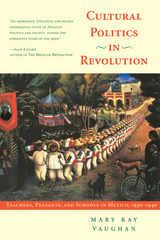 Cultural Politics in Revolution: Teachers, Peasants, and Schools in Mexico, 1930-1940
Mary Kay Vaughan
University of Arizona Press, 1997 When Indian communities of Chiapas, Mexico, rose in armed rebellion in 1994, they spoke boldly of values, rights, identities, and expectations. Their language struck a chord for most Mexicans, for it was the cultural legacy of the Revolution of 1910. Of all the accomplishments of the Mexican Revolution, its cultural achievements were among its most important. The Revolution's cultural politics accounts in part for the relative political stability Mexico enjoyed from 1940 through 1993 and underlies much of the discourse accompanying the tumultuous transitions in that country today.
To show the significance of this facet of the Revolution, Mary Kay Vaughan analyzes the educational effort of the state during the 1930s, locating it within the broader sweep of Mexican history to illustrate how the government sought to nationalize and modernize rural society. Vaughan focuses on activities in rural schools, where central state policy makers, teachers, and people of the countryside came together to forge a national culture. She examines the cultural politics of schooling in four rural societies in the states of Sonora and Puebla that are representative of the peasant societies in revolutionary Mexico, and she shows how the state's program of socialist education became an arena for intense negotiations over power, culture, knowledge, rights, and gender practices. The real cultural revolution, Vaughan observes, lay not in the state's efforts at socialist education but in the dialogue between state and society that took place around this program. In the 1930s, rural communities carved out a space to preserve their local identities while the state succeeded in nurturing a multi-ethnic nationalism based on its promise of social justice and development.
Vaughan brings to her analysis a comparative understanding of peasant politics and educational history, extensive interviews, and a detailed examination of national, regional, and local archives to create an evocative and informative study of Mexican politics and society during modern Mexico's formative years. Cultural Politics in Revolution clearly shows that only by expanding the social arena in which culture was constructed and contested can we understand the Mexican Revolution's real achievements.
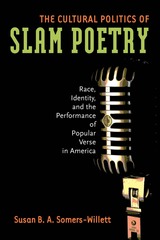 The Cultural Politics of Slam Poetry: Race, Identity, and the Performance of Popular Verse in America
Susan B. A. Somers-Willett
University of Michigan Press, 2010 "For a lucid and thorough 'real-world' analysis of the movement from the ground-up--including its history, aesthetics, and culture, there is surely no better place to start than Somers-Willett's trailblazing book."
--- Jerome Sala, Pleiades "Finally, a clear, accurate, and thoroughly researched examination of slam poetry, a movement begun in 1984 by a mixed bag of nobody poets in Chicago. At conception, slam poetry espoused universal humanistic ideals and a broad spectrum of participants, and especially welcome is the book's analysis of how commercial marketing forces succeeded in narrowing public perception of slam to the factionalized politics of race and identity. The author's knowledge of American slam at the national level is solid and more authentic than many of the slammers who claim to be."
---Marc Kelly Smith, founder/creator of the International Poetry Slam movement The cultural phenomenon known as slam poetry was born some twenty years ago in white working-class Chicago barrooms. Since then, the raucous competitions have spread internationally, launching a number of annual tournaments, inspiring a generation of young poets, and spawning a commercial empire in which poetry and hip-hop merge. The Cultural Politics of Slam Poetry is the first critical book to take an in-depth look at slam, shedding light on the relationships that slam poets build with their audiences through race and identity performance and revealing how poets come to celebrate (and at times exploit) the politics of difference in American culture. With a special focus on African American poets, Susan B. A. Somers-Willett explores the pros and cons of identity representation in the commercial arena of spoken word poetry and, in doing so, situates slam within a history of verse performance, from blackface minstrelsy to Def Poetry. What's revealed is a race-based dynamic of authenticity lying at the heart of American culture. Rather than being mere reflections of culture, Somers-Willett argues, slams are culture---sites where identities and political values get publicly refigured and exchanged between poets and audiences. Susan B. A. Somers-Willett is a decade-long veteran of slam and teaches creative writing and poetics as an Assistant Professor of English at Montclair State University. She is the author of two books of poetry, Quiver and Roam. Visit the author's website at: http://www.susansw.com/. Photo by Jennifer Lacy.
 The Cultural Politics of the New American Studies
John Carlos Rowe
Michigan Publishing, 2012 In The Cultural Politics of the New American Studies, leading American Studies scholar John Carlos Rowe responds to two urgent questions for intellectuals. First, how did neoliberal ideology use the issues of feminism, gay rights, multiculturalism, transnationalism and globalization, class mobility, religious freedom, and freedom of speech and cultural expression to justify a new “American Exceptionalism,” designed to support U.S. economic, political, military, and cultural expansion around the world in the past two decades?
Second, if neoliberalism has successfully employed various cultural media, then what are the best means of criticizing its main claims and fundamental purposes? Is it possible under these circumstances to imagine a “counter-culture” which might effectively challenge neoliberalism or is such an alternative already controlled and contained by such labels as “political correctness,” “the far left,” “radicalism,” “extremism,” even “terrorism,” which in the popular imagination refer to political and social minorities, doomed thereby to marginalization?
Rowe argues that the tradition of “cultural criticism” advocated by influential public intellectuals like Edward Said can be adapted to the new circumstances demanded by the hegemony of neoliberalism and its successful command of new media. Yet rather than simply honoring important predecessors such as Said, we need to reconceive the role of the public intellectual as more than just an “interdisciplinary scholar” but also as a social critic able to negotiate the different media.
 The Cultural Practice of Immigrant Filmmaking: The Conditions and Practices of Migrant Minor Cinemas in Sweden 1950-1990
John Sundholm and Lars Gustaf Andersson
Intellect Books, 2019 This book will be released as Open Access.
Based on a research project funded by the Swedish Research Council, this book examines 40 years of post-war independent immigrant filmmaking in Sweden. John Sundholm and Lars Gustaf Andersson consider the creativity that lies in the state of exile, offering analyses of over 50 rarely seen immigrant films that would otherwise remain invisible and unarchived. They shed light on the complex web of personal, economic, and cultural circumstances that surround migrant filmmaking, discuss associations that became important sites of self-organization for exiled filmmakers, and explore the cultural practice of minor immigrant cinema archiving. The Cultural Practice of Immigrant Filmmaking applies film theory to immigrant filmmaking in a transnational context, exploring how immigrant filmmakers use film to find a place in a new cultural situation.
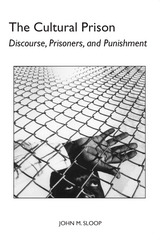 The Cultural Prison: Discourse, Prisoners, and Punishment
John M. Sloop
University of Alabama Press, 2005 The incarcerated in America's cultural imagination.
The Cultural Prison brings a new dimension to the study of prisoners and punishment by focusing on how the punishment of American offenders is represented and shaped in the mass media through public arguments. The study is based on an analysis of 642 articles collected by the author from American popular journals and magazines, as well as newspaper accounts, films, and public speeches, spanning the years 1950 to 1992. By piecing together and studying these popular narratives, he divides the history of prisoners and punishment into four eras, each marked by a shift in value system. He argues that the discourse, or rhetoric, surrounding prisoners and punishment on the public level works as a historical force that shapes contemporary culture. The author is concerned that the public seems to have an inability or unwillingness to question or resist cultural definitions of normalcy and legal behavior. He explains that ideally moral behavior should be a matter of public debate rather than of unquestioned perpetuation, and he urges increased understanding of institutional and cultural discipline and our questioning the ways in which the constitution of punishment and prisoners influences us culturally. The"cultural prison" refers to the way in which this study acts as an investigation of "the discipline of discipline"; it is an examination of the way in which discipline is shaped and formed in public discourse. The volume concludes with a fascinating account of the move to electronic means of surveillance; coupled with the representations of the prisoner along the lines of race and gender, it explains what these new techniques mean to contemporary culture.
Cultural Processes in Muslim and Arab Societies: Medieval and Early Modern Periods, Volume 14
Israel Gershoni and Ehud R. Toledano, eds.
Duke University Press This is the first installment of a series that grew out of the December 1991 Workshop on Cultural Processes in Muslim and Arab Societies held in Tel Aviv and Jerusalem. The issues employ cultural studies, anthropology, and literary theory to explore various aspects of Middle-Eastern history. Articles examine nationalism, the divisions between elite and popular culture, religious identity, gender, class formation, and the structures of political power.
Cultural Processes in Muslim and Arab Societies: Modern Period I, Volume 14
Israel Gershoni and Ehud R. Toledano, eds.
Duke University Press This is the second installment of a series that grew out of the December 1991 Workshop on Cultural Processes in Muslim and Arab Societies held in Tel Aviv and Jerusalem. The issues employ cultural studies, anthropology, and literary theory to explore various aspects of Middle-Eastern history. Articles examine nationalism, the divisions between elite and popular culture, religious identity, gender, class formation, and the structures of political power.
Cultural Processes in Muslim and Arab Societies: Modern Period II, Volume 15
Israel Gershoni and Ehud R. Toledano, eds.
Duke University Press This is the third installment of a series that grew out of the December 1991 Workshop on Cultural Processes in Muslim and Arab Societies held in Tel Aviv and Jerusalem. The issues employ cultural studies, anthropology, and literary theory to explore various aspects of Middle-Eastern history. Articles examine nationalism, the divisions between elite and popular culture, religious identity, gender, class formation, and the structures of political power.
 Cultural Producers In Perilous States: Editing Events, Documenting Change
Edited by George E. Marcus
University of Chicago Press, 1996 Ten innovative interviews explore how producers of documentary media—filmmakers, journalists, and artists—located in societies considered marginal to the high-tech global centers respond to local and international audiences in creating their works.
We meet a South African playwright who is shaping a distinctive form of activist journalism; a New Guinean producer who manages several media careers; Polish and German filmmakers developing critical documentaries on compromised new orders; a Columbian artist who provides powerful representations of endemic violence in her society; and writers from Martinique and Argentina with varied careers in the arts, media, and politics who provide tragicomic accounts of the marginal situations of their societies.
Cynical, hopeful, ambivalent all at once, these cultural producers in perilous states share a keen awareness of the marginality of their societies in the broader context of global change, and associate integrity in the reporting of local events with a critical politics of representation.
 Cultural Production of Hallyu in the Digital Platform Era: Industry Perspectives
Dal Yong Jin
University of Michigan Press, 2025 Cultural Production of Hallyu in the Digital Platform Era explores how histories, industry structures, and politics interact in the platformization of the Korean Wave. Dal Yong Jin argues that while much research centers on the Korean culture takeover and the dominance of Korean products on premier global media platforms, Korean cultural industries also experience reshaping and changing depending on the platforms, often on the global stage.
Addressing the increasing significance of digital platforms, this work examines the transformative roles of over-the-top streaming services—Netflix, Viki, and V Live—video-sharing platforms such as YouTube, and social media platforms such as TikTok and Instagram, and the power relations between content producers, information technology sectors, the government, creative laborers, and audiences in the globalization of Korean culture and media. By developing critical cultural industries studies as a new theoretical framework, Cultural Production of Hallyu in the Digital Platform Era explores the ever-growing Korean Wave phenomenon with the advent of global digital platforms.
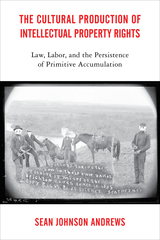 The Cultural Production of Intellectual Property Rights: Law, Labor, and the Persistence of Primitive Accumulation
Sean Johnson Andrews
Temple University Press, 2019 The protection and accumulation of intellectual property rights—like property rights in general—is one of the most important contemporary American values. In his cogent book, The Cultural Production of Intellectual Property Rights, Sean Johnson Andrews shows that the meaning, power, and value of intellectual properties are the consequence of an extended process of cultural production. Johnson Andrews argues that it is deeper ideological and historical roots which demand that, in the contemporary global, digital economy, all property rights be held sacrosanct and all value must flow back to the legal owner. Johnson Andrews explains that if we want to rebalance the protection of copyrights and trademarks, we should focus on undermining the reified culture of property that underpins capitalism as a whole. He outlines a framework for analyzing culture; situates intellectual property rights in the history of capitalist property relations; synthesizes key theories of media, politics, and law; and ultimately provides scholars and activists a path to imagining a different future where we prioritize our collective production of value in the commons.
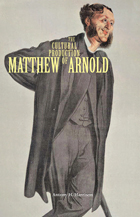 The Cultural Production of Matthew Arnold
Antony H. Harrison
Ohio University Press, 2009 The career of Matthew Arnold as an eminent poet and the preeminent critic of his generation constitutes a remarkable historical spectacle orchestrated by a host of powerful Victorian cultural institutions. The Cultural Production of Matthew Arnold investigates these constructions by situating Arnold’s poetry in a number of contexts that partially shaped it. Such analysis revises our understanding of the formation of the elite (and elitist) male literary-intellectual subject during the 1840s and 1850s, as Arnold attempts self-definition and strives simultaneously to move toward a position of ideological influence upon intellectual institutions that were contested sites of economic, social, and political power in his era. Antony H. Harrison reopens discussion of selected works by Arnold in order to make visible some of their crucial sociohistorical, intertextual, and political components. Only by doing so can we ultimately view the cultural work of Arnold “steadily and … whole,” and in a fashion that actually eschews this mystifying premise of all Arnoldian inquiry which, by the early twentieth century, had become wholly naturalized in the academy as ideology.
Cultural Psychology: A Once and Future Discipline
Michael Cole
Harvard University Press, 1998 The distinguished psychologist Michael Cole, known for his pioneering work in literacy, cognition, and human development, offers a multifaceted account of what cultural psychology is, what it has been, and what it can be. A rare synthesis of the theory and empirical work shaping the field, this book will become a major foundation for the emerging discipline.
Cultural Quarters: Principles and Practice
Edited and Written by Simon Roodhouse
Intellect Books, 2010 The much-praised Cultural Quarters returns in a revised edition, offering new case studies and new chapters on the economics of cultural quarters and the importance of historical buildings. This definitive text provides a conceptual context for cultural quarters through a detailed discussion of urban design and planning. Drawing on several case studies (from Bolton, Birmingham, Ireland and Vienna), Cultural Quarters positions the emergence of specific cultural areas within a historical and social context and explores the economics of maintaining the respective districts. The book offers a concise illustration of how cultural practice is maintained and expanded within an urban environment.
 Cultural Quarters: Principles and Practice
Simon Roodhouse
Intellect Books, 2006 This definitive book provides a conceptual context for cultural quarters through a detailed discussion concerning the principles of urban design and planning. To examine these issues, the book presents several case studies drawn from Northern England, Ireland and Vienna to position the emergence of specific cultural areas within a historical and social context and the economics of maintaining the respective districts.
Extending this investigation, the author provides an explicit analysis of Bolton Borough Council’s moves towards establishing a cultural sector in the town centre, with references to previous funding models employed by Birmingham City Council and the British Museum. The book offers a concise illustration of how cultural practice is maintained and expanded within an urban environment. This single volume, packed with detail, can be used in higher education courses to support the study of cultural policy, management and regeneration.
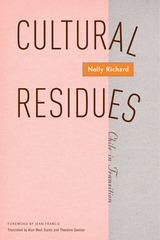 Cultural Residues: Chile In Transition
Nelly Richard
University of Minnesota Press, 2004 A complex portrait of postdictatorial Chile by one of that country’s most incisive cultural critics, this book uses memoirs, photographs, the plastic arts, novels, and other texts—the “residues” of a culture—to analyze the political-cultural Chilean landscape in the wake of Augusto Pinochet’s seventeen-year military rule. Such residual areas reveal the flaws and lapses in Chile’s transition from violent military dictatorship to electoral democracy. Nelly Richard's analysis ranges from an exploration of false memories of the recent past—especially memories of violence—to a discussion of the university under neoliberalism; from debates about the use of the word “gender” to an examination of refractory texts and cultural activities such as Diamela Eltit’s “testimonio” of a schizophrenic vagabond, Eugenio Dittborn’s use of photography in art installations, and transvestite performances. In Cultural Residues, each instance becomes a suggestive metaphor for understanding a rapidly modernizing Chile attempting to re-democratize its public life.
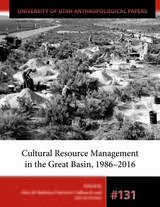 Cultural Resource Management in the Great Basin 1986–2016
Alice M. Baldrica, Patricia A. DeBunch, and Don D. Fowler
University of Utah Press, 2019 University of Utah Anthropological Paper No. 131
Cultural Resource Management (CRM) refers to the discovery, evaluation, and preservation of culturally significant sites, focusing on but not limited to archaeological and historical sites of significance. CRM stems from the National Historic Preservation Act, passed in 1966. In 1986, archaeologists reviewed the practice of CRM in the Great Basin. They concluded that it was mainly a system of finding, flagging, and avoiding—a means of keeping sites and artifacts safe. Success was measured by counting the number of sites recorded and acres surveyed.
This volume provides an updated review some thirty years later. The product of a 2016 symposium, its measures are the increase in knowledge obtained through CRM projects and the inclusion of tribes, the general public, industry, and others in the discovery and interpretation of Great Basin prehistory and history. Revealing both successes and shortcomings, it considers how CRM can face the challenges of the future. Chapters offer a variety of perspectives, covering highway archaeology, inclusion of Native American tribes, and the legacy of the NHPA, among other topics.
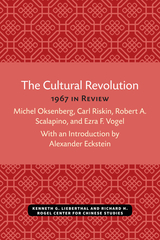 The Cultural Revolution: 1967 in Review
Michel Oksenberg, Carl Riskin, Robert A. Scalapino, and Ezra F. Vogel; with an Introduction by Alexander Eckstein
University of Michigan Press, 1968 The Chinese Communist system was from its very inception based on an inherent contradiction and tension, and the Cultural Revolution is the latest and most violent manifestation of that contradiction. Built into the very structure of the system was an inner conflict between the desiderata, the imperatives, and the requirements that technocratic modernization on the one hand and Maoist values and strategy on the other. The Cultural Revolution collects four papers prepared for a research conference on the topic convened by the University of Michigan Center for Chinese Studies in March 1968. Michel Oksenberg opens the volume by examining the impact of the Cultural Revolution on occupational groups including peasants, industrial managers and workers, intellectuals, students, party and government officials, and the military. Carl Riskin is concerned with the economic effects of the revolution, taking up production trends in agriculture and industry, movements in foreign trade, and implications of Masoist economic policies for China’s economic growth. Robert A. Scalapino turns to China’s foreign policy behavior during this period, arguing that Chinese Communists in general, and Mao in particular, formed foreign policy with a curious combination of cosmic, utopian internationalism and practical ethnocentrism rooted both in Chinese tradition and Communist experience. Ezra F. Vogel closes the volume by exploring the structure of the conflict, the struggles between factions, and the character of those factions.
The Cultural Revolution and Post-Mao Reforms: A Historical Perspective
Tang Tsou
University of Chicago Press, 1986 "Tsou, one of the country's senior and most widely respected China scholars, has for more than a generation been producing timely and deeply informed essays on Chinese politics as it develops. Eight of these (from a wide variety of sources) are gathered here with a substantial new introduction. Tsou considers events not simply from the point of view of a widely read political scientist (even political philosopher) and a concerned Chinese, but also in the light of history, the dynamics of Marxism-Leninism, individual personalities, and humane realism."—Charles W. Hayford, Library Journal
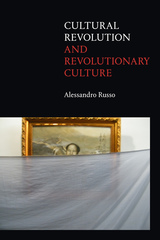 Cultural Revolution and Revolutionary Culture
Alessandro Russo
Duke University Press, 2020 In Cultural Revolution and Revolutionary Culture, Alessandro Russo presents a dramatic new reading of China's Cultural Revolution as a mass political experiment aimed at thoroughly reexamining the tenets of communism. Russo explores four critical phases of the Cultural Revolution, each with its own reworking of communist political subjectivity: the historical-theatrical “prologue” of 1965; Mao's attempts to shape the Cultural Revolution in 1965 and 1966; the movements and organizing between 1966 and 1968 and the factional divides that ended them; and the mass study campaigns from 1973 to 1976 and the unfinished attempt to evaluate the inadequacies of the political decade that brought the Revolution to a close. Among other topics, Russo shows how the dispute around the play Hai Rui Dismissed from Office was not the result of a Maoist conspiracy, but rather a series of intense and unresolved political and intellectual controversies. He also examines the Shanghai January Storm and the problematic foundation of the short-lived Shanghai Commune. By exploring these and other political-cultural moments of Chinese confrontations with communist principles, Russo overturns conventional wisdom about the Cultural Revolution.
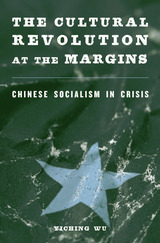 The Cultural Revolution at the Margins: Chinese Socialism in Crisis
Yiching Wu
Harvard University Press, 2014 Mao Zedong envisioned a great struggle to "wreak havoc under the heaven" when he launched the Cultural Revolution in 1966. But as radicalized Chinese youth rose up against Party officials, events quickly slipped from the government's grasp, and rebellion took on a life of its own. Turmoil became a reality in a way the Great Leader had not foreseen. The Cultural Revolution at the Margins recaptures these formative moments from the perspective of the disenfranchised and disobedient rebels Mao unleashed and later betrayed.
The Cultural Revolution began as a "revolution from above," and Mao had only a tenuous relationship with the Red Guard students and workers who responded to his call. Yet it was these young rebels at the grassroots who advanced the Cultural Revolution's more radical possibilities, Yiching Wu argues, and who not only acted for themselves but also transgressed Maoism by critically reflecting on broader issues concerning Chinese socialism. As China's state machinery broke down and the institutional foundations of the PRC were threatened, Mao resolved to suppress the crisis. Leaving out in the cold the very activists who had taken its transformative promise seriously, the Cultural Revolution devoured its children and exhausted its political energy.
The mass demobilizations of 1968-69, Wu shows, were the starting point of a series of crisis-coping maneuvers to contain and neutralize dissent, producing immense changes in Chinese society a decade later.
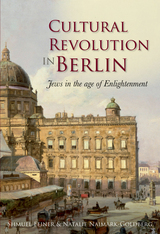 Cultural Revolution in Berlin: Jews in the Age of Enlightenment
Shmuel Feiner and Natalie Naimark-Goldberg
Bodleian Library Publishing, 2011 The Enlightenment, which marked a social and philosophical turn away from religion and toward science and reason, swept across Europe in the eighteenth century, and these civil and rational values were embraced byJewish intellectuals, bringing about a cultural revolution within traditional Jewish society. The story of this transformation is presented here through a close look at the works held in the Leopold Müller Memorial Library of the Oxford Centre for Hebrew and Jewish Studies, which was the private library of Leopold Zunz, the father of the “Science of Judaism.” As Shmuel Feiner and Natalie Naimark-Goldberg reveal in this insightful and approachable history, the Jewish Enlightenment (Haskalah) was a multifaceted movement, articulated in many different ways in the varied settings where Jews lived. Rather than providing a comprehensive story of the Haskalah, Feiner and Naimark-Goldberg use these impressive literary treasures to trace the cultural transformation that took place mainly in Germany, from its moderate and scattered beginnings in the early 1700s, through the height of the movement in the second half of the eighteenth century, until its final stage around 1800, when the Haskalah began to give way to new movements and ideologies. Richly illustrated with images of eighteenth-century manuscripts, books, and pamphlets, Cultural Revolution in Berlin provides an excellent guide to the significant cultural metamorphosis brought about by the Jewish Enlightenment.
Cultural Security in Contemporary China and Mongolia
Jarmila Ptácková
Amsterdam University Press, 2025 Cultural Security in Contemporary China and Mongolia applies the term “cultural security” not exclusively to state- or institution-implemented processes, but also considers the indigenous, bottom-up, and inside-out mechanisms of establishing and maintaining communal cultural security of an ethnic group. Markers of cultural identity differ according to an inside and outside perspective and can be re-defined according to inner or outer circumstances. Importance of these markers increases when a community feels endangered in their cultural existence, or diminishes when perceived cultural identity is not questioned. The dynamics shaping cultural security are illustrated in examples of ethnic communities in the People’s Republic of China and in Mongolia.
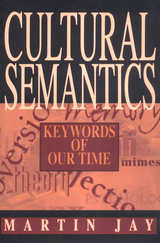 Cultural Semantics: Keywords of Our Time
Martin Jay
University of Massachusetts Press, 1998 A selection of Martin Jay's recent writings on contemporary thought and culture, this is a book about ideas that matter—and about why ideas matter. Borrowing from Flaubert's notion of a dictionary of "received ideas" and Raymond Williams's explorations of the "keywords" of the modern age, Jay investigates some of the central concepts by which we currently organize our thoughts and lives. His topics range from "theory" and "experience" to the meaning of "multiculturalism" and the dynamics of cultural "subversion." Among the thinkers he engages are Bataille and Foucault, Adorno and Lacoue-Labarthe, Walter Benjamin, Christa Wolf, and Jean-François Lyotard.
By looking closely at what "words do and perform," Jay makes us aware of the extent to which the language we use mediates and shapes our experience. By helping to distance us from much that we now take for granted, he makes it difficult for us to remain comfortably certain about what we think we know.
Elegantly written and richly insightful, this is a work of cultural criticism and intellectual analysis of the first order.
|
|
